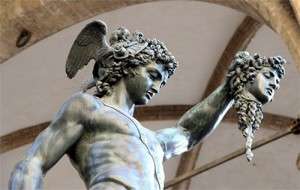
Question. Head of the 'corner' in relation to horizontal/vertical? Clue. Which of the two would 'wings' represent? Question 2. Why represent anything at all?
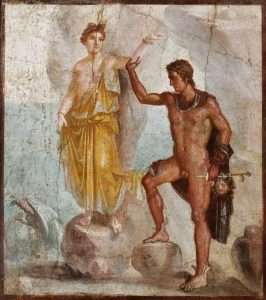
Stepping stones? 'Silk' to enlarge.
As one example: "The constellation of Perseus has been depicted as a 'warrior' since time immemorial, so it is not surprising that in the Iliad it is represented by Diomedes, one of the most powerful fighters in the Greek army. His deeds of derring-do and Homers descriptions of his body and clothing give a graphic picture of Perseus with particular emphasis on the long 'legs' and 'feet' and the 'shoulders', 'arms', 'stomach' and 'heart' of the constellation. Without astronomical instruments it is probably impossible to determine whether or not stars at the foot of Perseus lie just inside the zodiac, home of the gods that in the Iliad represent the moon and five planets visible to the naked eye. If the stars were in the zodiac, the epithet 'god like' could have been given to the constellation. Homer raises this problem in ingenious fashion, but his conclusions are not decisive. He puts his opinion into the words of Glaucus and of Pandarus, who says he cannot tell whether Diomedes {Perseus} is a god or not, but even if he is not - 'he has some god by his side who is shrouded in a cloud of darkness'. This refers to Athene, the planet Jupiter..."
Therefore from a 'southern' perspective? i.e.,try Athene on all pages together with that relationship {connection?} to Perseus. All as a means...?
'Mysteries of the Dark Moon' / D. George.
Side note: Highlighted aspects in relation to ''Cloud of Unknowing'' and that 'box' that was continually by 'their side' - as represented in the Hebrew culture i.e.,that universal potential present, but dormant? Hence...
"In the same manner and for the same reasons that Agamemnon berates Odysseus during his tour of inspection, the Greek commander-in-chief also admonishes Diomedes for not being in the front line of the action...['Homer's Secret Iliad']. Try ''struggle'' - its intent and purpose.
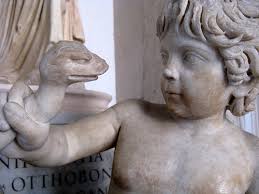
The 'young' boy - Hercules.

Static or dynamic?
As seen from a different perspective: "Heru or Hor [Horus] is depicted as a man with the head of a Falcon. Heru is the origin of the Greek word "hero", the subject of many myths. Heru translates as..."The face of the Falcon" and states it was originally conceived as the principle of the boy, the undeveloped 'young' male who becomes the realized man, the initiate who has passed and survived the major trials and tests of obtaining a degree of self awareness. Heru later became the symbol of the king in dynastic Egypt. The Falcon is seen as the most realized bird, a champion of the skies, the swiftest of aviary flight. The Falcon, Hawk, eagle and all other raptors are considered the 'lords' of the sky and have been the symbols of king-ship for thousands of years". [Chapter six. 'From Light into Darkness'. S. Mehler].
An objective view?
Think about it, in relation to the 'face of Tutankhamun', and its headdress. Both separate 'objects'. Representing a further development within an understanding. ['Ultimate Tutankhamun'. National Geographic or 'History' Channel. December 2013].
Side note: Jamie Lannister? {Knight of the Kingsguard and 'younger' link}. Game of Thrones.
Continued: "....this has been likened to grasping a snake, previously asleep in the sunlight. Once we have grasped it, we awaken it and must then engage in a constant battle {and/or ''struggle''} with 'it', grasping it ever tighter, lest it escape and bite us..." All as a representation of something - an inner something, i.e.,'Kundalini' in relation to the 'spine'. The backbone of something - As represented {Macro} with the backbone of the Great Bear - one needs to {possess?} the same, in order to learn something - ANYTHING - different symbols used because of its 'spiritual' content {i.e., in relation to the 'divine' bit} - another of which is the 'snake'. Getting it?
www.constellationsofwords.com/ursamajor
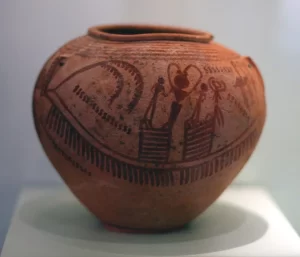
Snake forms?
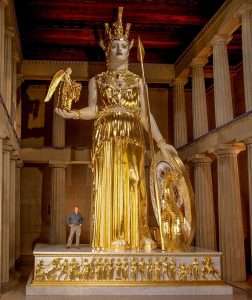
Sacred snake at foot of shield. 'Foundation' of Athens? Inner/Outer. Male/Female. Which and why? Snake = common factor. Why?
Maya equivalent? "An inscription on the top of Altar Q at Copan tells how the founder then known as K'uk Mo Ajaw, travelled from far off and , on 5 September 426 CE, is said to have taken K'awil {kingship} - ''in the sense of grasping a scepter in the form of the snake footed deity, thereby marking a transition to regal status.''
Three days later, now carrying his full royal name K'inich Yax K'uk Mo, he comes to the wi te ' naah, which may translate as ''Root House'', a structure linked to the foundation of dynasties...
The location of the ''Root House'' is not mentioned but its distance from Copan is implicit in the 153 days it took to arrive at Ox Witik, the principle place name of Copan." [ www.ancient.eu/yax_k'uk_mo]. Try ''153'' and ''house'' and ''oxen''.
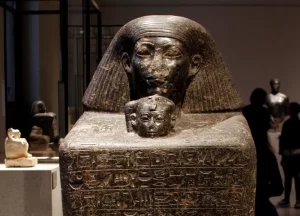
Neferure or Neferura (Ancient Egyptian: Nfrw-Rꜥ, meaning The Beauty of Re) was an Egyptian princess of the Eighteenth Dynasty of Egypt. She was the daughter of two pharaohs, Hatshepsut and Thutmose II. She served in high offices in the government and the religious administration of Ancient Egypt.
Side note: Horns of Consecration is a term coined by Sir Arthur Evans[1] for the symbol, common in Minoan civilization, that is usually thought to represent the horns of the sacred bull. Evans said they were "a more or less conventionalised article of ritual furniture derived from the actual horns of the sacrificial oxen".....The porous limestone horns of consecration on the East Propyleia at Knossos (illustration, right) are restorations...
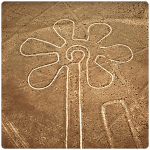
Dried flowers found between the brow of the golden child - Tutankhamun.
Horns of consecration in stone or clay were placed on the roofs of buildings in Neopalatial Crete, or on tombs or shrines, probably as signs of sanctity of the structure.[3] The symbol also appears on Minoan sealstones,[4] often accompanied by the labrys (double axe) and bucranium (decorative bull skull sculpture), which are part of the iconography of Minoan bull sacrifice. Horns of consecration are among the cultic images painted on the Minoan coffins called larnakes, sometimes in isolation; they may have flowers between the horns, or the labrys.[5]
A suggestion for a practical use for the large examples on the top of buildings, is that they were used as frames for sighting the movements of heavenly bodies, for example the constellation of Orion, which may have represented the "young god" of Minoan religion....Evans compared the Horns of Consecration with the four "horns of the altar" of Hebrew ritual,[7] and with the altar with a horned cult object depicted on the stele from Teima in northern Arabia, now conserved at the Louvre.[8]
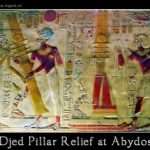
''Raising''?
Continued: The location of the ''Root House'' is not mentioned but its distance from Copan is implicit in the 153 days it took to arrive at Ox Witik, the principle place name of Copan." [ www.ancient.eu/yax_k'uk_mo]. Try ''153'' and ''house'' and ''oxen''.
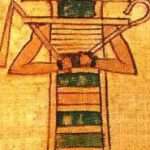 Brazen Serpent?
Brazen Serpent?
And/or: ''.....there was something religious and sacrificial about the 'death' of a Pharaoh. Spiegelberg has already pointed out that Cleopatra gained apotheosis through a snake bite.'' [Page 50 'The Sky-Religion of Egypt' / G. Wainwright].
'A Man Seen Afar' / Wellesley Tudor Pole and R. Lehmann.
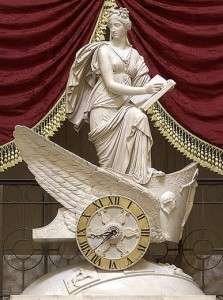
Question. What 'number' represents the 'Muse' ?

Snake forms?
A side step: "One of the symbolic animals that the early Christians adopted with the most certainty as an allegorical image of Christ, and also of his disciple, the Christian, was the stag. Poets and naturalists of ancient times, such as Pliny, Theophrastus, Xenophon, Martial, Lucretius, and many others, portrayed the stag as the implacable enemy of snakes, pursuing them relentlessly into their holes. Martial and Plutarch add that with the 'breath' of its nostrils - some say, of its mouth - the stag would drive the snakes from their underground hiding holes and devour them, and that in this way, its 'youth' was renewed. Reflecting this ancient belief, a Roman marble relief from the Naples Museum shows a stag fighting with a snake. The stag has fallen on its 'knees', but it has succeeded in seizing it's enemy's head in its mouth and is crushing it between its 'teeth'. In Afghanistan today there is a species of deer or goat family that attacks serpents and often eats them. The Persians called these animals ''pausens.'' The last Mazdeans living in that region consider the dual between pausen and snake as the allegorical image of the triumph of good ''Ohrmazd,'' over evil, ''Ahriman.'' Medieval manuals are full of accounts of the stag's ingenuity, of forcing his enemy from his 'hiding place'... Thus making the stag the symbol of the 'triumphant' Christ...There is a concept in Europe which i think is even older than the tradition of the stag's hatred for the serpent, which relates the stag to the idea, or one might say the cult, of 'light'. Pre-Mycenaean art quite often shows a stag harnessed to a solar 'chariot'. According to Dechelette, it seems that the idea of the stag sharing this privilege with the 'horse' is also echoed in Greek mythology, which consecrates the stag to Artemis, born with her brother Apollo on the island of Delos and sharing his nature. We also know that the fawn was a special symbol attributed to Apollo, who was himself the god of light... " [From the book 'The Bestiary of Christ' by Louis Charbonneau - Lassay. Emphasis, this readers].
Recall the Hebrew equivalent - Lucifer {snake?} = ''light bringer''.
"Every light casts a shadow" ['The Zelator'].
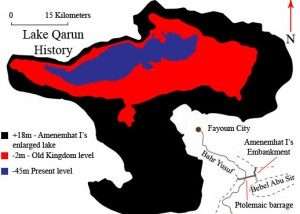 Side note: ''I am the wind that blows across the sea; I am the wave of the deep; I am the roar of the ocean; I am the stag of seven battles; I am the hawk on the cliff; I am the ray of sunlight; I am the greenest of plants; I am a wild boar; I am a salmon in a river; I am a lake on a plain; I am the word of knowledge; I am the point of a spear; I am the lure beyond the ends of the earth; I can shift my shape like a god.'' ['The Song of Amergin' / Ancient Irish Text].
Side note: ''I am the wind that blows across the sea; I am the wave of the deep; I am the roar of the ocean; I am the stag of seven battles; I am the hawk on the cliff; I am the ray of sunlight; I am the greenest of plants; I am a wild boar; I am a salmon in a river; I am a lake on a plain; I am the word of knowledge; I am the point of a spear; I am the lure beyond the ends of the earth; I can shift my shape like a god.'' ['The Song of Amergin' / Ancient Irish Text].
Duration 'Six' minutes.
''Shift my 'shape' like a god.'' = 'Snake'?
'Tale of the Shipwrecked Sailor'.
Continued: Egyptian equivalent: Osiris and Set? As a means...?
N.B. 'Doe' and 'Bee' used throughout the book: 'Discourse of Fire and Salt' / Blaise de Vigenere.
Side note: "Adam and Eve are estimated to have been 'created' in 4004 BC. This date was advanced by Archbishop James Usher during the 17th century and subsequently supported by a man named John Lightfoot. Lightfoot took it to another level by stating that ''not only were they created in 4004 BC - they were created on October 23rd at 9 in the morning." How he arrived at this date is as much a mystery now as it was when he was alive, yet it is still accepted as being sound." [Chapter 3 from the book 'The Meaning of Hotep' / Anpu Unnefer Amen].
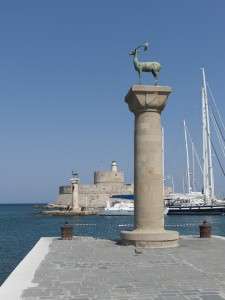
Pillars either side of the harbour at Rhodes Island S/E Greece. But N/E of Crete where 'Zeus 'was born. That link to the word ''illumination''. Also Rhodes a link to the word ''rose''. Coincidence?
Question. 23 minutes to nine?
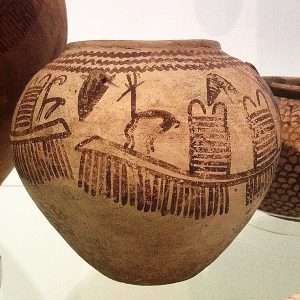
A leap across a gap?
Continued: Understanding the above - because of those universal constants - gives a clearer {deeper?} meaning to: "The significance of the deer is as follows; in classical times Rhodes island was said to be overrun with snakes, many of them poisonous. The non-indigenous deer were introduced to the island to combat the reptiles, but it’s unclear as to how they actually performed their role. Some say the snakes were trampled to death, others mention that the deer actually ate the snakes, they impaled them on their antlers or repelled them with the odour of their urine whilst a more believable option is the one that suggests the snakes were poisoned by consuming deer droppings. Whichever (if any) is true, the deer were certainly effective as the island’s snake population is now diminished and they present no real threat to humans. All-in-all, the Rhodian deer have led a chequered past; it is said they all died out shortly after dispatching the snake population and as such, were re-introduced by the Knights of St John in medieval times. This allowed the deer to flourish but during the Ottoman rule of the island, they were hunted to extinction and none remained until the Italians re-introduced them again in the 1930s."
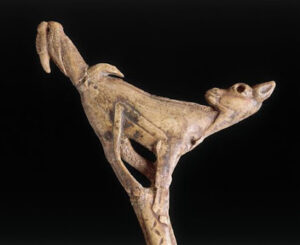
Hooked tail end? Droppings?

Spears and arrows. Lozenge floor?
N.B. "Rhodes is the largest of the Dodecanese { 'twelve' link} Islands of Greece in terms of land area and also the island group's historical capital." [Wiki].
'King'/'Queen' link?
The Harbour of Khufu? ['Treasures Decoded: The Great Pyramid of Giza' / History Channel 2014].
Try 144
From a different perspective: ''This foundation Stone of the Anthroposophical Society was formed at the Xmas Conference 1923.....Reflection upon the geometrical attributes of the dodecahedron will show how the original foundation stone lives again in the Foundation Stone verses contained in this book.'' [Introduction: 'The Foundation Stone Meditation' / R. Steiner].
''23'' ?
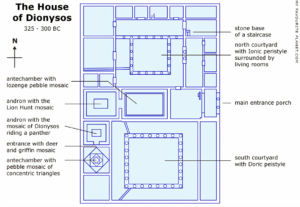
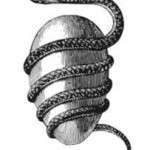
Inner/outer. A beginning or end?
Side note: EGGS WITH DARTS - This is a common design for the edges of tombstones or as a frieze, symbolizing the resurrection after death. The egg symbolized "life and birth" while the dart or arrow symbolize "death".....
As a result, egg and dart became a recurring motif of home furnishings throughout the 18th and 19th centuries appearing in bookcases, commodes and cabinets, chairs, mirrors, tables, and fireplaces.
Hestia?
Egg-and-dart enrichment of the ovolo molding of the Ionic capital was used by ancient Greek builders, so it is found in ancient Greek architecture (e.g., the Erechtheion at the Acropolis of Athens), was used later by the Romans and continues to adorn capitals of modern buildings built in Classical styles
 And/or: "...we journeyed a few miles to Ynys Ddraig - the legendry island off the far Southern shores of Dumnonia, known since the beginning of time as 'Dragons Isle'. Just why this was so, I do not know; Merlyn had merely said that there were no serpents known to exist there now, and that was it. And now we had been traveling hard...as the Druid was determined to reach the Holy Isle before Samhain celebrations began." [Page 260 Douglas Monroe book].
And/or: "...we journeyed a few miles to Ynys Ddraig - the legendry island off the far Southern shores of Dumnonia, known since the beginning of time as 'Dragons Isle'. Just why this was so, I do not know; Merlyn had merely said that there were no serpents known to exist there now, and that was it. And now we had been traveling hard...as the Druid was determined to reach the Holy Isle before Samhain celebrations began." [Page 260 Douglas Monroe book].
Recall the position of Rhodes.
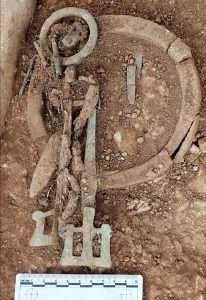
Ivory bag rings have been found in more than 70 cemeteries across southern, central, and eastern England dating to between the late-5th and 7th centuries AD. These rings are most frequently found in richly furnished female graves, and would have served as the framework for bags that hung at the waist. Debate over the source of this ivory has prevailed since the 19th century, with walrus and mammoth ivory considered as possible contenders to elephantid ivory. Recent excavations at an early Anglo-Saxon cemetery in Scremby, Lincolnshire revealed a number of elaborate female burials containing such bag rings....Through a multi-methodological approach, we have established that the ivory used for the Scremby bag rings came from elephants living in an area of young volcanic rocks in Africa at some point during the 5th and 6th centuries AD.
Coincidence or a meaningful one? Put those keys together {i.e., ''deer/stag'' / ''S/E'' / ''HARBOUR'' etc}, to 'see' something other than the obvious.
Harbour at Christchurch?
'Safe harbour'. What does it imply?
Square of Pegasus?
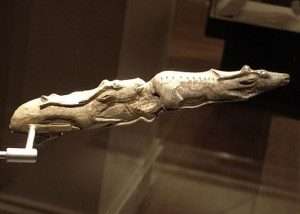
Female in front. Male behind. Made from the TIP of a mammoth tusk of ivory.
The Aveyron (French pronunciation: [aveʁɔ̃] ; Occitan: Avairon) is a 291 km long river in southern France, right tributary of the Tarn.[1] It rises in the southern Massif Central, near Sévérac-le-Château.
In 1855 evidence of prehistoric man was found near Bruniquel under a hill called Montastruc. The hill was 98 foot high. The account said the overhang extended for about 46 feet along the river and the area enclosed was 298 square yards. Within this cave was found the 13,000-year-old sculpture called Swimming Reindeer.[2]
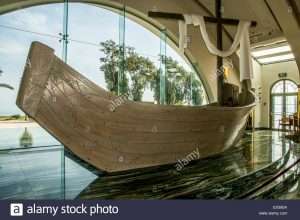
Representing the harbour within Magdala. The home of Mary Magdalene.
A working example: "The earliest serviceable harbours of Athens were situated on the east coast of Attica and arrivals of Dionysus are reported in connection with the wine growing mountain villages first in the eastern coastal region and then in the west, near the Boeotian border. There is no indication that the arrival in the west was connected with political changes known in the historical period, but it probably marked the beginning of the second phase {'Second to None?} of the gods presence in Athens {i.e., 'city' / 'village/rural' links}."
Second Nature?
And/or: " Only in one work - a relatively late one - does a 'whip stroke' give an intimation of the symbolic sacrifice....In a large tomb on Isola Sacra, the cemetery of the harbour of Rome, we find, with other mythological scenes, representations of the initiation of the boy Dionysos. This is shown in four scenes adorning four wall niches." [Pages 146/375 'Dionysos' / C. Kerenyi].

Aspect of a 'tower'?
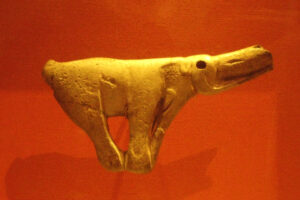
The Mammoth spear thrower is a spear thrower in the form of a mammoth - made from reindeer antler - discovered at the "Montastruc rock shelter" in Bruniquel, France. It is from the late Magdalenian period and around 12,500 years old. Found close by to the "two swimming reindeers".
Side note: ''The unbelieving reader may perhaps laugh at me for dwelling on the praises of mere women; yet if he will but remember how women followed our lord saviour and ministered to him of their substance, and how the three Mary's stood before the cross; especially Mary Magdalene - called the tower - was first to 'see' the risen Christ.....Mary the 'virgin' mother, recieved Jesus in the womb. Mary, the Magdalene, was witness to the empty tomb....'' [Pages 88/89 'Mary Magdalene' / J. Ristine].
Refresher: ''In Greek myth the female followers of Dionysus were able to charm snakes.''
And/or: ''Should we therefore decide to meet the demands of this 'higher being of light' {guardian of the gate?}, we will be able to contribute to the liberating of the human race. We will then offer up our 'gifts' and talents on the sacrificial altar of humanity. But if we prefer our own premature ascent....'' [Page 204 'How to Know Higher Worlds' / R. Steiner].
Uas sceptre?
Copper Scrolls?
Continued: At the house of Semachos the god was received by women. The mythical account is appropriate to the circumstances, since women played the leading role in the Dionysus cult. It was expressly added that the priestesses of Dionysus were the successors of the daughters of Semachos. Another version mentions only one daughter who received a deer skin from the 'god' as a present. This was more than the gift of a special kind of garment. It also indicates the bestowal of a rite in consequence of which the deer skin could be worn..." [Page 147 same book].
"Mayan rulers associated themselves with the 'image of a deer'. " Recall those monuments with external 'serpents'. Coincidence or a meaningful one? Enlarged elsewhere.
Question. Link to the word 'leap' ?
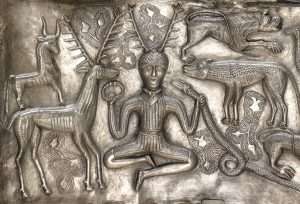
Gateway to the soul?
Side note: Nothing but deer antlers found in the ditch surrounding Stonehenge. That external one. The one that began it all - PRIOR to the erection {'creation'? i.e., in the metaphysical SENSE of the word} of those original ''blue stones''. That came from the 'west'. Looking from the outside in. Towards the 'east'. Similar to the ''axe heads'' -that are mostly found on the outside of the Sarsen stone. ''Blue'' in relation to 'fire'. Sarsen in relation to 'water' i.e., a glacial bi-product. Mountain in relation to Valley - ''Westward leading still PROCEEDING - guide us to thy perfect light.''
Try Labyrinth to enlarge. And/or '23'.
Part 1 / 2:1.....
'Mans Search for Meaning' / Viktor Frankl.
Understanding the above explains why stag antlers {'Red' deer} were used to remove 'black flint' tens of meters below ground level - in such areas as Grimes caves, i.e., behind a ridge; at the beginning of a 'journey' - just off the beaten track - along the Icknield Way { Peddlar's Way. Enlarged elsewhere} - As speculated on in such programs as 'Britain's Ancient Tracks' narrated by T. Robinson.
'Ridge of the mind'?
Question. Male/female antlers?
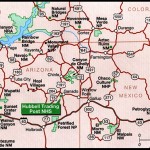
'The Four Corners' {S/W}. Question. Head of the corner?
South American {Indian} equivalent?..."So we were on the road again. Ahead of us lay the long, mesmerizing ride to Page, Arizona, to the upper reaches of the Grand Canyon. Here we would create our final ceremony. But first, we would spend the afternoon and early evening at a unique natural cathedral known as Antelope Canyon, where we would meet with Davlin, a Navajo shaman whose fierce protectiveness of his people would provide us with our last test of faith...Antelope Canyon is so sacred to the Navajo that visitors are allowed in only when accompanied by Native guides...Back outside as we were getting ready to be driven back, Davlin pointed up at a snake shape on the wall of Antelope Canyon's entrance and began to tell us about it. He illustrated each detail of what he was saying by pointing up at the snake's shape, moving his finger along the forty-foot formation.'' ['Serpent of Light Beyond 2012'].
Conversation between T. Robinson and P. Harding {'Time Team' archaeologist}...
T.R..."What i don't understand Phil, is - you can find loads of flint on the surface, so why dig out these complex series of shafts {'wells'?} and galleries?"
P.H..."There's got to be something that drives them to do it."
T.R..."Its like there building the underworld, isn't it?"
P.H..."It could well be that - but its also the fact that the objects that come out of these {mines?} would in themselves be special, revered and respected.
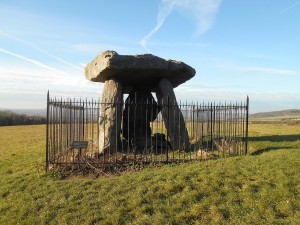
Kits Coty House. One of 'seven' Sarsens found in the widest 'gap' along the Pilgrims Way - The Medway Gap. Question. 'Coarse' or 'subtle'? As a means...?
Side note: ''The excavations revealed three holloways, all of which were described as having flint metalling. The earliest of these had a slightly different alignment to the later holloways. The later two aligned with the course of the present Pilgrim's Way....Also revealed was the body of an Anglo-Saxon woman that had been buried at the crossroads." [Pages 52/53 of the book by Derek Bright].
Follow the title or author to {discover?} something else. A mind set?
Refresher: ''The symbol of the 'lower' Will is the altar''
Barnabas?
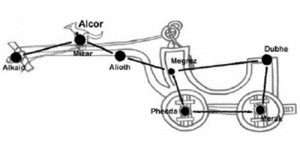
'Handle' on the moment?
"APPEARING LIKE TRENCHES DRAGGED INTO the earth, sunken lanes, also called hollow-ways or holloways, are centuries-old thoroughfares worn down by the traffic of time. They’re one of the few examples of human-made infrastructure still serving its original purpose, although many who walk through holloways don’t realize they’re retracing ancient steps. The name “holloway” is derived from “hola weg,” meaning sunken road in Old English. You’re most likely to discover a holloway where the ground and the stone below are soft, such as places rich in sandstone or chalk. No one ever engineered a holloway — erosion by human feet, and horses or cattle driven alongside, combined with water then flowing through the embankments like a gully, molded the land into a tunnelled road. It’s hard to date them, but most are thought to go back to Roman times and the Iron Age, although in the Middle East some are believed to stretch back to ancient Mesopotamia. They even have their own ecology, such as the spreading bellflowers that enjoy the disturbed earth.
Raised and sunken reliefs?
Ramses.
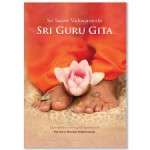
East or West? 'Spirit' or 'Soul'? Male or female feet?

Seated on what? Silk garment?
A working example: "The Mysteries cannot die, be diminished or be way while there are people keeping the sacred path open. The Western Way has been walked by the ancestors, as well as by those now living, it will be trodden by children yet to come - whose ancestors WE will be. Our task is to keep the pathway clear by walking it with honour and enable the mystical rose to bloom upon the tree of tradition....Mankind, more than is realized, is an expression of the part of the earth upon which he subsists. A rose of the West should not aspire to bloom like a lotus of the East....Furthermore, the authors have a breadth of knowledge and wisdom that puts many more strident 'occult' pundits to shame. They are as much at home in the angelic heights of Christian mysticism as with 'lordly ones' in the depths of the hollow hills." {Intro: 'The Western Way: A Practical Guide to the Western Mystery Tradition' / C + J. Matthews}.
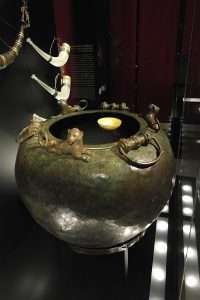
All bronze. Cauldron with three 'handles' and three reclining lions. + Suspension chain 'three and a half' meters.
 Continued: Last year Robert Macfarlane published a book called Holloway that mused on the landforms alongside gorgeous woodcuts by Stanley Donwood. Macfarlane described the sunken lanes as “rifts within which time might exist as pure surface, prone to recapitulation and rhyme, weird morphologies, uncanny doublings.” Back in 2008, he described the geology of the holloways in an Orion magazine article: The oldest holloways date back to the early Iron Age. None is younger than three hundred years old. Over the course of centuries, the passage of cart wheels, hooves, and feet wore away at the floor of these roads, grooving ruts into the exposed stone."
Continued: Last year Robert Macfarlane published a book called Holloway that mused on the landforms alongside gorgeous woodcuts by Stanley Donwood. Macfarlane described the sunken lanes as “rifts within which time might exist as pure surface, prone to recapitulation and rhyme, weird morphologies, uncanny doublings.” Back in 2008, he described the geology of the holloways in an Orion magazine article: The oldest holloways date back to the early Iron Age. None is younger than three hundred years old. Over the course of centuries, the passage of cart wheels, hooves, and feet wore away at the floor of these roads, grooving ruts into the exposed stone."
'Lozenge'.
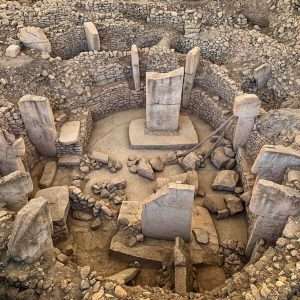
'Pot Belly Hill'.
And/or: ''Holloway is an inner-city district of the London Borough of Islington, 3.3 miles (5.3 km) north of Charing Cross, which follows the line of the Holloway Road (A1). At the centre of Holloway is the Nag's Head commercial area which sits between the more residential Upper Holloway and Lower Holloway neighbourhoods. Holloway has a multicultural population. It is the home of Arsenal F.C., and was once home to the largest women's prison in Europe, Holloway Prison, until 2016. Prior to 1965, Holloway was in the historic county of Middlesex. The origins of the name are disputed; some believe that it derives from Hollow, or Hollow way, due to a dip in the road caused by the passage of animals and water erosion, as this was the main cattle driving route from the North into Smithfield. In Lower Holloway, the former Back Road, now Liverpool Road was used to rest and graze the cattle before entering London. Others believe the name derives from Hallow and refers to the road's historic significance as part of the pilgrimage route to Walsingham.''
''Walsingham is a major centre of pilgrimage. In 1061, according to the Walsingham legend, an Anglo-Saxon noblewoman, Richeldis de Faverches, had a vision of the Virgin Mary in which she was instructed to build a replica of the house of the Holy Family in Nazareth in honour of the Annunciation. When it was built, the Holy House in Walsingham was panelled with wood and contained a wooden statue of an enthroned Virgin Mary with the child Jesus seated on her lap. Among its relics was a phial reputedly of the Virgin's milk. Walsingham became one of northern Europe's great places of pilgrimage and remained so through the remainder of the Middle Ages, with a revival in the 20th century.''
'Emptiness' to enlarge.
Continued: T.R. {speculating to camera/viewer}..."Something urged these prehistoric miners beyond the need for arrow heads and axes - to dig deeper - to the underworld. There are dozen of stories about darkness and light - people going down into the underworld and coming back to be reborn. So these prehistoric people could have re-enacted them below - but that may be just fanciful and these mines were just simply industrial. We will never know will we; but what we can be sure of - is lots of people were involved and gathered together - for a day at the pit." [Emphasis/Parenthesis, this readers]. Recall Part 1.

''It was said that a spear standing upright at the tomb of Christ would cast no shadow at midday, because it marked the center point of everything under the sun...."
As seen from a different perspective: "It discusses {i.e., the book in question}, in relation to the Gospels, the idea that real religion is about another man, latent but unborn, in every man. The end of this transformation in man is thought of as The Mark to be aimed at. The author explains that in the Gospels the word translated as 'sin' means in the literal Greek 'missing the mark', as of a spear thrown at some object and failing to hit it...It is in the wrong place. And this is 'sin'. That is, in the sense, it has missed the mark, missed the idea of his own existence." [Back cover to the book 'The Mark' / M. Nicoll]. i.e.,''unborn'' in relation to ''rebirth''. Try ''arrow'' and/or ''Eros'' and/or ''aim'' ALL as a means...?
And/or: ''Greek translation of Latin, umbilicus, the navel or hub of the world, center of the Goddess's body, source of all things - marked by the omphalos stone - that concentrated the 'mother's' essence....Feminine symbolism was prevalent in all omphalos shrines, which generally represented the body of the goddess with the god present as a sexual partner - a phallic serpent, tree, cross - joined in medio mundi, at the center of the world. It was equipped with the usual sexual symbols: a sacred spring in the garden which contained the tree of life..." [Page 740/1 'The Women's Encyclopedia of Myths and Secrets'].
Tap-root?
Question. Underworld = 'labyrinth' link?
N.B. Stag = 'Lord of the Woods'? And/or heath/moor land ?
Waun Mawn?

Live queen moor?
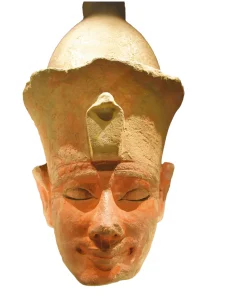
Senusret I was the son of Amenemhat I {'Amun is at the forefront'}. (c.1991-1962 BC), the founder of the Twelfth Dynasty. He was named after his grandfather Senusret, who appears in a few later sources as ‘god’s father’, and as the founding figure of a new line of kings. The mother of Senusret I was a woman called Neferitatjenen. Her name sounds somehow strange, and is indeed only known from a 19th-century copy of a statue inscription. The statue depicted the queen, but is now lost, so there is no way to check if the name is correct. The woman herself remains a mystery.
Nothing can be said about the king’s childhood. We do not know where and when Senusret I was born. At the beginning of his reign, Amenemhat I moved Egypt’s capital from Thebes to the North, founding a new city Itj-tawy (‘seizer of the Two Lands’) about 60km south of modern Cairo. Itj-tawy’s exact location is still unknown, but it was highly symbolic: sited at the border between Upper and Lower Egypt in the area regarded by the ancient Egyptians as the middle of their country. We do not know exactly when this happened or whether or not Senusret had been born by that time.
Side note: ''Hampstead Heath is now the most commonly used rhyming slang for teeth, having taken over from Hounslow Heath which was a pre-1900s expression. Normally shortened to Hampsteads (or sometimes even Hamps). Hampstead Heath itself is a 790 acre area of parkland, hillside and woodland, with spectacular views across the city of London.''
''Overlook''?
Continued: The colour black - that absorbs all wavelengths of visible light - which appears black to the naked eye - but from which a heat {'fire'} emerges. Representational of. Try among others ''flint''. As a means...?
Question. From darkness to light {chalk and/or limestone?} - as a means...? Try ''Doe''. Part 2.
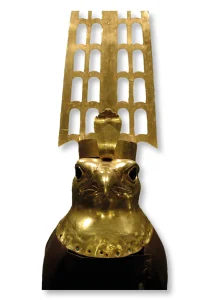
Prior to the discovery of the Main Deposit, Quibell had unearthed other spectacular finds in the temple area at Hierakonpolis. The first was a superbly made sheet-gold and copper statue of Horus – probably dating from the Sixth Dynasty (c.2345-2323 BC) of the Old Kingdom, furnished with lifelike obsidian eyes and a tall, double-plumed headdress. Quibell discovered it in a pit dug below the floor of one of the temple’s five chambers. Unfortunately, the thin copper plates forming the body of Horus cracked, but they were retained and have now been skilfully restored, together with the long copper carrying-pole. The head of Horus is now on display in its original form in the Egyptian Museum in Cairo, giving us a rare view of an actual cult statue.
'Quest for the Red Sulphur: The Life of Ibn Arabi' by C. Addas. And/or 'The Red Book' by C. Jung.
A representation of something hidden - that one has to seek out?
Red King / White Queen? [Page 216 'The Western Way'. Vol 2].
Question 2. IF so, how could prehistoric man understand that {concept?} - before Newton discovered it?
N.B. 'Doe' and 'Bee' used throughout the book: 'Discourse of Fire and Salt' / Blaise de Vigenere.
"It is Prometheus advice that Heracles should not attempt to seize the 'Fruits of Paradise' by violence but by request of the aid of the powers that hold the machinery of the universe in balanced motion..." [Extract from the book by G. Knight]. Link to the word ''grace''. Aim and purpose of.
Question. What was Prometheus identified with?
REFRESHER..."That which sees through the 'eye', but whom the eye sees not...." [Hindu equivalent]. Find it, compare it, understand it. As with.................
 "The eye with which i see 'god', and the eye with which 'god' sees me is the same eye." [Meister Eckhart].
"The eye with which i see 'god', and the eye with which 'god' sees me is the same eye." [Meister Eckhart].
"It is precisely the 'Perfect Man' who combines within himself, in harmony, 'Heaven' and 'Earth' within the context of the realization of the Oneness of Being, who is at once the eye by which the divine subject sees Himself and the perfectly polished mirror {Obsidian?} that reflects the divine light." [Same chapter, same book].
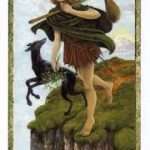
Anubis?
"Obsidian = i.e., a hard, dark glass like volcanic rock formed by the rapid solidification of lava without crystallization." Wiki.
'Dragon Glass'? [Game of Thrones].
''The energy had to crystallize for us to understand what was coming our way...As this realization flooded into me..." [From the book by D. Melchizedek].

Re-shaped? Question. What is he pulling? Excess baggage?
Side note: Working example {i.e., especially in relation to ''basalt''. Other 'keys' highlighted}: "It has taken me virtually 45 years to distil within the vessel of my scientific work the things I experienced and wrote down at that time. As a young man my goal had been to accomplish something in my science. But then, I hit upon this steam of lava, and the heat of its fires reshaped my life....The years when I was pursuing my inner images were the most important in my life - in them everything essential was decided. It all began then; the later details are only supplements and clarifications of the material that burst forth from the unconscious, and at first swamped me {'marsh'?}. It was the 'prima materia' for a lifetimes work." [Page 225 'Memories, Dreams and Reflections' / C. G. Jung].
White or Red stone?
And/or the flood plain under which was found the golden child.
N.B. Glastonbury = ''the Isle of glass''.

Jon Snow.
Side note: "The SECOND is the veil of Cythraul: 'the Ghost', through which one must pass to achieve blessedness in Gwynydd - the world of the Twice-born {'22' / twentytwo?}. Its symbol is the Cwrwg Gwydrin: the boat of glass, for the in-between realms of the Otherworld." [Douglas Monroe].
'Second to None'. Enlarged elsewhere.
Second Nature?
Coincidence? or ALL FICTION?
Question. The 'peak' of that experience {lava} = 'She Who Loves Silence'?
From a different perspective: ''I watch Bradley tensing his muscles, quickly descending the creaking stairs, half expecting to hear his steps echoed by those of the 'Vicar'. He glances behind him, once, twice, and - there! At the far end of the cellar, sitting in its own red glow, the rotund glass vessel pulses - like a living thing, he said. Like the Sacred Heart.'' [Final page of the book 'Mercurius' / P. Harpur].
'Lady of the Lake'?
Refresher: ''Aberfoyle is a charming village on the banks of the River Forth in the magnificent Queen Elizabeth Forest Park. The village, once important for its slate quarries, quickly developed into the southern gateway of The Trossachs following the publication of Walter Scott’s ‘The Lady of the Lake’. Today, its distinct Victorian architecture remains a feature of the village.''
| 8 | Garden gate[5] | Rhymes with "eight". |
| One Fat Lady | From the resemblance of the number 8 to an overweight woman; see also "88". |
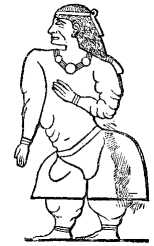
'Fat' of the land.
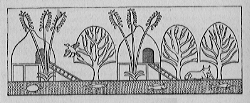 ''The Land of Punt (Egyptian:
''The Land of Punt (Egyptian: ![]() pwnt; alternate Egyptological readings Pwene(t)[1] /pu:nt/) was an ancient kingdom known from Ancient Egyptian trade records. It produced and exported gold, aromatic resins, blackwood, ebony, ivory and wild animals.[2] It is possible that it corresponds to Opone in Somalia, as later known by the ancient Greeks,[3][4][5] while some biblical scholars have identified it with the biblical land of Put or Havilah.''
pwnt; alternate Egyptological readings Pwene(t)[1] /pu:nt/) was an ancient kingdom known from Ancient Egyptian trade records. It produced and exported gold, aromatic resins, blackwood, ebony, ivory and wild animals.[2] It is possible that it corresponds to Opone in Somalia, as later known by the ancient Greeks,[3][4][5] while some biblical scholars have identified it with the biblical land of Put or Havilah.''
Side note: ''The word 'vicar' comes from the Latin meaning substitute.'' ['The Chase'].
A vicar (/ˈvɪkər/; Latin: vicarius) is a representative, deputy or substitute; anyone acting "in the person of" or agent for a superior (compare "vicarious" in the sense of "at second hand"). Linguistically, vicar is cognate with the English prefix "vice", similarly meaning "deputy". The title appears in a number of Christian ecclesiastical contexts, but also as an administrative title, or title modifier, in the Roman Empire. In addition, in the Holy Roman Empire a local representative of the emperor, perhaps an archduke, might be styled "vicar".
''Second hand''. Left or right?
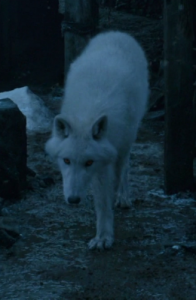
The Dire Wolf 'Ghost'. Animus?
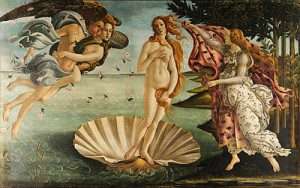 Continued: "In many legends - and not only in Celtic ones - we find that the 'heroes' go on these adventures sometimes in a glass ship: 'the multitude could not see the hero's progress after he had entered his glass vessel'. Arthur had a boat of glass. Taliesin says that Alexander the Great went on voyages in a 'boat of glass'. Condla the Red of Ireland was spirited away to fairy-land in a glass ship. The boat of Osiris in Amenti was made of glass. Even our own cinderella found her Prince because she could wear the 'glass slipper'...Glastonbury is often supposed to be so named because it was the Isle of Glass, Ynesuuitrin, the Insula Vitria - where there was no thunder or lightening , nor tempest, nor serpent, nor excessive heat or cold....
Continued: "In many legends - and not only in Celtic ones - we find that the 'heroes' go on these adventures sometimes in a glass ship: 'the multitude could not see the hero's progress after he had entered his glass vessel'. Arthur had a boat of glass. Taliesin says that Alexander the Great went on voyages in a 'boat of glass'. Condla the Red of Ireland was spirited away to fairy-land in a glass ship. The boat of Osiris in Amenti was made of glass. Even our own cinderella found her Prince because she could wear the 'glass slipper'...Glastonbury is often supposed to be so named because it was the Isle of Glass, Ynesuuitrin, the Insula Vitria - where there was no thunder or lightening , nor tempest, nor serpent, nor excessive heat or cold....
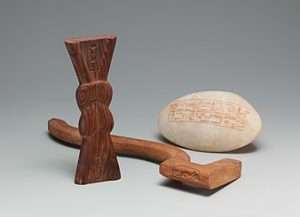
This is the 'blessedness' of the state of consciousness through the tumult of the 'Chatel Merveil' and attained the Quest of the Grail {i.e., representational of}. Glass or a type of glass - is supposed to be the material out of which the so-called 'serpents egg', the well known talisman of the Druids, was made. Whatever it was, it was said by Pliny to be able to 'float' in water and resist the flowing stream, like a boat that is propelled. St. Columba had such a talisman, a white 'stone' that could 'swim'...When a stranger sought entrance to the ceremonies of the worship of the 'Moon' { Ceridwen Mysteries}, Taliesin tells us he had to exhibit his 'boat of glass' as a sort of guarantee of good faith..." ['The Flaming Door'. Most emphasis, this readers].
River / sea {delta} OF ALL CULTURES regardless of time/space as a means...?
'Place of Rowing' ?
Upstream or downstream?
Side note: ''The name Columba is both a boy's name and a girl's name meaning "dove". While the original Irish St. Columba was male, the modern Irish variation Colm or Scottish Callum would be more appropriate for a contemporary boy.''
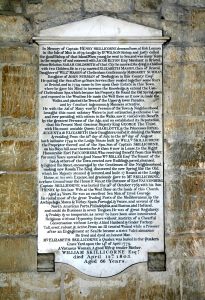
The LONGEST inscription memorial in England. Born on the Isle of Man.
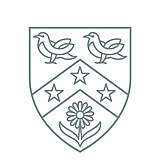
Emblem of college. One daisy. Two pigeons. Three stars. Question. Chevron? Half a 'lozenge'?
''The term columba comes from the Latin columba, "a dove",[1] the feminine form of columbus, "a male dove",[2] itself the latinisation of the Greek κόλυμβος (kolumbos), "diver",[3] which derives from the verb κολυμβάω (kolumbaō), "to dive, plunge headlong, swim".[4] The feminine form of kolumbos, κολυμβίς (kolumbis), "diver",[5] was the name applied by Aristophanes and others to the common rock pigeons of Greece, because of the "swimming" motion made by their wings when flying.''
A working example: Pigeons founded the Spa's of Cheltenham: ''In 1716 on a local land owner {W. Mason}, spotted pigeons pecking salts near a spring, on a muddy field. Henry Skillicorne {'Son in Law'} took it to the next level.'' ['Britains Most Historic Towns: Regency Cheltenham'].
The site of the original well is now part of the premises of Cheltenham Ladies' College.''
Refresher: ''The tomb of Christ was built over by a temple to Venus.''
Side note: ''The Great Pyramid of Cholula, also known as Tlachihualtepetl (Nahuatl for "made-by-hand mountain"), is a complex located in Cholula, Puebla, Mexico. It is the largest archaeological site of a pyramid (temple) in the New World, as well as the largest pyramid by volume known to exist in the world today.''
Silbury Hill?
DEEP INSIDE at the ''heart of the pyramid'' is found an artwork of a red faced skull with a chevron for a NOSE - in the upward direction {i.e., as above}. ['Expedition Unknown: Lost Mexican City' / S3 EP1].
And/or: ''What is a Chevron Moustache? A Chevron moustache style is a 'tache that is shaped to angle downwards towards the corners of your mouth - that covers the whole top lip. It's more subtle than a horseshoe moustache and shorter than a walrus style, but the general direction of growth is the same.''
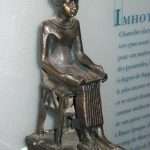
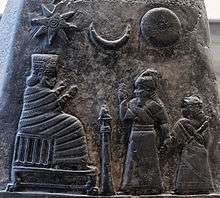
'Spots' or 'stripes'?
Side note: Diplodocus (/dɪˈplɒdəkəs/,[3][4] /daɪˈplɒdəkəs/,[4] or /ˌdɪploʊˈdoʊkəs/[3]) is an extinct genus of diplodocid sauropod dinosaurs known from the Late Jurassic of North America. The first fossils of Diplodocus were discovered in 1877 by S. W. Williston. The generic name, coined by Othniel Charles Marsh in 1878, is a Neo-Latin term derived from Greek διπλός (diplos) "double" and δοκός (dokos) "beam",[3][5] in reference to the double-beamed chevron bones located in the underside of the tail, which were then considered unique.
A haemal arch, also known as a chevron, is a bony arch on the ventral side of a tail vertebra of a vertebrate. The canal formed by the space between the arch and the vertebral body is the haemal canal. A spinous ventral process emerging from the haemal arch is referred to as the haemal spine.

'Y'?
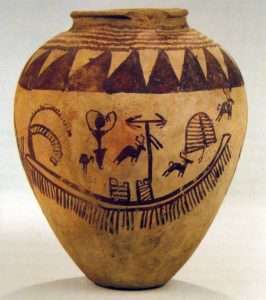
"The Rump is part of the Arabian megaconstellation of the Lion (al-asad). It lies well south of the rest of the Lion, so it may have been a later addition to the figure." Ostrich feathers? The Royal Way?
Pygostyle describes a skeletal condition in which the final few caudal vertebrae are fused into a single ossification, supporting the tail feathers and musculature. In modern birds, the rectrices attach to these. The pygostyle is the main component of the uropygium, a structure colloquially known as the bishop's nose, parson's nose, pope's nose, or sultan's nose. This is the fleshy protuberance visible at the posterior end of a bird (most commonly a chicken or turkey) that has been dressed for cooking. It has a swollen appearance because it also contains the uropygial gland that produces preen oil.
"Pygostyle" is formed from Ancient Greek words, literally meaning "rump pillar".
YHWH?
The insulting equation of the pygostyle with the noses of dignitaries dates back to 18th century Britain where pope's nose first appears (in 1786). The form parson's nose appears much later, dated to 1839. The usage is somewhat dependent on either a Catholic or Protestant viewpoint.[5]
The forms bishop's nose and sultan's nose are 20th century variants.
Smith/Jones to enlarge.
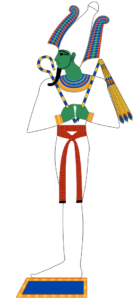
Osiris: Swaddling?
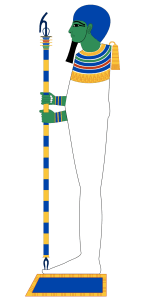
Ptah. Static or dynamic. Anchored?
Continued: Birth of the Christ child in ''a manger with strips of swaddling cloth'' {'stripes'?} as was the custom for ''the first child OF MAN OR BEAST that belonged to the Lord'' in order for ''the limbs to grow straight'' {'upright'?}. And/or: The EIGHT days as the basis in the Old Testament for the practice of circumcision - afterwards of which ''A pair of turtledoves or two young pigeons were to be sacrificed.'' [Bible / Luke 2: 2-24].
''Head Binding''? 'Flat' head?
ROOF?
''To move straight ahead is to follow ones nose.''
Side note: ''The flag that is known as the Stars and Stripes is made up of THREE colours.'' ['The Chase'].
''The scientist Nikola Tesla was obsessed with pigeons and once claimed to have fallen in love with one.'' ['The Chase'].
And/or: ''These days, Suite 3327 has a plaque bearing Tesla’s name, and a second plaque honoring him graces the exterior of the hotel. Engineers, scientists, geeks, UFO enthusiasts, and other admirers all make the pilgrimage here to pay homage to the “mad” scientist who changed the world before the world was ready. Tesla spent ten years in this room, slowly losing his mind, falling in love with pigeons, and occasionally meeting with dignitaries.
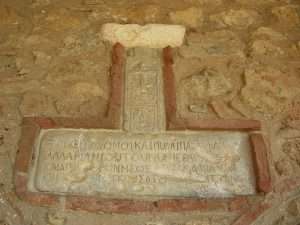
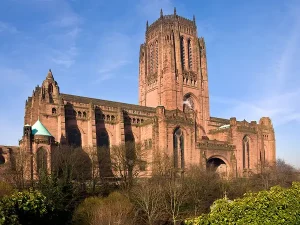
Britain's biggest Cathedral which houses the worlds biggest music instrument - its organ: "A sound that rebounds off its walls. Spine tingling." In excess of 10000 pipes {10268} which takes fifty days a year to retune. Within the clapper of each bell is a leather baldric. Thirteen bells in total. Hung like no other bells any where else. Instead of a timber structure - concrete with metal supports - used to support and make firm the thirty ton weight of the bells. Unlike other Cathedral bells they are left in the UP position - which allows a precise timing when the ringing begins. ['Britain's Great Cathedrals: Liverpool Cathedral with Tony Robinson']. 'Top-down'? On the shoulders of giants? N/W TIP of Europe.
On the day after Tesla died, his nephew hurried to the New Yorker and upon arrival found that his uncle’s notebooks and several papers had been removed from Suite 3327, along with the inventor’s body. A short time later, all of his work was impounded and passed through a handful of government agencies until the War Department deemed them worthy of “Top Secret” status.'' {'Atlas Obscura' / August 2023}.
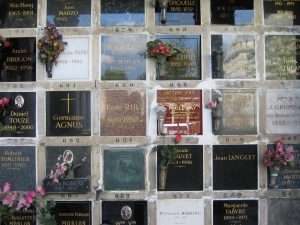
A columbarium (/ˌkɒləmˈbɛəri.əm/;[1] pl. columbaria), also called a cinerarium, is a structure for the reverential and usually public storage of funerary urns holding cremated remains of the dead. The term comes from the Latin columba (dove) and originally solely referred to compartmentalized housing for doves and pigeons, also called dovecotes. Roman columbaria were often built partly or completely underground.[2] The Columbarium of Pomponius Hylas is an ancient Roman example, rich in frescoes, decorations, and precious mosaics.[3]
Today's columbaria can be either free standing units, or part of a mausoleum or another building. Some manufacturers produce columbaria that are built entirely offsite and brought to a cemetery by large truck.
''Melancholy'' or ''Joy''?
''Louis Armstrongs ''Melancholy Blues'' was sent into 'space' in 1977.'' ['Pawn Stars'].
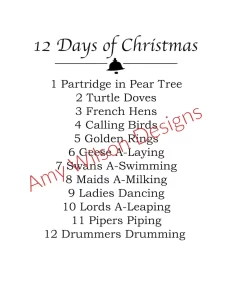 Continued: ''The large bird genus Columba comprises a group of medium to large pigeons. The terms "dove" and "pigeon" are used indiscriminately for smaller and larger Columbidae, respectively. Columba species – at least those of Columba sensu stricto – are generally termed "pigeons", and in many cases wood-pigeons. The rock dove (C. livia), has given rise to the majority of domesticated pigeon breeds, such as the racing pigeon and the fantail pigeon some of which have become feral. Meanwhile, "wood pigeon" by itself usually means the common wood pigeon (C. palumbus).''
Continued: ''The large bird genus Columba comprises a group of medium to large pigeons. The terms "dove" and "pigeon" are used indiscriminately for smaller and larger Columbidae, respectively. Columba species – at least those of Columba sensu stricto – are generally termed "pigeons", and in many cases wood-pigeons. The rock dove (C. livia), has given rise to the majority of domesticated pigeon breeds, such as the racing pigeon and the fantail pigeon some of which have become feral. Meanwhile, "wood pigeon" by itself usually means the common wood pigeon (C. palumbus).''
Continued: N.B. 'Ruby Slippers' {Wizard of Oz}. Originally they were called 'Silver Slippers' - in the original book.
Moon link?
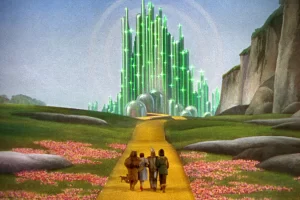
The Emerald City.
Side note: {Synchronistic? or just insightful}: Shazia: ''This is STEEP, this is very steep - but it seems LESS rugged and wild.'' ...Scarlett: ''Come on, we can do this. I hope we get to meet some proper Scots, some Scottish monks and get to try out some shortbread - not to mention a chance to see the Loch Ness monster. That's on the list.....I do believe in the Loch Ness monster.'' ....Shazia: ''Well Columba was apparently the FIRST person to see it.''.....Scarlett: ''Well he wouldn't lie would he....he's a saint!'' ['Pilgrimage' / BBC2 / 2022].
'Higher/lower'?
"Iona (/aɪˈoʊnə/; Scottish Gaelic: Ì Chaluim Chille [ˈiː ˈxal̪ˠɪm ˈçiʎə] ⓘ, sometimes simply Ì) is a small island in the Inner Hebrides, off the Ross of Mull on the western coast of Scotland. It is mainly known for Iona Abbey, though there are other buildings on the island. Iona Abbey was a centre of Gaelic monasticism for three centuries[3] and is today known for its relative tranquility and natural environment.[6] It is a tourist destination and a place for spiritual retreats. Its modern Scottish Gaelic name means "Iona of (Saint) Columba" (formerly anglicised as "Icolmkill"). In 2019, the island's estimated population was 120.[7] Residents engage in farming, using traditional methods."
''The place-name scholar William J. Watson has shown that the earliest recorded names of the island meant something like "yew-place".[15] The element Ivo-, denoting "yew", occurs in inscriptions in the ogham alphabet (Iva-cattos [genitive], Iva-geni [genitive]) and in Gaulish names (Ivo-rix, Ivo-magus); it may also be the basis of early Gaelic names like Eógan (ogham: Ivo-genos).[16][fn 1] The island's name may also be related to the name of a mythological figure, Fer hÍ mac Eogabail, the FOSTER-son of Manannan, whose forename meaning 'man of the yew'....'' [Wiki].
Get into that mindset to 'see' something other than the obvious.
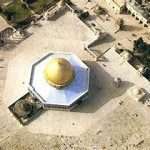 On the top of that very steep climb is where the kings stronghold was. That same king that gave Columba the Isle of Iona - to build his monastery. It was also the place for the coronation of Gaelic kings. Part of the ceremony was to place ones foot in the imprint made in a rock cutout on top of the hill. A size EIGHT imprint.
On the top of that very steep climb is where the kings stronghold was. That same king that gave Columba the Isle of Iona - to build his monastery. It was also the place for the coronation of Gaelic kings. Part of the ceremony was to place ones foot in the imprint made in a rock cutout on top of the hill. A size EIGHT imprint.
Left or right foot?

Bridge over troubled waters? Best foot forward?
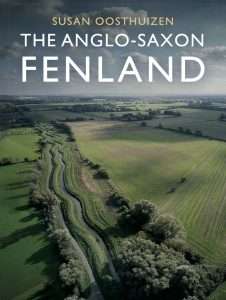
Wet or Dry?
Side note: ''Leonardo da Vinci described the foot as ''a masterpiece of engineering and a work of art.'' ['The Chase'].
''Leonard means brave lion.'' ['The Chase'].
From a different perspective: ''In "The Curse of Oak Island" Season 1 finale "The Find," while searching through a swamp, metal detection expert Steve Zazulyk ran across a coin with the number "8" engraved on it. It was later identified as a Spanish eight Maravedis copper coin, most likely from the 17th century.''
And/or: The cave of Columba a few miles DOWNHILL. Described by Shazia as ''its like Narnia''.
'Enchantment'? {i.e., how far from Aberfoyle?}. As a means....?
And/or: ''Walking at sunset over the hills and dales, and willy-nilly perceiving the exterior aspect of those enchanting parts of the bosom of Great Nature, our Common Mother...'' {Page 18 'Beelzebub's Tales to His Grandson' / Gurdjieff}
Side note 2: ''Scarlett' = red = red ochre = iron etc, etc.
Question. Where are those keys {hieroglyphs} REPRESENTED within that universal framework?
Queendom.
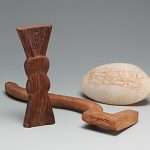
Hatshepsut's 'belongings'.

Pebbles?
Refresher: "We don't know the purpose of the white quartz pebbles. There found in mortuary context from pre-historic periods onward and also medieval cemeteries. There's a passage in the Bible - Revelations- about a person who has found Christ is given a white stone - and in that - a new name." Enlarged elsewhere. Try ''nickname''.
REFRESHER: ''The formation of quartz is the combination of fire and water.''
And/or: "Easter is the festival of Ast or Est {Isis-Astarte} and it celebrates the spring equinox and the springtime generation of new life - which is symbolized in Pharaoh Akhenaten's Hymn to the Aton by the hatching of an egg {authors hypothesis}. This egg symbology was also important in the Minoan theology. One of the enduring mysteries of Minoan culture is the beds of beach smoothed pebbles that adorn their ritual centers....Their artwork {frescoes} depict the ground in terms of pebbles or gravel....the so called Easter egg pebbles.....The Phoenicians also worshipped Astarte and had an association with the egg....Its precise symbolism is unknown." [Page 107 'Scota: Egyptian Queen of the Scots' / R. Ellis].

First century altar stone found at Magdala in Israel. 'Tower of the fish'.
A working example: This month, dedicated to the mosaics of Magdala, our archaeology team wishes to share information about the ancient mosaics found at the site. Two thousand years ago, the inhabitants of Magdala chose this art form to decorate their synagogue and the most emblematic buildings of their community.
The art of mosaic has its roots in the region of Anatolia and in Olinto, Greece, but it was firmly established in the city of Pella, in the Macedonia of Alexander the Great, around 300 B.C. With Hellenism, it spread throughout the Eastern Mediterranean. But what makes this art so special and captivating?
 The earliest mosaics were created with small pebbles, which, arranged by size and color, allowed for the formation of geometric figures. Over time, these mosaics evolved, giving rise to more complex representations that expressed myths, allegories, and stories that fascinated the ancients. Perfecting this art, artisans began to cut the stones into small cubes, known as tesserae. Each of these cubes is manually placed according to a design. Some mosaics contain thousands of tesserae, and the quantity used makes the works more precise, detailed, and impressive.
The earliest mosaics were created with small pebbles, which, arranged by size and color, allowed for the formation of geometric figures. Over time, these mosaics evolved, giving rise to more complex representations that expressed myths, allegories, and stories that fascinated the ancients. Perfecting this art, artisans began to cut the stones into small cubes, known as tesserae. Each of these cubes is manually placed according to a design. Some mosaics contain thousands of tesserae, and the quantity used makes the works more precise, detailed, and impressive.
Side note: A mandala (Sanskrit: मण्डल, romanized: maṇḍala, lit. 'circle', [ˈmɐɳɖɐlɐ]) is a geometric configuration of symbols. In various spiritual traditions, mandalas may be employed for focusing attention of practitioners and adepts, as a spiritual guidance tool, for establishing a sacred space and as an aid to meditation and trance induction. In the Eastern religions of Hinduism, Buddhism, Jainism and Shinto it is used as a map representing deities, or especially in the case of Shinto, paradises, kami or actual shrines.[1][2]

 Continued: During the Roman period, the art of mosaic became popular throughout the Empire, but it was not accepted by Judaism in the first century due to religious restrictions on the representation of images. However, during the reign of Herod, mosaics began to decorate his palaces and public buildings. Over time, the upper classes started decorating their homes with this style, initiating the diffusion of mosaics in Judea. Although the technique was Roman, the images were suitable for first-century Judaism and generally featured simple geometric figures.
Continued: During the Roman period, the art of mosaic became popular throughout the Empire, but it was not accepted by Judaism in the first century due to religious restrictions on the representation of images. However, during the reign of Herod, mosaics began to decorate his palaces and public buildings. Over time, the upper classes started decorating their homes with this style, initiating the diffusion of mosaics in Judea. Although the technique was Roman, the images were suitable for first-century Judaism and generally featured simple geometric figures.
 The introduction of mosaics in Galilee occurred a few years later, possibly starting with the construction of Tiberias in 19 A.D., ordered by Herod Antipas. Tiberias was a Roman-style city, although its inhabitants were predominantly of Jewish ethnicity. To beautify it, artists specializing in mosaics were likely brought in, allowing residents from other towns, such as Magdala, to access this art, either through these artists or local artisans who learned the technique.
The introduction of mosaics in Galilee occurred a few years later, possibly starting with the construction of Tiberias in 19 A.D., ordered by Herod Antipas. Tiberias was a Roman-style city, although its inhabitants were predominantly of Jewish ethnicity. To beautify it, artists specializing in mosaics were likely brought in, allowing residents from other towns, such as Magdala, to access this art, either through these artists or local artisans who learned the technique.
In Magdala, we have found two buildings decorated with mosaics that can be seen in the archaeological park: the mosaic of the synagogue (which includes the mosaic of the hallway and that of a small room located to the south) and the mosaic of the ritual baths. Both are very similar, but they have small differences that lead us to develop theories about their construction.
What do the mosaics of Magdala really mean? What differences do they have? Why did the inhabitants of Magdala choose them this way?
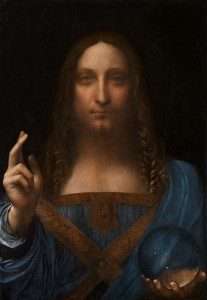 And/or: ''In Northern Georgia's Jackson County along the new River Glen near the banks of the upper Oconee River {S/E America} - were found fiftysix stone mound features. Many had unusual hexagonal shapes, while at least seven resembled animals or other figures i.e., birds. Built along veins of rock quartz AS HAD two other well known stone effigy mounds called Rock Hawk {encircled by a wall} and Rock Eagle - some 50 miles south. Built by Native Americans. Hardwood trees covered the hills where the mounds were located surrounded by cotton fields.'' [Pages 57-60 'Archaeology' / July/August / 2022].
And/or: ''In Northern Georgia's Jackson County along the new River Glen near the banks of the upper Oconee River {S/E America} - were found fiftysix stone mound features. Many had unusual hexagonal shapes, while at least seven resembled animals or other figures i.e., birds. Built along veins of rock quartz AS HAD two other well known stone effigy mounds called Rock Hawk {encircled by a wall} and Rock Eagle - some 50 miles south. Built by Native Americans. Hardwood trees covered the hills where the mounds were located surrounded by cotton fields.'' [Pages 57-60 'Archaeology' / July/August / 2022].
And/or: ''In the woods we often see innumerable heaps of small stones in those places, where according to tradition some of their distinguished people were either killed or buried - till the bones could be GATHERED.'' [same].
'Reassembled'?
Upstream or Downstream?
Al-Qurn?
Side note: ''The story goes if you picked up a white quartz pebble and threw it into the well { of St. Gwenfaen} it would cure you of any mental illness.'' ['Holy Head Island' / Kate Humble / 7.1.22].
And/or: ''The cliffs were created 140 million years ago, when fault lines formed, seperating europe from North America. The most striking formations are the two natural stone ARCHES carved out into the cliffs called the Black and White arch {or 'bow'} made out of quart-like rock.''

'' A mile wide and an inch deep?''
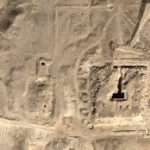 And/or: ''From the quartzite 'mountain' along a downward path to the rocky shore to Holyhead harbour {''harbour of refuge''} and the longest breakwater in Britain: ''terminated at the head with a lighthouse {'Square on'}, foundations of which made of ashlar masonry'' - made of quartzite rock. On the N/W coast of Holy Island. THE MOST NORTHWESTERN BOUNDARY OF EUROPE.
And/or: ''From the quartzite 'mountain' along a downward path to the rocky shore to Holyhead harbour {''harbour of refuge''} and the longest breakwater in Britain: ''terminated at the head with a lighthouse {'Square on'}, foundations of which made of ashlar masonry'' - made of quartzite rock. On the N/W coast of Holy Island. THE MOST NORTHWESTERN BOUNDARY OF EUROPE.
''In Greek mythology, Europa (/jʊəˈroʊpə, jə-/; Ancient Greek: Εὐρώπη, Eurṓpē, Attic Greek pronunciation: [eu̯.rɔ̌ː.pɛː]) was a Phoenician princess of Argive Greek origin, and the mother of King Minos of Crete. The continent of Europe is named after her. The story of her abduction by Zeus in the form of a bull was a Cretan story; as classicist Károly Kerényi points out, "most of the love-stories concerning Zeus originated from more ancient tales describing his marriages with goddesses. This can especially be said of the story of Europa." [Wiki].
'To take the bull by the horns'?
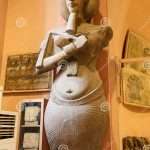
Broad hipped?

Twice as broad as long? Birket Habu?
Europa's earliest literary reference is in the Iliad, which is commonly dated to the 8th century BC.[2] Another early reference to her is in a fragment of the Hesiodic Catalogue of Women, discovered at Oxyrhynchus.[3] The earliest vase-painting securely identifiable as Europa dates from the mid-7th century BC....Greek Εὐρώπη (Eurṓpē) contains the elements εὐρύς (eurus), "wide, broad"[5] and ὤψ/ὠπ-/ὀπτ- (ōps/ōp-/opt-) "eye, face, countenance".[6] Broad has been an epithet of Earth herself in the reconstructed Proto-Indo-European religion.
Side note: ''To borrow an old political cliché, the poll shows that Mr. Biden’s support among Democrats is a mile wide and an inch deep.''
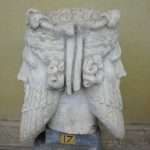
Past /Present. Inward / Outward. Foresight/Hindsight.
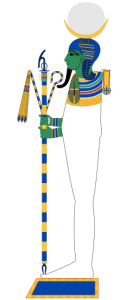
Khonsu. MOON related. Sometimes has a falcon head with the usual foot in front of the other. 'Red' in colour.
And/or: {from a different perspective}: The front facade of the Mortuary Temple of Amenhotep III is wider than the length {700 / 550 metres}. Width in relatioin to N/S. Length E/W. Called 'Mansion of a Million Years' - on the West side of the Nile. The largest ever built. Eventually to be used In later years as a 'quarry'. Stones were used on the opposite side of the Nile {Karnak} in the Temple of Khonsu. {All?} placed upside down where a narrow passage way allows someone {initiate?} to ascend to the top of the pylon of the Temple of Khonsu and use it as viewing platform {'pavilion'?} - where all 4 directions can be seen. ['Egypts Sun King' / S1 EP2].
Recall the upside down statues of Khafre in the UNfinished Temple of the Sphinx. {'Three'?} purposely buried in pits {'rubbish pits'?}.
And/or: The largest 'alabaster' statues of Amenhotep III found at the third pylon within the Mortuary Temple. The entrance to which led to a long passageway {'walkway'?} leading to the Peristyle Court which was surrounded by statues of Sekhmet. In excess of 100. Possibly one for each day. {same}.
From a different perspective: "The Hypnerotomachia Poliphili relates the story of the dream of Poliphilo 'in which it is shown that all human things are but a dream, and many other things worthy of knowledge and memory.' The tongue twisting 'Hypnerotomachia' poetically translates as the 'strife of love in a dream'.

Dresden {Saxony} Germany. Rooster on top. Rooster also on top of Notra Dame roof. 'Forest of oaks'.
As the work opens, the inconsolable Poliphilo is tormented by insomnia as he thinks of his unrequited love for Polia. At last he falls asleep, and then seemingly wakes in a dark wood where his adventures begin.  In a somewhat labyrinthine plot, he moves through many strange places encountering dragons, wolves, and maidens, against an ever changing backdrop of mysterious ruins, monuments, orchards, gardens and fountains. Eventually he meets a nymph who resembles Polia and with whom he falls in love. Following triumphal processions and further spectacles, the nymph reveals that she is in fact that Polia 'whom you love so well'. After a ceremony resembling marriage, they embark for Cythera in Cupid's boat. Polia then takes over the narrative, relating how Poliphilo fell in love with her when he first glimpsed her combing her hair at a window in Treviso. Not only does she reject his advances, but to fulfil a pledge in surviving the plague, she dedicates herself to a life of eternal chastity. Poliphilo visits her secretly at the temple of Diana, and when he falls into a deathlike swoon at her feet, she drags his body away and hides it. But Cupid appears to her in a vision, and compels her to return and kiss Poliphilo back to life. Venus blesses their love, and the lovers are united at last.
In a somewhat labyrinthine plot, he moves through many strange places encountering dragons, wolves, and maidens, against an ever changing backdrop of mysterious ruins, monuments, orchards, gardens and fountains. Eventually he meets a nymph who resembles Polia and with whom he falls in love. Following triumphal processions and further spectacles, the nymph reveals that she is in fact that Polia 'whom you love so well'. After a ceremony resembling marriage, they embark for Cythera in Cupid's boat. Polia then takes over the narrative, relating how Poliphilo fell in love with her when he first glimpsed her combing her hair at a window in Treviso. Not only does she reject his advances, but to fulfil a pledge in surviving the plague, she dedicates herself to a life of eternal chastity. Poliphilo visits her secretly at the temple of Diana, and when he falls into a deathlike swoon at her feet, she drags his body away and hides it. But Cupid appears to her in a vision, and compels her to return and kiss Poliphilo back to life. Venus blesses their love, and the lovers are united at last.
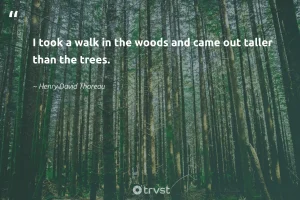
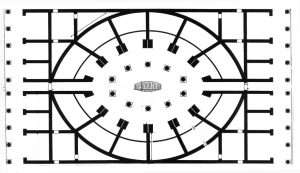
'Peristyle' to enlarge
The overall literary merit of this work is debatable, and some critics have dismissed it as unreadable. Certainly it is written in an odd hybrid of Latin vocabulary imposed upon Italian syntax; this idiosyncratic language would probably have been as difficult for sixteenth century readers as it is today. Others have seen the text as a stereotypical product of its time. Liane Lefaivre, for instance, suggests that it is in many ways a nondescript example of 'a highly stylized genre'. Professor Weiss, meanwhile, declared it to be 'a serious runner up for the title of most boring work in Italian literature'. But its torturous plot and prose have been interpreted by some as a true reflection of the unconscious and mysterious world of the dreamer. George D. Painter eloquently argues that the author 'felt that reality itself is mysterious, and may legitimately be described in terms of mystery; that only perplexing symbols, labyrinthine narrative, and intentionally impenetrable prose-style can express the night-world of the unconscious mind'. More recently, Joscelyn Godwin praises the work's intensity of atmosphere, describing it as a sustained erotic fantasy 'saturated with the desire to gaze, to taste, and to consume'.
Continued: "Khonsu is the god of the moon, moonlight, and time in Egyptian mythology. In the beginning of the gods, he gambled time with the sky goddess Nut. The goddess Nut won so many times that she could then add five days to the calendar. These days were called the "devil days". Khonsu's father is Amun, and his mother is Mut."
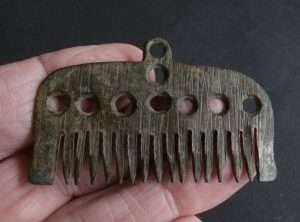 "The Long Walk in Windsor Great Park has a statue known as 'The Copper Horse' at one end." ['Impossible' / S8 EP8].
"The Long Walk in Windsor Great Park has a statue known as 'The Copper Horse' at one end." ['Impossible' / S8 EP8].
Any copper link to Sekhmet?
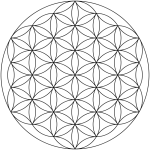 Windsor and Maidenhead Borough Council is the local authority of the Royal Borough of Windsor and Maidenhead in Berkshire, England. It is a unitary authority, having the powers of a non-metropolitan county and district council combined. Windsor and Maidenhead is divided into nineteen wards, electing 41 councillors.[2] The council was created by the Local Government Act 1972 and replaced six local authorities: Cookham Rural District Council, Eton Urban District Council, Eton Rural District Council, Maidenhead Borough Council, New Windsor Borough Council and Windsor Rural District Council. Since 1 April 1998 it has been a unitary authority, assuming the powers and functions of Berkshire County Council.
Windsor and Maidenhead Borough Council is the local authority of the Royal Borough of Windsor and Maidenhead in Berkshire, England. It is a unitary authority, having the powers of a non-metropolitan county and district council combined. Windsor and Maidenhead is divided into nineteen wards, electing 41 councillors.[2] The council was created by the Local Government Act 1972 and replaced six local authorities: Cookham Rural District Council, Eton Urban District Council, Eton Rural District Council, Maidenhead Borough Council, New Windsor Borough Council and Windsor Rural District Council. Since 1 April 1998 it has been a unitary authority, assuming the powers and functions of Berkshire County Council.
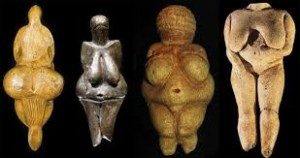 Continued: It is common in an cient Greek mythology and geography to identify lands or rivers with female figures. Thus, Europa is first used in a geographic context in the Homeric Hymn to Delian Apollo, in reference to the western shore of the Aegean Sea.[8] As a name for a part of the known world, it is first used in the 6th century BC by Anaximander and Hecataeus.[9] The weakness of an etymology with εὐρύς (eurus), is 1. that the -u stem of εὐρύς disappears in Εὐρώπη Europa and 2. the expected form εὐρυώπη euryopa that retains the -u stem in fact exists.
Continued: It is common in an cient Greek mythology and geography to identify lands or rivers with female figures. Thus, Europa is first used in a geographic context in the Homeric Hymn to Delian Apollo, in reference to the western shore of the Aegean Sea.[8] As a name for a part of the known world, it is first used in the 6th century BC by Anaximander and Hecataeus.[9] The weakness of an etymology with εὐρύς (eurus), is 1. that the -u stem of εὐρύς disappears in Εὐρώπη Europa and 2. the expected form εὐρυώπη euryopa that retains the -u stem in fact exists.

Queen of Punt. Wide garnent? 'Fat of the land'?
An alternative suggestion due to Ernest Klein and Giovanni Semerano (1966) attempted to connect a Semitic term for "west", Akkadian erebu meaning "to go down, set" (in reference to the sun), Phoenician 'ereb "evening; west", which would parallel occident (the resemblance to Erebus, from PIE *h1regʷos, "darkness", is accidental, however). Barry (1999) adduces the word Ereb on an Assyrian stele with the meaning of "night", "[the country of] sunset", in opposition to Asu "[the country of] sunrise", i.e. Asia (Anatolia coming equally from Ἀνατολή, "(sun)rise", "east").[10] This proposal is mostly considered unlikely or untenable.'' [Wiki].
On the ''eve'' of something.
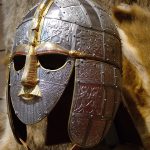
Winged dragon?
In the abstract sense of the word: ''For i am the watery venomous serpent who lies buried at the earths center; i am the fiery dragon who flies through the air. I am the one thing necessary for the whole Opus. I am the spirit of the metals, the fire which does not burn, the water which does not wet the hands. If you find a way to slay me you will find the philosophical mercury of the wise - even the White Stone {'pebble'?} beloved of the philosophers. If you find a way to raise me up again {'upright'?}, you will find the philosophical sulphur, that is, the Red Stone and elixir of Life...'' [Page 3, 'Mercurius' / P. Harpur].
Red roof tiles?
Robin Hood's Bay?
Spots/Stripes to enlarge.

'Lid' - open or closed? 'Knee' print?
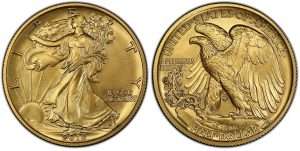
"Walking Liberty Half Dollar, it is a coin issued by The United States Mint from 1916 until 1947 and has a face value of fifty cents. The obverse design depicts a standing Miss Liberty wrapped in an American Flag motif gown, walking to the left towards a rising sun ."
And/or: ''Granite is called 'mat' and its hieroglyphs are followed by a determinative depicting a kind of vase....Granite especially associated with its place of extraction, that is, the first nome of Upper Egypt - Abu - meaning ''elephant''....The word 'mat' designates granite in general and perhaps most particularly red granite, because when black granite is meant, the colour is usually stipulated...Granite coming from fire, is also employed for certain doors or for colossi. At Luxor, for example, the walking or standing colossi of Ramses {birth of the sun} which surround the first court of the temple are of red granite....'' [Page 99 'Sacred Science' / R. A. Schwaller de Lubicz].
Something manifested?
 Side note: "The symbol of the "skins of rebirth" that preserve the consciousness of the being in the Dwat and pass it on to his 'future' lives is expressed in the image of the word birth, mes, which depicts three jackal skins tied by the sign of the placenta {three skins / envelopes}. In the ancient texts that says speaking of Meskhent's role, 'This house, in this night of birth, is a jar.' The word jar is as apt as the word skin.
Side note: "The symbol of the "skins of rebirth" that preserve the consciousness of the being in the Dwat and pass it on to his 'future' lives is expressed in the image of the word birth, mes, which depicts three jackal skins tied by the sign of the placenta {three skins / envelopes}. In the ancient texts that says speaking of Meskhent's role, 'This house, in this night of birth, is a jar.' The word jar is as apt as the word skin.
Side note: The human skin is the outer covering of the body and is the largest organ of the integumentary system. The skin has up to seven layers of ectodermal tissue guarding muscles, bones, ligaments and internal organs. Human skin is similar to most of the other mammals' skin, and it is very similar to pig skin. Though nearly all human skin is covered with hair follicles, it can appear hairless. There are two general types of skin: hairy and glabrous skin (hairless). The adjective cutaneous literally means "of the skin" (from Latin cutis, skin).

'Thimble' shape? Figure of 'eight'?
Continued: It confirms the meaning and gives it precision." [Page 227 'Her-Bak: Egyptian Initiate' / Isha Schwaller de Lubicz].
"Head Jar".

Up stream or down? 'Crossroads' in the middle? Ishon figure?
And/or: "Are the owners of estates whose sole care is their personal advantage to be put on the same footing as those who have traditional knowledge such as can make the vines of Khonsu flourish extraordinarily as well as the magnificent cattle of Amun?" Among the Sages you will find men who claim to possess these gifts and at the same time to have created such a chef d' oeuvre as a colossal statue or the building of a temple." {Page 40}.
"Feast of Fools".
Analogy: The Path of the Fool is the way of the developing Ego.’ In esotericism, the Ego is the Self. This Self is a droplet of the Universal Mind, or Godhead. The Sanskrit term, manas, which may be translated as ‘the immortal individual’, as much as ‘higher mind’, is the equivalent of the real Ego. It is that droplet of the Godhead which -has sought experience through involvement with matter. This minute particle of the Godhead is directed into matter in order to perceive Itself.... the Ego rarely works with its full spiritual potential. From incarnation to incarnation the Ego dwells in what must be termed spiritual darkness in comparison with the light of the spiritual planes. Even so, it is possible for the Ego, through is own efforts, to regain its former full potential, and to remove this darkening selfhood from its eyes {Pallas Athene?}....

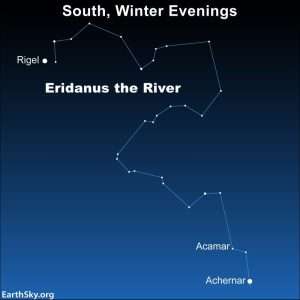
While in life — chained to a physical body — the Ego must work into matter through three organs, or ‘bodies’, called in esotericism the Astral, the Etheric and the Physical, of which we shall learn more shortly. These bodies are controlled by the human ego, which the hermetic literature describes as sweeping down from the Spiritual World like a great bird —a pelican, phoenix or swan — to dwell in flesh on the material realm. The bird seems to be a curious one, for it has three wings rather than the usual pair. The Ego is not entirely alone when it is cast adrift from the higher Spiritual world. It is accompanied by three higher Spiritual bodies, invisible to ordinary vision. Like the goddess Venus, the Ego is attended by three Graces, a triad of Spiritual beings, who weave a stately dance around her. In these three beings, we trace the three higher Spiritual companions of the new-born Ego: in modern esoteric literature, these are called the Atman, Buddhi and Manas....
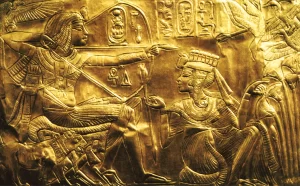
Copper ingots used as target practice. What does copper represent?

Metal of the mind.
The Ego is pulled to the Earth realm by three lower bodies. These both cushion it from, and link it with, the material world. This image of the Ego as being fed by Spiritual powers, and yet immersed in matter, is not an easy one to grasp." [Pages 21-26 'The Zelator' / M. Hedsel].
What the author defines as the 'The seven bodies of man'. Atman, Buddhi and Manas above the 'ego' and Astral, Etheric, and the physical below it. In other words the middle ground between those two sets of three. The 'Ego' is defined as the Sacred Self - only when that awareness has dawned. Until then it remains "hidden."
Amun INTO Amun-Ra. 'See' it? Which gives a direction to follow if only in the Egyptian SENSE of the word.
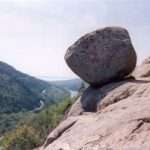 Continued: "The nature of the Stone is central to our dilemma as students of the esoteric tradition; it is both quest and destination, both ourselves and other, tool and product, it is the eye that observes and cannot see itself, knowing itself through exhaustion of all possibilities through experiment, [and/or study. This readers input]. It is indeed, the mystery of awareness." [M. Katz book].
Continued: "The nature of the Stone is central to our dilemma as students of the esoteric tradition; it is both quest and destination, both ourselves and other, tool and product, it is the eye that observes and cannot see itself, knowing itself through exhaustion of all possibilities through experiment, [and/or study. This readers input]. It is indeed, the mystery of awareness." [M. Katz book].
Something 'Set in stone'.
"Tis a stone, and not a stone; a spirit, a soul, and a body...'' Ben Jonson, The Alchemist, ca. 1610. [Quote taken from chapter six, entitled the 'Philosophers Stone' from the book 'The Chemistry of Alchemy'].
"Our 'Stone' is the quintessence of the Four Elements, separated from them and reduced into a fifth essence - being extracted out of the body of the first matter."

Hearing or smelling?
Put all the above together {gathering?} - to attempt a mind set of the following: ''Gilgal (Hebrew: גִּלְגָּל Gilgāl; Koinē Greek: Γαλγαλατοκαι Δωδεκαλίθων "Galgalatokai of the Twelve Stones") is the name of one or more places in the Hebrew Bible. Gilgal is mentioned 39 times, in particular in the Book of Joshua, as the place where the Israelites camped after crossing the Jordan River (Joshua 4:19 - 5:12). The Hebrew term Gilgal most likely means "circle of stones".... According to Joshua 4:19, Gilgal is a location "on the eastern border of Jericho" where the Israelites encamped immediately after crossing the Jordan River. There, they erected 12 stones as a memorial to the miraculous stopping of the river when they crossed. Joshua then ordered the Israelites who had been born during the Exodus to be circumcised at this spot. The Bible refers to this place as Givat Ha'aralot, then says that Joshua called the place Gilgal because, in his words, "today I have removed (galoti) the shame of Egypt from upon you." [Wiki].
'Running the fields'?
''Thirtynine is an approximation of the round number forty. It plays an important role in the Jewish tradition because it permitted the avoidance of the number 40, which was often regarded as the utmost limit {'boundary'?} of acts or 'sins'. Around the beginning of our era, a list of 39 main kinds of tasks that must not be performed on the sabbath was prepared....otherwise 'death' by stoning.... {'silence' link?}.....'' ['Mystery of Numbers'}.
Wilderness years?
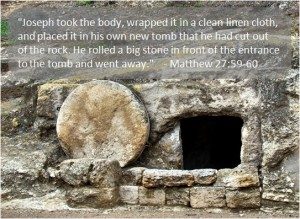 And/or: ''As suggested in the original Hebrew of Joshua 5:9 - the word gilgal in Hebrew is related to the word galal, which means “to roll.” Galal is often used to refer to rolling heavy objects such as stones. So in Hebrew the related word gilgal means a wheel or circle, or something that rolls. In particular, it seems to refer to a circle of stones, or to a circular altar.
And/or: ''As suggested in the original Hebrew of Joshua 5:9 - the word gilgal in Hebrew is related to the word galal, which means “to roll.” Galal is often used to refer to rolling heavy objects such as stones. So in Hebrew the related word gilgal means a wheel or circle, or something that rolls. In particular, it seems to refer to a circle of stones, or to a circular altar.
Grey ones?
'Rolling Pin'?
Etruscan to enlarge.
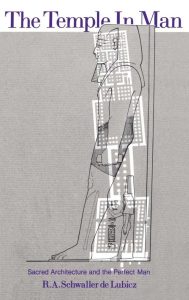
Leaning on the Beloved?
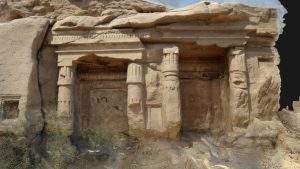
Gebel el Silsila.
Side note: ''Kom el-Nana was enclosed by a buttressed mud-brick enclosure wall, with pylon entrances in the west, south, and east, but apparently not north. It was subdivided into a Northand South section, both with gardens and 'pits' for trees. The SOUTHERN section was focused on the so called South Shrine - LARGE blocks used instead of the usual talatat - and extensively decorated. On the basis of the style of its reliefs and the PRESENCE therein of ONLY THE THREE elder daughters, this southern sector seems to have been constructed early in the building process at Amarna.'' [Page 35 'Nefertit' / A. Dodson].
Continued: A remarkable example of a “gilgal” is the place known as “Gilgal Refaim” in Hebrew, or “Rujm el-Hiri” in Arabic. It is pictured at the beginning of this article. This ancient monument is sometimes called “the Stonehenge of the Levant,” or “Israel’s Stonehenge.”
“Gilgal Refaim” is massive arrangement of four concentric stone circles, with a fifteen-foot-high circular stone mound in the center. It is estimated to contain over 42,000 large basalt stones. The largest circle is about 170 yards in diameter, and eight feet high. Archeologists believe it was built around 3,000 BC. This would mean that it was already over 1,500 years old when Joshua and the Israelites began their conquest of the Holy Land. This ancient “gilgal,” or stone circle, is located in the present day Golan Heights region, east of the Sea of Galilee.
It is unlikely that Gilgal Refaim corresponds to any of the Gilgals mentioned in the Bible.
However, a more recent discovery may very well be associated with the Biblical Gilgals.
The foot-shaped gilgals
Starting in the 1980s, and continuing right up into the 2000s, archeologists have discovered and done initial studies of five human-built foot- or sandal-shaped constructions that have been dated to the same general time period as the Israelites’ conquest of the Holy Land. Pictured here is the best-known one, named in modern times “Bedhat esh-Sha’ab.” It is located just southwest of the Argaman settlement in the Jordan River valley, about two-fifths of the way from the Dead Sea to the Sea of Galilee.
To put this in Bible terms, Bedhat esh-Sha’ab is a little northwest of the town of Adam.
Why is this significant? Because when Joshua and the children of Israel crossed the miraculously dried-up Jordan river to enter the Holy Land, Adam and its neighboring city of Zarethan to its north are named as the location where the Jordan River’s “waters flowing from above stood still, rising up in a single heap” (Joshua 3:15–16). [Internet - 'Spiritual Insights for Everyday Life'].
Upstream or Downstream?

Wine 'sack'?
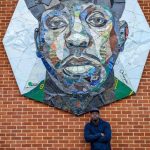
''I'M just glad he got his FLOWERS while he was alive.'' {BBC NEWS/21.2.22}.
Side note: Alchemy equivalent {i.e.,in relation to ''extracted''}: "Aqua ardens is another name for aqua vitae, which is another name for high proof distilled alcohol. It was discovered by alchemists in the process of distilling - and redistilling, and redistilling- their wine, looking for the purest possible spirit of wine...To name this new 'spirit' of wine, Rupescissa turned to Aristotle's notion of an eternal, heavenly element beyond the four elements of earth, fire, air and water - a fifth element, a fifth essence, a quinta essence, a quintessence - and he said there would be more; he said other substances would be distilled down to their ultimate, purest form...'' ['The Chemistry of Alchemy']. Try ''Dionysos'' as a means...?
Question. Which came first. The 'spiritual' intent within ''alchemy'' OR the discovery of 'pure alcohol' within ''chemistry''?

REFRESHER: ''The Swan is white without spot.''
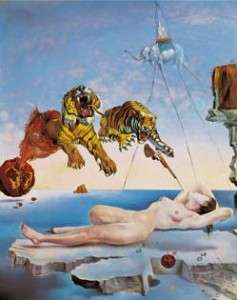
The sleeping figure of Gala, Dalí’s wife and muse, floats above a rock in a tranquil marine landscape. Beside her naked body, two drops of water, a pomegranate and a bee are also airborne. Gala’s dream, prompted by the buzzing of the bee, appears in the upper part of the canvas; there, from an exploding pomegranate shoots out a fish, from whose mouth two ferocious tigers emerge together with a bayonet which, one second later, will wake Gala from her restful sleep.
Side note: ''According to Encyclopedia Britannica, Pope Gelasius I decided to replace Lupercalia with the Feast of the Purification. He changed the date to February fourteen{th} and named the day in honor of St. Valentine, the patron saint of lovers, people with epilepsy, and beekeepers..
February 14 is the fortyfifth{th} day of the year in the Gregorian calendar; 320 days remain until the end of the year (321 in leap years).''
And/or: {synchronistic?}: ''Torvil and Dean won their winter olympic gold medal on Valentines Day.''
Lupercalia, also known as Lupercal, was a pastoral festival of Ancient Rome observed annually on February 15 to purify the city, promoting health and fertility.[1] Lupercalia was also known as dies Februatus, after the purification instruments called februa, the basis for the month named Februarius. The festival was originally known as Februa ("Purifications" or "Purgings") after the februum which was used on the day.[2] It was also known as Februatus and gave its name variously, as epithet to Juno Februalis, Februlis, or Februata in her role as patron deity of that month; to a supposed purification deity called Februus;[a] and to February (mensis Februarius), the month during which the festival occurred.[2] Ovid connects februare to an Etruscan word for "purging".[4]
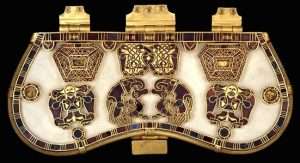
Sutton Hoo purse clasp: Wolfs / eagles and ducks.
The name Lupercalia was believed in antiquity to evince some connection with the Ancient Greek festival of the Arcadian Lykaia, a wolf festival (Greek: λύκος, lýkos; Latin: lupus), and the worship of Lycaean Pan, assumed to be a Greek equivalent to Faunus, as instituted by Evander.[5]
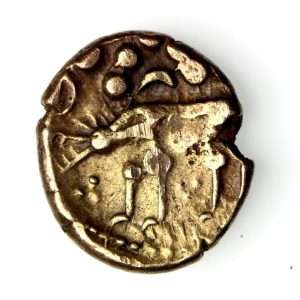
Bird on the rump of a Celtic wolf.
Justin describes a cult image of "the Lycaean god, whom the Greeks call Pan and the Romans Lupercus", as nude, save for a goatskin girdle.[6]
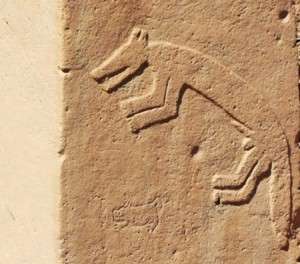
Fox or Wolf. A 'leaping one'? If 'wolf' then a link to 'centaur'. ''Aratos wrote of The Wolf constellation as parts of it in which ''the Centaurs right hand holds'' as an offering to the gods on the Altar {constellation?}, and so virtually a part of the Centaur; but Eratosthenes describe it as a Wine-skin from which the Centaur was about to pour a libation; while others imagined both the 'Beast' and the wine-skin in the Centaurs grasp." [Page 278 'Star Names their Lore and Meaning']. And/or: ''The Arabian title for this constellation was the Leopard or Panther. With the Akkadians it was the Beast of death or the Star of the Dead Father." Same book. And/or: And/or: Sack is an antiquated wine term referring to white fortified wine imported from mainland Spain or the Canary Islands.
Continued: Alice Roberts {'Britain's Biggest Dig' / 2020} finds ''extremely strange'' artefacts buried with 'owners'. A 'brick' inside a skull is a common find {'philosopher's stone'?}. A marmalade {'glass' and 'sweet' link?} jar another. A wine goblet - without the base - is also found in the course of the digs. Symbolic intent only?
Scoria?
Question. Would a brick sink or float? That link to what a 'wine glass' could represent. Did any of those individuals belong to a ''mystery club''? Same one? Understand subject material to gain a possible insight.
 Continued: ''Stone'' symbolic of a crystallization of something. That crystallization represented in the living form - in the external sense of the 'word' - as a 'horn'. A 'vertical' one as opposed to 'horizontal' {i.e., as one example represented with the figure of Amun or even those in the 'downward' direction - as in the 'hand of the elephant'. Both enlarged elsewhere}. Try ''crystallize'' etc.
Continued: ''Stone'' symbolic of a crystallization of something. That crystallization represented in the living form - in the external sense of the 'word' - as a 'horn'. A 'vertical' one as opposed to 'horizontal' {i.e., as one example represented with the figure of Amun or even those in the 'downward' direction - as in the 'hand of the elephant'. Both enlarged elsewhere}. Try ''crystallize'' etc.
'Horn of plenty'.
Fact or fiction. A possibility or not?
'Horn' also in relation {generally} to the 'top of the head' - a completion {pinnacle/cycle?} of something. Therefore its colour a reference to 'North'.
Twin horned? What about the solitary one? Unicorn?
Side note: ''The word 'corn' that comes from the Latin for horn - hard and soft versions found on the toes.'' ['Chase the Case' / BBC2].
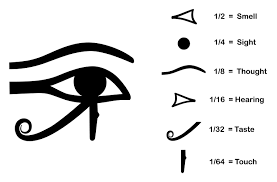
Pineal gland {'horn'?} in the middle of the forehead.
"The Mortuary temple of Hatshepsut is one of the most beautiful of all the temples of ancient Egypt. It is located at Deir el-Bahri {''The Northern Monastery''}, at the head of the valley beneath the peak of the mountain {and natural pyramid} ''Dehent'' - now known by its Arabic name, al-Qurn, - ''The Horn''. Hatshepsut's temple was named ''Djeser-djeseru'' {'holy of holies'}. [www.ancientegyptonline.co.uk].
Side note: ''natural'' in relation to alchemy's equivalent ''purest''....all as a means...?
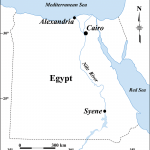
Left corner?
And/or: A tomb beneath Hatshepsut's temple. Left Corner. Was created 500 years BEFORE her reign - yet she left it intact. Left it empty. The question is asked as to why she left the tomb open. Occupant unknown. ''Sure it wasn't the son of a king or prince.'' { i.e., rough hewn}. There was a wooden coffin inside at one stage - within the hollow { pit?} in the floor. Inside many pots/vases/chalices found. Especially a small double one {i.e.,tiny vase attached to another} + wooden heads in blue {28 minutes in} + cow effigy. All female aspects. ['Lost Treasures of Egypt' / Nat. Geo / 5.12.21].
'Emptyness' to enlarge.
Refresher: "Many years ago the English psychologist, F. W. H. Meyes, suggested that - ''hidden in the depth of our being is a rubbish heap as well as a treasure house''. Enlarged throughout.
Aquarius?
N.B. Right corner = right angle.
'The Old Straight Track' by A. Watkins.
"...they were after the floor-stone ; the black flint - and used red deer antlers to score around it - to destabilize the chalk around it - in order to to prize out the flint. A very clear technique." P.H. to T.R.
Question. Male or female antlers?
Question 2. Why did they not use - say - a larger piece of flint. Common sense seems to suggest that would be easier - or did they not want to scratch or damage it. A sacred act? Anything else {i.e.,an incorrect method} could be called a taboo? {enlarged elsewhere}. As an example calling a ''bear a bear''- flint on flint? Hewn/UNhewn? and/or shadow on shadow? {i.e.,represented - as in one culture - with Jacob/Esau}.
A sacred act = one step forward along a path along a 'journey' ? Taboo = one step back?
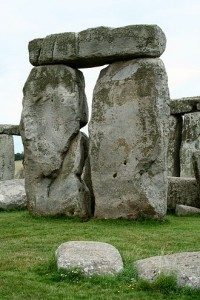
Similar shape found mainly on external 'faces'. With the exception of the ''horseshoe'' in the 'middle'.
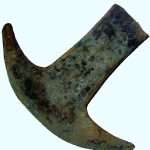
'Hoe' money. Aztec.
Analogy with same intent?..."There are two types of 'altar' mentioned in Scripture, namely, altars of sacrifice, and altars of witness. In the case of 'altars' of sacrifice strict commands were given that such were to be made of earth or stone, but if stone was used, it must be unhewn....no tool must be used...."for if thou lift up thy tool upon it, thou has 'polluted' it" [Exodus 20:24-25]. Enlarged elsewhere.
"In basic form an altar is simply a table; a focus of consciousness."
The Copper Scroll is an ancient Hebrew document that was discovered in the late 1940s among the Dead Sea Scrolls. Unlike the other scrolls, the Copper Scroll is a treasure map that lists the locations of hidden treasures - gold, silver, and possibly temple treasure.
"The altar of sacrifice demonstrates that where your treasure is there will your heart be also."

Flat top: 'Stamp of the feminine'? Real or symbolic?
As is the intention of: "Often he helped to prepare and bake the unleavened bread in his aunt's kitchen. This bread, shaped into large flat scones that could be broken by hand {never cut} together with figs, and olives and green herbs, was his favourite diet." [ From the book by W.T.P].
And/or: "But the true cause, the one of all, is, as Plato says, because: 'It is not lawful for pure to touch not pure'..." ['Thrice-Greatest Hermes: Part 1' / G. Mead].
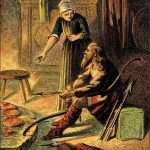
Leavened or UNleavened?
And/or: Mankind thus fell in two ways, once through Adam and once through Noah.  The Talmud says that one of the sages used to pray, “Lord of the universe, we wish to do Your will, but we are held back by our subjugation to the nations and by the leaven in the dough” (Berakhoth 17). Rashi explains that the leaven is the Evil Urge....The Evil Urge came about through Adam's sin, because afterward evil became internalized in man. The Midrash speaks of Adam as the dough (issah) of the world (see Shabbath 33). Thus the “leaven in the dough” is the internalized evil in man....Subjugation to kingdoms, on the other hand, came about from Noah's sin. Immediately after the account of Noah's drunkenness, the Torah speaks of how the world was split into seventy nations. (There are seventy nations mentioned in Genesis 10; see below.) This is the second element that makes it more difficult to free the Shekhinah.....And/or: The storm wind, as mentioned earlier - this represents mental confusion, which can be a form of drunkenness. Wine has the same root as this drunkenness and mental confusion, but it can also be used in moderation to produce joy and good. ['The Lost Princess' / Rebbe Nachman].
The Talmud says that one of the sages used to pray, “Lord of the universe, we wish to do Your will, but we are held back by our subjugation to the nations and by the leaven in the dough” (Berakhoth 17). Rashi explains that the leaven is the Evil Urge....The Evil Urge came about through Adam's sin, because afterward evil became internalized in man. The Midrash speaks of Adam as the dough (issah) of the world (see Shabbath 33). Thus the “leaven in the dough” is the internalized evil in man....Subjugation to kingdoms, on the other hand, came about from Noah's sin. Immediately after the account of Noah's drunkenness, the Torah speaks of how the world was split into seventy nations. (There are seventy nations mentioned in Genesis 10; see below.) This is the second element that makes it more difficult to free the Shekhinah.....And/or: The storm wind, as mentioned earlier - this represents mental confusion, which can be a form of drunkenness. Wine has the same root as this drunkenness and mental confusion, but it can also be used in moderation to produce joy and good. ['The Lost Princess' / Rebbe Nachman].
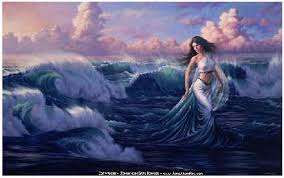
Eurynome.
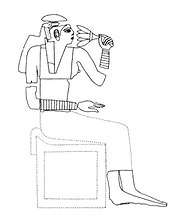
Remembering?
This is the first klipah, which is the “storm wind coming from the North” (Ezekiel 1:4). The Zohar says that this carries the “dregs of gold" (Zohar 2:203a); that is, wealth that is not used for serving God. Indeed, North is the direction of wealth (see Job 37:22; Bava Bathra 25b)....On a Kabbalistic level, before entering each of the 'upper universes', one encounters the forces of the klipah. These are the forces that discourage and confuse a person (Zohar 3:123a).
The three klipoth are represented by the “storm winds, cloud and fire” that Ezekiel saw, (Ezekiel 1:4).....
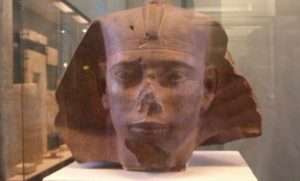
Nose job?
and by the “wind, earthquake and fire” that Elijah saw (1 Kings 19:11, 12). (Zohar 2:203a, b; Biur HaLikutim 60:86.) Since the “viceroy” fell from all seventy faces of the Torah, the giants holding the Torah tend to discourage him. HOWEVER the fourth klipah, which is known as klipath nogah. This is the nogah (glow) that Ezekiel saw (Ezekiel 1:4), and the still small voice that Elijah heard (1 Kings 19:12). This is the force that mediates between good and evil (Zohar 2:203b). It has the power to carry the viceroy from the depths of forgetting the seventy faces of the Torah (Biur HaLikutim 60:86).
Ishon.
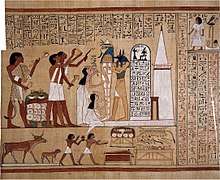
Priests of Anubis, the guide of the dead and the god of tombs and embalming, perform the opening of the mouth ritual. Extract from the Papyrus of Hunefer, a 19th-Dynasty Book of the Dead (c.1300 BCE)
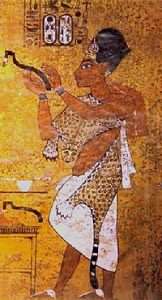 And/or: Seventy years: In Likutey Moharan 60, which is said to be a key to this story, Rabbi Nachman says explicitly that a seventy-year sleep means that one is in such a state of constricted consciousness, that he is blocked from all seventy faces of the Torah...It is significant that this exile was in Babylon, the place where the world was divided into seventy languages. The exile in Babylon was thus meant to rectify Noah's sin (Bereshith Rabbah 36). The seventy years also allude to a person's life (Psalms 90). The average person can live an entire lifetime and not rise above constricted consciousness. Of course, if he is worthy, during his seventy years, he can rise through each of the seventy faces of the Torah (Likutey Halakhoth, Sefer Torah 2:11; Kibud Rabi VeTalmid Chokham 2:3). The two episodes therefore relate to the two main tests that a person has in life. The apple represents simple desire. A person can fall from his level (sleep) because he succumbs to his desires, but he does not sleep “seventy years," and the Divine Presence is still there waiting for him when he wakes up. But a person can also fall because of intellectual curiosity, and thus become involved in atheism and disbelief. When a person drinks this “wine,” he falls away from all seventy faces of the Torah. Moreover, when he wakes up, the Divine Presence is no longer waiting for him. [same].
And/or: Seventy years: In Likutey Moharan 60, which is said to be a key to this story, Rabbi Nachman says explicitly that a seventy-year sleep means that one is in such a state of constricted consciousness, that he is blocked from all seventy faces of the Torah...It is significant that this exile was in Babylon, the place where the world was divided into seventy languages. The exile in Babylon was thus meant to rectify Noah's sin (Bereshith Rabbah 36). The seventy years also allude to a person's life (Psalms 90). The average person can live an entire lifetime and not rise above constricted consciousness. Of course, if he is worthy, during his seventy years, he can rise through each of the seventy faces of the Torah (Likutey Halakhoth, Sefer Torah 2:11; Kibud Rabi VeTalmid Chokham 2:3). The two episodes therefore relate to the two main tests that a person has in life. The apple represents simple desire. A person can fall from his level (sleep) because he succumbs to his desires, but he does not sleep “seventy years," and the Divine Presence is still there waiting for him when he wakes up. But a person can also fall because of intellectual curiosity, and thus become involved in atheism and disbelief. When a person drinks this “wine,” he falls away from all seventy faces of the Torah. Moreover, when he wakes up, the Divine Presence is no longer waiting for him. [same].
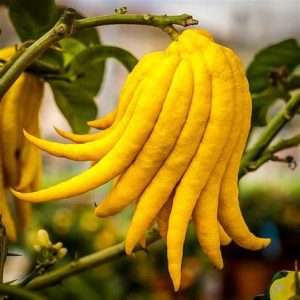
Citrus medica var. sarcodactylis, or the fingered citron, is an unusually-shaped citron variety whose fruit is segmented into finger-like sections, resembling those seen on representations of the Buddha. It is called Buddha's hand in many languages including English, Chinese, Japanese, Korean, Vietnamese, and French.
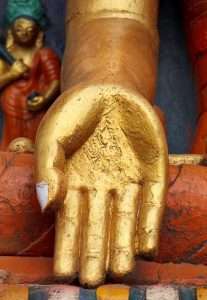 Footnote: It is interesting that the story has the fruit as an apple. In the Midrash and Talmud there are various opinions as to what the fruit was. Some say that it was a fig, a grape, an ethrog, and even wheat (Berakhoth 40a etc.; see Zohar 2:15b).
Footnote: It is interesting that the story has the fruit as an apple. In the Midrash and Talmud there are various opinions as to what the fruit was. Some say that it was a fig, a grape, an ethrog, and even wheat (Berakhoth 40a etc.; see Zohar 2:15b).
Etrog (Hebrew: אֶתְרוֹג, plural: etrogim; Ashkenazi Hebrew: esrog, plural: esrogim) is the yellow citron (Citrus medica) used by Jews during the weeklong holiday of Sukkot as one of the four species. Together with the lulav, hadass, and aravah, the etrog is taken in hand and held or waved during specific portions of the holiday prayers. Special care is often given to selecting an etrog for the performance of the Sukkot holiday rituals.[1]
Something to ponder on: ''It is not known why exactly the area is called "Scone" (pronounced "Scoon"). The search for a meaning to the word has not been helped by the fact that throughout the last 10 centuries, Scone has been written as Scon, Scoon, Scoan, Scoine, Schone, Skoon, Skune, Skuyn, Skuyne, Sgoin, Sgàin and Sgoinde. It is difficult thus to know where to start in terms of the etymology of Scone. It is known that Scone was at the heart of the ancient Pictish kingdom and thus one would think that the name would derive from the Pictish language. The existence of a distinct Pictish language during the Early Middle Ages is attested clearly in Blessed Bede's early 8th century Historia ecclesiastica gentis Anglorum, which names Pictish as a language distinct from that spoken by the Britons, the Irish, and the English.[3]
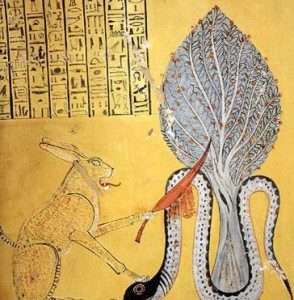
Head of the serpent? ''Headless'' to enlarge.
It was thus believed that "Scone" derives from the P-Celtic word "Sken" meaning "cut" or "cutting". This has been gaelicized as "Sgàin" (pronounced "Skene"). And may be a fine example of the amalgamation of the Pictish and Gaelic cultures and languages. The Brittonic origin of the place-name "Scone" is of great importance regarding the history and status of the place, and may explain why the famous Kenneth MacAlpin, first King of Scots, chose Scone as his capital.[4]
The meaning "cutting" could relate to what is now known as "the Friars' Den".[5] The Gaelic origin of the place name "Scone", if not entirely discredited, is rendered more unlikely by modern analysis of place names in the east of Scotland where Scone is situated. Such analysis supports the above argument that an Insular Celtic language related to the more southerly P-Celtic Brittonic languages was formerly spoken in Pictavia (and thus not a Q-Celtic language).''

Any nearby gardens?
A working example {and/or work in progress}: ''My soul has thirsted for the living god; when shall i come and appear before the face of god?'....Mary Magdalene comes face to face with Jesus. It is above all a transforming encounter....She stands in a garden, reminiscent of the Garden of Eden, yet she is here at the foot of Mount Arbel, in her home town of Magdala.'' [Pages 91/136 'Mary Magdalene: Insights from Ancient Magdala' / J. Ristine].
Spirit and soul. Which and why?
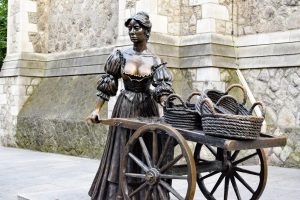
Molly Malone from Howth. A Lady of the 'Night'. The 'Eve' of something. 'Cart' to enlarge.
From a different perspective: ''Howth (/ˈhoʊθ/ HOHTH; Irish: Binn Éadair, meaning 'Éadar's peak')[2][3] is an affluent[4] peninsular village and outer suburb of Dublin, Ireland. The district as a whole occupies the greater part of the peninsula of Howth Head, which forms the northern boundary of Dublin Bay, and includes the island of Ireland's Eye, which holds multiple natural protection designations....Howth has been settled since prehistoric times, and features in Irish mythology. A fishing village and small trading port from at least the 14th century,''
''The Irish name for Howth is Binn Éadair, meaning Éadar's Peak or Hill. In Old Irish, the name is recorded as Etar, which was first plundered by the Vikings around 819.[5] One of the possible origins of the Irish name is from Étar, wife of one of the five Fir Bolg chieftains who is reported to have died at Howth.''
Question. El-Qurn = Male or female aspect?
A side step..."Together with his son {'Motmot'} - Yax K'uk Mo laid out the building plan for Copan's principle group - that part of the site lying between the Acropolis to the south and the central and Great Plaza areas to the north. Choosing the auspicious ending baktun ending 9.0.0.0.0. to inaugurate the process...{Recall David / Solomon in relation to 'their' temple? Question. What 'auspicious' date was chosen?}...When Motmot replaced Yax, a plaza floor tied it to the first versions of the ballcourt and structures.''
'Joined at the hip': {therefore Gemini/Thigh constellation links}?
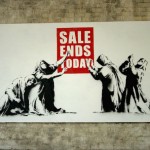
Ballcourt in relation to 'fate' one way or the other {in the 'micro' sense of the word}.. Hebrew = Thummim/Urim . In its 'Macro' sense = 13.0.0.0.0 Baktun = 2012 - but only in the 'spiritual' sense of the word, i.e.,the ''unveiling'' of something. Link to the true meaning of such words as ''Apocalypse'' or ''revelations''. Enlarged elsewhere.

Austral Island paddles to enlarge.
continued..."Built into the plaza floor was a cylindrical cist lined with stones that held the remains of a women buried in a cross legged position. The tomb was subsequently re-entered in a burning ritual that blackened the upper part of the skeleton. The lower legs were left in place, and a deer skull and a decapitated human skull were placed on the floor...The tomb was then resealed and a decapitated deer burned on top...Covering the cist on the plaza floor was the circular stone carving known as the Motmot marker. Its hieroglyph text refers to the deer offering by means of the ''tied deer hooves'' glyph that is known from the Madrid codex in the context of deer sacrifices. The Motmot inscription also refers to several features that have been identified in the archaeological record. The first being the deer sacrifice represented by the tied hooves. The second is a reference to the dedication of a ''4 - sky structure'' which describes Motmot 4 sky bands, modeled in stucco on the east and west sides of its superstructure.The third is a reference to ''smoke entering'' which is what happened when the sub floor burial chamber was re-entered and the bones of its young female occupant were 'purified by fire'. The fourth reference in relation to glyph found {E/W sides} = 4 macaw - link to name of founders ballcourt." [mesoweb.com].
''IN A BURNED RITUAL THAT BLACKENED THE UPPER PART OF THE SKELETON...'' Recall the charred body of Tutankhamun. Olive Oil used. Question. Whose tomb represents the 'beginning' of something in the valley of the KINGS. At its base. Hidden by flood 'waters'.
Coincidence or a meaningful one?

Tower? Neferneferuaten {Apostle of the Apostles?]. Recall Tut's tomb that was 'flooded'.
Side note: {A work in progress}: ''The Jewish Talmud, a 4th century AD source, referred to Magdala as Migdal-Nunya, meaning ''tower of fish''....This is one explanation for the origin of the town's name, Migdal, meaning tower..... The harbor, most likely in use up until 67AD....Archaeologists believe that shortly after the conquest, flooding covered the northern side of Magdala, burying thus preserving it for 2000 years.'' [Pages 16/25/30 'Mary Magdalene: Insights From Ancient Magdala' / J. Ristine].
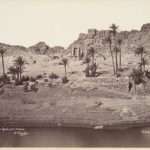 Continued: "Anointing {in modern times called 'confirmation'} is the second initiatory sacrament. Water is used to wash, oil is employed to seal. Oil, when ignited, burns, and is thus associated with the element of fire, whereas baptism is associated with water. These two elements have traditionally been regarded by the ancients as the primary polarity, which when conjoined produce 'wholeness'. Thus the following saying becomes meaningful: The soul and the spirit entered existence from water and fire. The 'child' of the bride chamber came into being by these and by light...." [Page 205, Chapter 'Means of Transformation' from the book 'Jung and the Lost Gospels' / S. Hoeller].
Continued: "Anointing {in modern times called 'confirmation'} is the second initiatory sacrament. Water is used to wash, oil is employed to seal. Oil, when ignited, burns, and is thus associated with the element of fire, whereas baptism is associated with water. These two elements have traditionally been regarded by the ancients as the primary polarity, which when conjoined produce 'wholeness'. Thus the following saying becomes meaningful: The soul and the spirit entered existence from water and fire. The 'child' of the bride chamber came into being by these and by light...." [Page 205, Chapter 'Means of Transformation' from the book 'Jung and the Lost Gospels' / S. Hoeller].
Try ''seal''.
And/or: ''Gennesaret was a tract of land' 'four' miles long on the western border of the Sea of Galilee, lying between the current day Tabgha and ancient Magdala. Known as the ''Paradise of Galilee'', here farmers could grow and harvest wlanuts, dates, olives, figs and grapes.'' ['Mary Magdalene' / J. Ristine].
Side note: ''During courting, the Bird of Paradise uses its feathers to trap light so the female cannot look away.'' ['The Chase'].
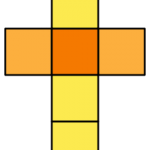
'Six'?
And/or: ''Tabgha on the shores of the Sea of Galilee {West}....A mosaic discovered in the 1930's of 'two fish in a basket, with four loaves of bread' {i.e., six;?}- right in front of a rock - which a church was built around {i.e., with that specific 'image' in mind}- in the early days of Christianity. The ''multiplication'' of which is very important....John and Mark chapter SIX speaks about the same thing: 'Come to a lonely place and rest awhile' {'Foremost of the Westerners'?}. i.e., Capernaum is where the ''multiplication'' actually took place near the 'bay' on the edge/point {'peninsula'?} of same. ['Pilgrimage of Grace' / Day nine. March 2022 / 'I Am The Bread Come Down From Heaven' / Magdala].
Side step: ''Nothing divides a party more than the divisions within it.'' [Labour spokeperson / Radio 4 / Oct, 2023].
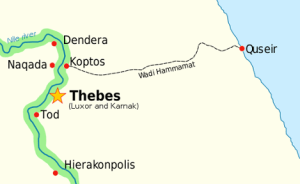
Working example: ''If the experts are right - the tree at Sycamore Gap will sprout again and this singular tree will become multiple.'' [Antony Gormley / Radio 4 / Oct. 2023]. And/or: "The light of the body is the eye: if therefore thine eye be 'single', thy whole body {'temple'?} shall be filled with light", [Matthew 6:22].
Eleven/twelve/thirteen to enlarge. Especially on the word {'Name'?} ''CLOSED''.
And/or: "The Arkenstone shone of its own inner light, and appeared a "little globe of pallid light" in darkness, and yet, cut and fashioned by the Dwarves, it took all light that fell upon it and changed it into "ten thousand sparks of white radiance, shot with glints of the rainbow.
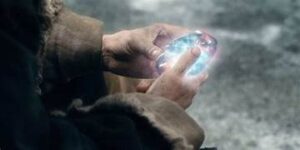
Turquoise?
The Arkenstone or Heart of the Mountain was a wondrous gem sought by Thorin Oakenshield which had been discovered beneath 'the roots' of the Lonely Mountain during the reign of Thráin I, and then shaped by the Dwarves. The Arkenstone became the family heirloom of the Kings of Durin's Folk, but was lost when the dragon Smaug stole the mountain from the Dwarves."
 Side note: "Bambi and Wilbur the pig are all famous and beloved orphans. Many creation myths involve an orphan who represents the initial emergence of consciousness from unconseious, and is faced with terrors that threaten to engulf and dissolve its tenuous infancy.
Side note: "Bambi and Wilbur the pig are all famous and beloved orphans. Many creation myths involve an orphan who represents the initial emergence of consciousness from unconseious, and is faced with terrors that threaten to engulf and dissolve its tenuous infancy.
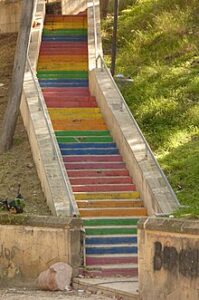
Rainbow_steps_in_Kyrenia: Rainbow_steps_in_Kyrenia. Kyrenia[a] is a city on the northern coast of Cyprus, noted for its historic harbour and castle. It is under the de facto control of Northern Cyprus. While there is evidence showing that the wider region of Kyrenia has been populated before, the city was built by the Greeks named Achaeans from the Peloponnese after the Trojan War (1300 BC). According to Greek mythology, Kyrenia was founded by the Achaeans Cepheus and Praxandrus who ended up there after the Trojan War. The heroes gave to the new city the name of their city of Kyrenia located in Achaia, Greece.

A solitary stone: Made from the 'bowels of the earth'. Question. What comes next?
The childlike openness of the orphan is able to embrace unorthodox agencies of help, and while the orphan is naive, he or she may also exceed the prevailing consciousness or wisdom. We can defensively isolate from the world, or the self, repudiating possibilities of integration. Quite different from this is the orphan as the authentic goal of individuation. Alchemy called its philosopher's stone “orphan,” denoting the uniqueness of the individual self and also that its source is mysterious, an amalgamation of conscious and unconscious factors (CW 14:13). Orphan describes the “smaller than small, greater than great,” ordinary-extraordinary quality of the self. However, to become singularly who one is may also mean a lonely going beyond the ruling spirit of a time or place. Thus the “achieved orphan” may be experienced both as a “solitaire,” and as a solitary." ['Book of Symbols' / Taschen].
'Foster'.
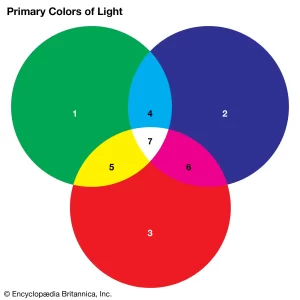
A working example: ''The glorification of the transfigured Osiris as Djed-Pillar {after being saved from 'drowning' by Horus and his sisters making peace with Seth}. The colours surrounding Osiris are red and gold {orange?}, and the Djed is hidden deep within the caverns of the earth. Isis and Nephthys kneel beside the Djed, accompanied by baboons above greeting the sun {'orange'?}....The life giving powers of above and below.....the horizon.'' [Page 42 'My Heart My Mother: Death and Rebirth in Ancient Egypt' / A. Roberts].
And/or: Baptism font outside in the form of a flower petal {'three'?} as opposed to the cross form one {'straight'} at Avdat {East}. [Day 14 'Living Water: Ancient Mikvaot and Gardens of Living Water / Magdala / Pilgrimage of Grace / Lent 2022].
''To move straight ahead is to follow ones nose.''

'Twentyone segments?
And/or: Two fountains {with 'venetian' mosaics }in the form of 153 fish {pointing upstream/north} at Magdala fed by spring water from Mount Arbel. ''Fish eye'' pointed out by K. Nichols in relation to: ''One hundred and fiftythree fish in a net - referring to Revelations John 21{twentyone}. There were 153 nations at the time.'' [Same]. And/or : Meat/rightside/burning coals link/quote to same {i.e.,153}. John 21.
N.B. Bible story gives 'five' loaves. Therefore multiply in relation to 'six/seven' links? AND/OR Capernaum/Tabgha = N-N/W.
Menkaure to enlarge.
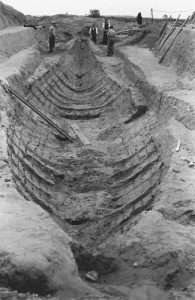
'Eightyeight' feet in length.
Side note: The old St. Pauls Cathedral dated from the 11th century. Took 153 years to complete...One of the largest buildings in Europe. 'Star' shape pattern in the 'middle' of the transcept {'right angle' link}....And/or: It took 'thirtyfive' years for Christopher Wren to rebuild - after the 1666 fire...It has 'eightyeight' spiral steps in the S/W Tower leading up to the Clock Tower.'' ['Mirthy' /July 2022].

Fire and water. Which and why?
Refresher: "For the process of calcination, the slow burning fire, to complete successfully, it is silence... that must be observed in order to create an hermetically sealed vessel - yourself - with no leak at the seam." [Same book].
'She Who Loves Silence' ? Enlarged elsewhere.
Analogy? The fiftysix Aubrey holes that first began Stonehenge. Composed of the smaller blue stones. Eventually - in the course of 'its' development {understanding?} removed to be placed on the inside of the larger Sarsen stones. Cremated skeletons found in those same 'pits'. Something external now internal - represented with ''ashes'' {death/rebirth}. ['Secrets of Stonehenge' / Mentioned elsewhere].

True center ?
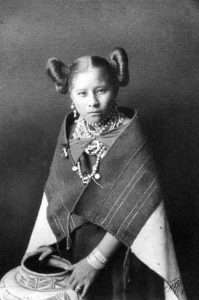
The Hopi Squash Blossom / Butterfly Whorls. Recall the ''ear tablets'' in the Nile Delta.
Side note {something extra?}: "Archaeology seems to confirm that Wandlebury was in fact a border settlement. There were once two great forts on the spur of hills on which Wandlebury now stands. They are within a mile and a half of each other. One however, had been completely filled in and will have been entirely removed in the quarrying of chalk. This fort, to the north of Wandlebury and overlooking the village of Hinton, is now known as Cherry Hinton....The late professor McKenny Hughes excavated it and found many skeletons in the filling of it.....The fort, a nearly true circle, with entrance on the east, was laid out during the first phase of the Iron Age. There seems little doubt that the place was stormed....Workers killed. Wandlebury itself belonged to the Iceni tribe. The Horse People.... " [Page 69 'GogMagog' / T. Lethbridge].
Heliopolis to enlarge.
''A spur is a lateral ridge or tongue of land descending from a hill, mountain or main crest of a ridge. It can also be defined as another hill or mountain range which projects in a lateral direction from a main hill or mountain range.''

Cherry Street Inn {Groundhog Day}.
Question. Does ''blossom'' represent anything?
And/or: ''Apples are part of the rose family which includes fruit like strawberries, pears and cherries.''
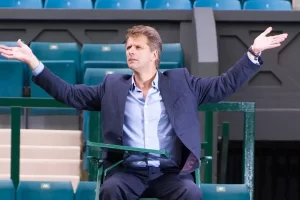
''It might just be me. I dont want to eulogise to early. Anything can happen in this match and championship - BUT we are supposed to sit here and have an opinion occasionary, AND I think that Korda is absolutely magnificent.'' [Quote just after Korda won the first game of the first set - against Alcarez at Queens/2023. ALL downhill from there].To many strawberries? or just the Kiss of Death?
Refresher: ''In each of us lies a rubbish heap as well as a treasure house."

Glauberg Warrior. Closed torc at the TOP of the spine {i.e., kundalini}. The completion of something. Blossom petals? Something taking root? Bean/Vegetative ears? As a means....
Hence: "I think myself that much of the material, which was used to fill the figure in {i.e., in relation to the 'female' figure found on Wandlebury Hill. Enlarged elsewhere} - was taken from the heap of scourings and old turf, which came originally from the figures themselves. The chalk which had been thrown back into it, had long been exposed to frost and weather....On top of it was a layer of pea chalk, which so many archaeologists have been taught to regard as the bottom of everything. Some inches beneath this pea chalk.... were found Romano-British or Belgic pottery....Below the goddess's breast, the back of her horse was found to be rather wider than planned...." [Page 54. Same book].
Question. The Beaker People ?
Side note: ''The terms Jollying and Jiggering are techniques used in pottery.'' ['The Chase' / 2018].
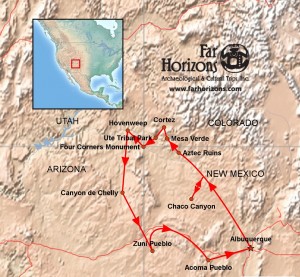
'The Four Corners' - what some call - The Stonehenge of the West - Coincidence or a meaningful one. Question. Head of the Corner? What animal {if any} would represent those ''boundaries''?
Refresher {from Part 2},,,"In this dream the anima appears in her proper positive role - that is, as a mediator between the ego and the self. The 4x4 configuration of the pictures points to the fact that the celebration of this inner Mass is performed in the service of totality. As Jung has demonstrated, the nucleus of the psyche {the Self} normally expresses itself in some kind of fourfold structure. The number four is also connected to the anima because, as Jung noted, there are four stages in its development. The first stage is best symbolised by the figure of Eve, which represents purely instinctual and biological relations. The second can be seen as Faust's Helen: 'She' personifies a romantic and aesthetic level that is, however, still characterized by sexual elements. The third is represented , for instance, by the Virgin Mary - a figure who raises love {eros} to the heights of spiritual devotion. The fourth type is symbolised by Sapientia, wisdom transcending even the most holy and the most pure. Of this another symbol is the Shulamite in the Song of Solomon. {In the psychic development of modern man this stage is rarely reached. The Mona Lisa comes nearest to such a wisdom anima}. At this stage i am only pointing out that the concept of fourfoldness frequently occurs in certain types of symbolic material... But what does the role of anima as guide {''teacher''?} to the inner world mean in a practical terms? This positive function occurs {negative = 'shadow' ?} when a man takes seriously the feelings, moods, expectations, and fantasies sent by his anima, and when he fixes them in some form - for example, in writing, in painting, sculpture, musical compositions, or dancing. When he works at this patiently and slowly, other more deeply UNconscious material wells up from the depths and connects with the earlier material..." [ 'Man and his Symbols' /C. Jung].
Refresher: ''Buck-eye is a term used for the Horse chestnut tree.''

A silent VOID in the night?
And/or: "Out of the silence of the night, we hear many tiny sounds: the rustle of wind in leaves, the distant calling of an owl, and the faint lowing of a cow far across the dark plain..." ['The Way of Merlin']. All as a means...?
Analogy of same {process?}..."What is decisive for me is that i dream about physics as Mr. Jung [and other non-physicists] think about physics. Every time i have talked to Mr. Jung [about the ''synchronistic'' phenomenon and such], a certain spiritual fertilization takes place." Wolfgang Pauli.
Refresher: "...Crowley once said that the magician's sole aim was to interpret his own 'magical' record, and after many years, i have come to agree with him." [Extract from the book 'The Magister'].
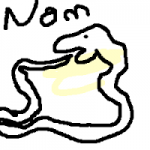
As part of that ''true poetry''. Others found throughout. Starting below.
From a different perspective: ''My thesis is that the language of poetic myth anciently current in the Mediterranean and Northern Europe was a' magical' language bound up with popular religious ceremonies in honour of the moon goddess, or muse, some of them dating from the Old Stone Age, and that this remains the language of TRUE poetry....but it is only fair to warn the reader that this remains a very difficult book, as well as a very queer one {'peculiar'?}, to be avoided by anyone with a distracted, tired or rigidly scientific mind...." [Forward to the book 'The White Goddess' / R. Graves].
Side note: Why a 'serpent'? Crawls on belly {horizontal?} but can strike in the vertical? Can be found in both salt and fresh water? Sheds its skin? etc. All as a means...?
Try ''poison/antidote''.
Refresher: "The children of Seth [Set] first possessed that peculiar sort of wisdom, which is concerned with the heavenly bodies",[chapter five.' The Sirius Mystery'],

'Cup' or 'cauldron' or does it matter.
Hence..."Earlier descriptions of such Faery weapons can be found in the Irish counterpart of the 'Mabinogion', the 'Lebor Gabala Erenn' which tells how the Faery race of Tuatha de Danaan emerged from four cities: Falias, Gorias, Finias and Murias. They brought with them four magical weapons: from Falias came the stone which is now called the Stone of Destiny 'La Fial' {stone of Scone link?}; from Finias came a spear, from Murias came a cup or cauldron, and from Gorias came a sword. These four 'magical' weapons will be studied in greater detail later, but it is well worth bearing them in mind throughout the following chapters. From these earliest appearances they have passed into legend and esoteric lore, and along the way acquired a formidable weight of human history and significance, but it is essential to remember that they were originally 'gifts from Faery', {archetypes?}...as magical and talismanic symbols of immeasurable power and significance...
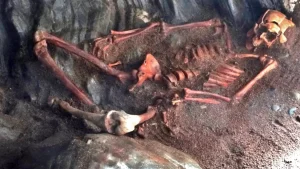
Large stone found between the legs as if giving birth. N/E Scotland - at the foothills of the Highlands. 'Aberfoyle' to enlarge.
Current esoteric practice recognises the power of the four fold symbolism contained within these weapons but often fails to acknowledge their original significance , preferring to interpret them from a purely human point of view. They can be equated for example, with the four Jungian functions of consciousness: sword/intellect; wand/intuition; cup {or 'horn'} / emotion and stone/sensation. This approach can be a useful psychological tool and will often lead to worthwhile realisations of the comparative strengths and weaknesses of an individual's psychic make-up. But to use them primary within the parameter of human endeavour in the world, even when that endeavour is allied to the spiritual world, is to neglect their intended meaning and purpose. Our forgetting of their original and greater meaning lies alongside the more general forgetting which has occurred with regard to our 'Faery' companions who share this land..." ['Red Tree, White Tree / W. Berg. Emphasis, this readers].
And/or: 'Spear Side' is a reference to the male side of a family. Distaff the female side.'' ['The Chase' / ITV / 25.2.22].

Ladder of the mind?
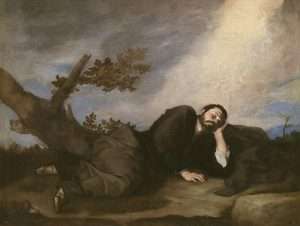
'Stump'? Any "spoor?" Dreaming about what he could make out of - new growth? Sycamore Gap?
A working example: "The seven years of the Boys' House passed {warrior training}, and together with the rest of their year Lubrin and Dara went through the dark ceremonies of the Man-Making. Together they passed the Hidden Days; the three days when the women of the clan keened for them {'siren'?} as for the 'dead'. And together they came back, walking proud among the spear warriors, to their place in the Men's Side, with the newly pricked and painted man patterns still sore and reddened on their breast and shoulders. Now Lubrin wore the slim bronze collar that marked him for a chief's son." [Page 41/2 'Sun Horse, Moon Horse' / R. Sutcliff].
Spots/stripes? Narrow/wide? What comes next?
A work in progress: ''Although the word 'shaman' technically does not apply to the Celts, many elements of world shamanism - from the animistic reverence for all things {especially, all living beings} to the recognition of a spirit realm that exists alongside the material universe - have parallels within the culture of the Celts. Shamans may have contacted spirit guides, whereas the Celts had dealings with the faeries...'' [Page 60 'Idiots Guide to Paganism'].
-
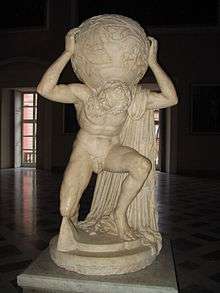
What would the remedy be for such a weight ''upon ones shoulders''?

Side note: "There is some truth in all these theories because it is normal and natural for every people to find their own metaphor for a condition that is understandably difficult to express in human terms. We leave it to the reader to find the most acceptable method for understanding's sake, as long as each remembers that archetypes may inhabit the 'Otherworld' as well as the psyche, that the Shinning Ones are 'real' in their own world and not the inventions of a disturbed mind. While it is currently acceptable to speak about the possibility of life on other planets, life on other 'levels' is dismissed as nonsense." [Page 111 'The Western Way'].
Another archetype: ''In ancient Egypt a shen ring was a circle with a line tangent to it, represented in hieroglyphs as a stylised loop of a rope. The word shen itself means, in ancient Egyptian, encircle, while the shen ring represented eternal protection.'' [Wiki].
Celtic torc?
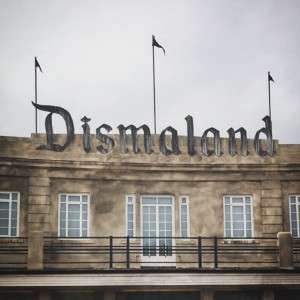
Whats the cure?
Continued: The word Faery in relation to 'plant' and 'vegetable' symbolism - together with: ''It is often said, particularly in regard to the stories of the quest for the Holy Grail, that it is essential to ask the right question. The results of percival's failure to ask the right question after he had witnessed the Procession of the Grail were extreme: The Grail Castle and all its inhabitants 'disappeared' and it was a long time before he found them again. Once I had asked who Guenevere was, the answer came very rapidly. She is neither an archetype {authors opinion}, nor a goddess, nor an ineffectual human being. She is Faery. That is to say, she has an objective reality of her own, Faery kind. She exists within that faery reality and she comes from a faery kingdom which also has its own, objective reality..." [same book].
'Queendom'.
''Ask the right question'' in relation to the process {step by step?} of say, a eureka moment {beginnings of?}. Hence...

East and West. North and South: Shadow or light?
"Once this basic principle is accepted, so much else falls into place. To take but one example, the usual translation of the name Guenevere is 'White shadow'. This does not mean, as it is often assumed, to indicate a pale or ineffectual or weak human but a shinning Faery. It is an accurate description of her physical appearance to human eyes, and how the white light of the 'faery' world shines bright and clear through the physical form..."
Try ''shinning ones'' and/or: ''shimmering''?
Question. Aura?
IN THE OBJECTIVE SENSE OF THE WORD! {i.e., logos}.
"Who are you?'...The First Men call us the Little Children, but we were born long before them." [Game of Thrones. Series 4. Episode 10].
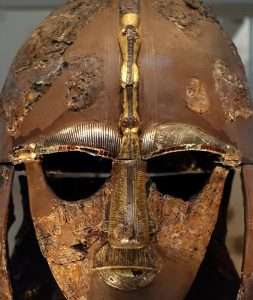
Dragon? Above or below the clouds?
And/or: Dragonglass was a very important tool to the Children of the Forest, using it to fashion weapons. A long-forgotten secret is that the Children created the White Walkers as a weapon, by transforming humans into them. This was achieved in a magic ceremony that involved plunging a dragonglass shard into a human's chest.[5]
A {working?} example: ''This question {i.e., the right one}, has many different sides {key} to it''? Taken from the book 'In Search of the Miraculous'. Follow the title of the book to 'see' it from ALL sides.
Side note: ''The 'otherworld' is a celtic name for the spiritual realm. It is also known as the underworld or by various names in Irish or Welsh. One of the most wonderful names for the otherworld is Tir na n'Og, an Irish term that means 'the land of the young'....'' [Page 63 'Idiots Guide to Paganism' / Carl McColman].
GogMagog?
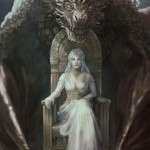
Heart of the dragon. 'See' it?
SIDE STEP: On an Indonesian Island lower jaw bone and teeth found {within the sediments of an ancient river bed} - to what became known as Homo Floresiensis - a 'hobbit' type individual - that predates 'modern' humans. The word ''hobbit'' used/chosen/selected {nickname?} because of the film of same name at the time of the original find {i.e.,2003}. [Wiki + PBS America 'The Hobbit Enigma']. Coincidence or a meaningful one?
"This wisdom of my castle {Grail castle?} is not one of theory and speculation of the intellect - ALTHOUGH WISDOM OF THAT KIND MAY LATER COME - by personal realisation with the male and concrete mind - but my wisdom is given in another way, by story, and by being, and experience and human contact..." ['I call it Magic']. The above in reference to Melusine {of ''faery'' origin} - the START of which {if only in the 'landscape' sense of the word...
"About 'twentyfive' kilometres southwest of Poitiers the train that runs across Poitou to the port of La Rochelle passes over a viaduct {'bridge'?} that spans a great bow bend in the River Vonne. Here looking out on the left hand side, high as you are, you can see an ancient church that stands on a great escarpment of rock {'terrace'?}, slightly higher than the train. This is the church of Notre Dame in the little town of Lusignan. Both church and town are celebrated for having been built by the faery Melusine, along with a mighty castle here, which for centuries was a thorn in the side... ['Melusine of Lusignan: and the Cult of the Faery Woman' / G. Knight]. Try Part 1.
Side note: The great bend in the Nile river {S/W?} of its southern borders. Coincidence?
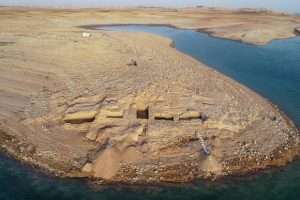 A working example: ''An international team of archaeologists from Germany and Kurdistan came upon a surprising discovery as the ruins of a 3,400-year-old palace emerge from the waters of the Tigris River at the site of Kemune in the Kurdistan region of Iraq. It is the only Mittani city we know so far that is located directly on the Tigris...The ancient builders had propped up the structure {'leaning'?}, with a monumental terrace to keep it from sliding down the slope...They found traces of wall paintings, with RED geometric motifs against a BLUE background. Archaeologists also found distinctive types of pottery featuring light - coloured designs against a dark background. ...Mittani was one of the major regional powers of its time, along with the Egyptian New Kingdom....A pair of tablets excavated in Egypt detail the dowry gifts sent along with the Mittani kings daughter, Tadu-Heba, when she married Amenhotep III.'' [Pages 34-38 'Archaeology' / March/April 2023].
A working example: ''An international team of archaeologists from Germany and Kurdistan came upon a surprising discovery as the ruins of a 3,400-year-old palace emerge from the waters of the Tigris River at the site of Kemune in the Kurdistan region of Iraq. It is the only Mittani city we know so far that is located directly on the Tigris...The ancient builders had propped up the structure {'leaning'?}, with a monumental terrace to keep it from sliding down the slope...They found traces of wall paintings, with RED geometric motifs against a BLUE background. Archaeologists also found distinctive types of pottery featuring light - coloured designs against a dark background. ...Mittani was one of the major regional powers of its time, along with the Egyptian New Kingdom....A pair of tablets excavated in Egypt detail the dowry gifts sent along with the Mittani kings daughter, Tadu-Heba, when she married Amenhotep III.'' [Pages 34-38 'Archaeology' / March/April 2023].
''The Monarch's birthday parade is known as Trooping of the Colour.'' ['The Chase'].
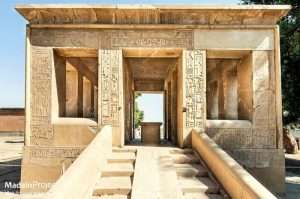
Shadow/light at the end of a 'ladder'. All within the bend of a river. ''Neck'' to enlarge.
''The Trooping of the Colour has marked the official birthday of the British Sovereign for over 260 years. Over 1400 parading soldiers, 200 horses and 400 musicians come together each June in a great display of military precision, horsemanship and fanfare to mark the Sovereign's official birthday.''
'Ten'?

Bearded/UNbearded?
''Wisdom of that kind may come later {2-3 paragraphs back},'' in relation to: "The Hawk, by reason of its ability to remain poised in the empyrean, was a perfect symbol of the divine self which, detached from all things of earth and form, looks down upon them with the eye of equanimity. The whole subject should be carefully studied, and if half as much care and attention is given by the reader to the study of the 'Gods' as the average man devotes to his daily newspaper, a great deal of useful knowledge of profound importance in 'magic' will be gained." [Enlarged elsewhere].
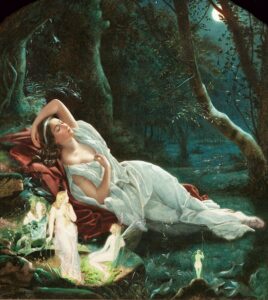
Titania is a character in Shakespeare’s play, A Midsumer Night’s Dream. She is the Queen of the fairies – the wife of the Fairy King, Oberon.
Titania is one of the characters in the play, like Puck, that are taken from traditional folklore. The fairy queen doesn’t have a name in folklore: Shakespeare took the name from Ovid’s Metamorphoses in which the daughters of Titans are known as ‘Titanias.’
In A Midsummer Night’s Dream, Titania is part of one of the play’s subplots. In that story, she has a dispute with Oberon and he punishes her by using a potion that makes her fall in love with the first creature she lays eyes on when she awakens. She wakes up and sees Bottom, who has been turned into an ass by Puck because he has been behaving like an ass. That leads to a great deal of comic content, after which the matter is resolved with the spell broken, Bottom being returned to his former condition, and Titania horrified by what has happened to her.
"...looks down upon them with the eye of equanimity" = 'an objective view'? - relative to an understanding? Regardless of subject.
Side note: ''Father Antonio del Castillo had better luck; since he was a Franciscan, he lived in the Holy Land for several years and could explore it more in-depth. Gathering all his experience, in 1666, he published The Devout Pilgrim. About Magdala, he writes: “Some two miles away (from Gennesaret), you see the fields in which the Lord miraculously fed the five thousand men with five loaves and two fishes (…) Next to them, there is a castle called Magdalo because it belonged to the Magdalene; and close to these fields, about a mile away, there is the so-called ‘Mount of Christ’ because the Lord frequented it much, and it was there that he retired to pray.” As you can see, for Antonio Castillo, some of the most important events in Christ’s life happened around the Magdalo Castle.'' [Magdala / Israel].
'1666' to enlarge - from the synchronistic point of view.
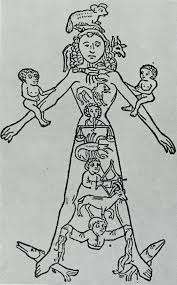
Something to ponder on: ''In an animated world, the trees speak runes in the configurations of their branches; the wind sings understandable songs; the seas sucking on the rocks on the shoreline spins a story; and every aspect of Nature visioned from this Romantic world-soul perspective has its keeper, its soul resonant and personified aspect, seen best when the senses are rinsed with wonder. Then we re-personify the earth with gnomes, goblins, fairies, elves, dwarves, trolls; the waters with undines and melusines; the air with sylphs; and fire with salamanders. And when we engage {and/or study?} with these aspects of the Dream of Life, we work with the 'little people' who are the artisans of the fabric of the Dream.'' [Page 203 'Fruits of the Moon Tree'].
A working example: ''Ancient Phoenicians, renowned as astonishing sailors, offered saffron to the sylphs and Zephyrs of Ashtoreth, goddess of fertility, and to the moon, silver orb of the unconscious that rules the tides of wind and sea, of women's bodies and humanity's soul. 'Witches' still use saffron to 'summon' these airy spirits, which will respond to the subtlest summonings of the heart, the aspirations of the soul, and the viscerally wise demands of the body. If you pay attention, they will 'tell' you which path to take when a fork appears in the road.'' [Page 120 'Book of Shadows' / P. Curott].
Alexander?
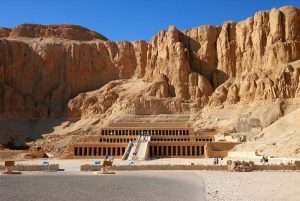
At the 'back' or 'front' of the HORN? That same one that 'grows' out of a head.

Any mining work within?
As an example: ''Snow White' or Snowdrop' with its alchemical and mythical reference through the seven dwarves...sanitised and cleaned up by contemporary myth makers 'under the wing' of Walt Disney....This is a far cry from their actual dirty, hairy, work-worn instinctual natures, and from their collective and non-individualised FEEL. They are grouped because they are components of one god, Hephaistos, the ONLY Olympian who works - the blacksmith and metal worker, the artisan {The Roman Vulcan, Scandinavian Loki, English Wayland Smith, Irish Goibnu or Goban}. They are collectivised because they work the mines that are the gateways in and out of the collective realm of psyche - the passageway between upperworld and underworld {'higher/lower' and/or 90/180 degrees?} - reflected in the rites of passage of ANY culture, the process of GROWING into the world {'flower'?}. As Hephaistos is the god who labours, and the god who midwives Athene from the laboured forehead of Zeus, so the 'dwarves' are the workers of our rites of passage, they MIDWIFE the stages of our Dream of Life {'archetypes'/images/hieroglyphs?} - or facilitate our progress through it {study?}....The story of Snow White begins with the Queen sitting sewing at a window that has an ebony frame {Philae?}...'' [Page 205 same book].
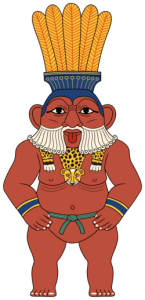
'Tasting'?
Fulcanelli and/or Avebury as a means....?
Aberfoyle?
 A working example: ''Like the Gnostics of old before him, so Jung also was accused of being gloomy and pessimistic in his outlook {'melancholy'?}. Perhaps the best illustration of his attitude is found in the dream of the woman patient - who saw herself submerged in a pit filled with a dangerous substance and who then perceived Jung pushing her right down into the pit with the words: 'Not out but through!'....'' [Page 197 'The Gnostic Jung' / S. Hoeller].
A working example: ''Like the Gnostics of old before him, so Jung also was accused of being gloomy and pessimistic in his outlook {'melancholy'?}. Perhaps the best illustration of his attitude is found in the dream of the woman patient - who saw herself submerged in a pit filled with a dangerous substance and who then perceived Jung pushing her right down into the pit with the words: 'Not out but through!'....'' [Page 197 'The Gnostic Jung' / S. Hoeller].
Part 1 to enlarge.
A work in progress: ''The way i look at it is i dont think i will be able to truly understand where i was in my own head in that period of time. I just wanted peace, and at the back of my mind i knew what that meant.... i just wanted a break from my own mind.....I was saying things outloud that i hadn't comprehended in my own head before ...and once out of my mouth - OUT in the world so to speak....i could see the reality of the situation i had been in....until eventually i could explain to the family what had happened....and that truthfulness helped me to come through to the other side happy. [Fergus: 'Roman Kemp: A Silent Emergency' BBC3 / 2021}.

As part of that ''true poetry''. Others found throughout i.e., the hawk or eagle is another.

Opening of the Mouth.
Refresher: ''My thesis is that the language of poetic myth anciently current in the Mediterranean and Northern Europe was a' magical' language bound up with popular religious ceremonies in honour of the moon goddess, or muse, some of them dating from the Old Stone Age, and that this remains the language of TRUE poetry....but it is only fair to warn the reader that this remains a very difficult book, as well as a very queer one {'peculiar'?}, to be avoided by anyone with a distracted, tired or rigidly scientific mind...." [Forward to the book 'The White Goddess' / R. Graves].
Side note: Why a 'serpent'? Crawls on belly {horizontal?} but can strike in the vertical? 'Hugs' the surface of the earth? Can be found in both salt and fresh water? Sheds its skin? etc. All as a means...?
Try ''poison/antidote''.
Refresher: "The children of Seth [Set] first possessed that peculiar sort of wisdom, which is concerned with the heavenly bodies",[chapter five.' The Sirius Mystery'],
'On Having No Head: Zen and the Rediscovery of the Obvious' / D. E. Harding.
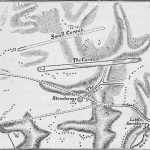
What was found in the bottom of the cursus? Question. Were those ancient woods {'forests'?} cleared because of something ''to be'' created or farmed?
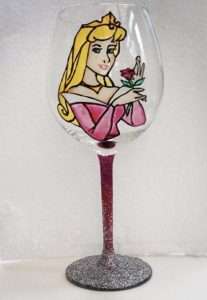
'lightness' in relation to ''superlative''
Hence: The town to which Erec is led in his pursuit of the knight is seething in anticipation of an imminent event - the Contest of the Hawk - which is to take place the next day. Even knights and ladies who are taking no direct part in the contest are sporting sparrow hawks, falcons and hunting birds of various kinds. The contest is an annual one, and like the culmination of the Hunt for the White Stag, is directly concerned with the superlative feminine beauty...{recall the reasons {origins?} for the story of the 'fall' of Troy}. Any test concerning a hawk is likely to have its origins in the world of Faery. It is a theme that occurs again and again in legend and Professor R. S.Loomis, in Arthurian Tradition and Chretian de Troyes, cites no less than twelve {'144'?} versions of the sparrowhawk contest...There is also a body of legend concerning castles of sparrow hawks where 'unearthly' ladies dwell who are capable of flight; whilst another 'faery' and 'hawk' test tradition is associated with Melior, one of the sisters of the famous faery Melusine of Lusignan. In her case, the knights being challenged to watch over her 'hawk' for three days and nights without falling asleep." ['The Faery Gates of Avalon' / G. Knight. Emphasis, this readers].
Try ''fairy''. 3:9
And/or: "The Glass Coach is one of the principal State carriages of the British monarch. It is driven by a coachman and may be pulled by either two or four horses 1. The coach was built by Peters & Sons of London in 1881 and was originally designed as a sheriff’s coach, but was purchased by the Crown in time for the coronation of George V in 1911 1. It is used each year on various state occasions, but has most famously been employed at royal weddings, either to convey the bride-to-be to the church before the service or to transport the newlywed bride and groom from church after the service 1. When not in use, it is maintained (and often on public display) at the Royal Mews in London ."

A beginning or end?
A working example: ''One night i dreamed a dream of SOUL. I, the dreamer, lay asleep. A hawk with liquid golden eyes and heavy brown wings streaked with yellow, swooped out of the night sky and through the bedroom window. The window was closed, but this hawk penetrated the glass as if it was made of AIR. And while i slept, he walked all through the house, leaving FOOTPRINTS everywhere - including the papers on which i had been writing....
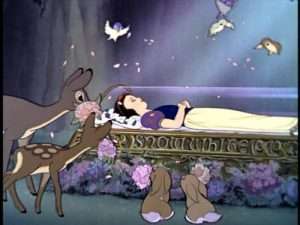
What 'aspect' is dreaming?
When it was day, he spread his wings and flew back out of the window, disappearing into gold-rimmed clouds. I, the dreamer in my dream, awoke, thinking, 'I had the strangest dream about a hawk!' Then i looked down amazed to see footprints of the hawk marking my shirt....The hawk i dreamed seemed to be a sign of deepening transformation.....Soul, like the body, is a process in the making. Though we are born with a soul, soul continues to develop, adding to its luster like a pearl hidden inside an oyster.'' [Page 226/7 'Dreams of Isis'].
City of Falcons {Hierakonpolis}.
''Shining'' to enlarge.
'Star of ones being is rising'?
Side note: ''In using metaphors, depicting an object that had some real or generally supposed similarity with the idea expressed. In this way sublimity was designated by a sparrow hawk because of its very lofty flight....The mother by a vulture because such maternal tenderness was attributed to this bird that it was said to nourish its young with its own blood.'' [Page 19 'Temples of Karnak' / R. Schwaller de Lubicz].
Continued: That final sentence {representation of} - in relation to the 'effort taken' {i.e.,to focus} - benefit of...

Primrose or thorny rose?
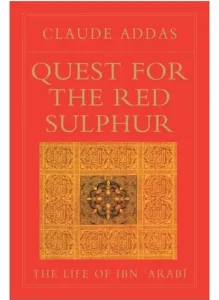 Hence: ''In Wales and Ireland primroses are reckoned fairy flowers and in English folk tradition represents wantonness {i.e., 'the primrose path of dalliance'}. ['Page 42 'The White Goddess' / R. Graves'].
Hence: ''In Wales and Ireland primroses are reckoned fairy flowers and in English folk tradition represents wantonness {i.e., 'the primrose path of dalliance'}. ['Page 42 'The White Goddess' / R. Graves'].
''Dalliance'' in relation to: 'On Having No Head: Zen and the Rediscovery of the Obvious' / D. E. Harding.
Side note: ''There doesn't seem to be in Homer's tale any particular negative connotation thats attached to Odysseus' dalliances....'' [In reference to his 'seven' year stint with the ''nymph'' Calypso].
And/or: ''The name "Calypso" derives from the Ancient Greek καλύπτω (kalyptō), meaning "to cover", "to conceal", "to hide", or "to deceive".[1] According to Etymologicum Magnum, her name means "concealing the knowledge" (καλύπτουσα το διανοούμενον, kalýptousa to dianooúmenon), which – combined with the Homeric epithet δολόεσσα (dolóessa, meaning "subtle" or "wily") – justifies the reclusive character of Calypso and her island.'' [Wiki].
And/or: ''The word 'fairy' entered the English language in the 13th century, from the old English word meaning 'to marvel' and originally referred to the state of mind - feyrie or fayrie, meaning the state of being enchanted. J.R.R. Tolkein defined faerie as 'beauty that is an enchantment'...'' [Page 401 'The Secret History of the World'].

Papyrus or linen?
From a different perspective: ''Most often a Ba soul is seen inscribed on the walls in the temples of Egypt as a bird, usually a Falcon, a kite, or some kind of hawk or raptor, with the face of the person whose soul it represents.'' [Page 154-5 ['The Union of Isis and Thoth'].
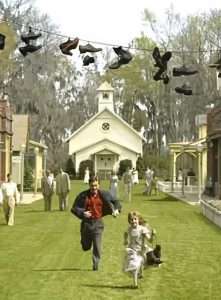
'Wire'?
'Face on' or in 'profile'?
''The Red Kite, one of Britain's common birds of prey, is distinguished by a forked tail.'' ['Tipping Point'].
'Duality'?
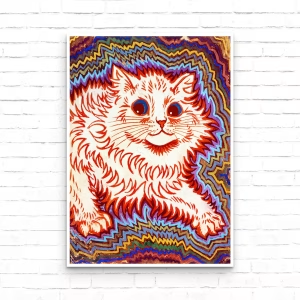
Louis Wain: "Cats are very good conductors of electricity."
Side step: Neanderthals had a liking for polished eagle talons and "the iridescent feathers of the Red Kite." {'Human' / S1 EP3}.
And/or: "Beaded shells with pigmentation." {same}.
Red Ochre?
'Quest For The RED Sulphur' / Claude Addas.
Continued: Also found but now belonging to Homo Sapiens - clay 'tablets' with the imprint of a weaving design made possibly by nettle. And 'garments' made of same.
N.B. Homo Sapiens from Africa {south}. Neanderthals from Europe. Originating in Russia {north}.
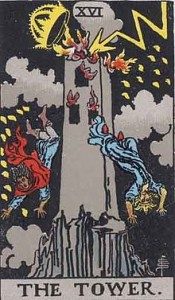
'Shock' to enlarge.
A working example: "At Abydos, we both received shocks on our last trip. Denise stepped on an electrical wire and was shocked. It took a long time to heal. My shock came when the guide {Mohamed} showed me a scene of Isis and Osiris on the wall. Isis was depicted as a kite {bird} hovering above the body of Osiris. Mohamad said, "We have our virgin birth too." At that moment, i felt a sharp pain in my heart, and i had a sudden realization that i had been there. Where? I had no idea. I pondered this for a while - but still not a clue." [Page 136 'Invoking the Scribes of Ancient Egypt'].
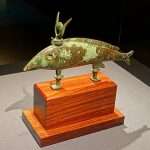
Upstream or downstream?
Side note: {i.e., as one example}: ''On yet another wall the goddess has transformed herself into a kite and HOVERS poised above the erect phallus of Osiris. In this way she performs the Hieros gamos, or rite of the sacred marriage, wherein the future life of Horus is conceived. Here is Osiris resurrected with all but the one missing part that legend tells us Isis could not find - that phallus {i.e., 'fire'} that was eaten by the fish. Yet one last image shows Osiris, a corpse, lying among the papyrus plants beside the frog goddess of birth {'marsh'?} and rebirth, Heket. I interpret this to mean that he is reborn through Isis when she births Horus in the papyrus swamp....''
Fishers of Men.

Subjective or objective?
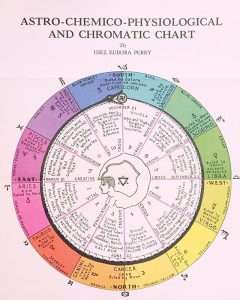
''In truth, the papyrus {'flower'?} image has been gouged out - perhaps by ancient Egyptian priests themselves who may have erased the the procreative power of the temple before it was closed, perhaps by early Christians who found the depiction offensive.'' [Page 298 'Dreams of Isis'].
And/or: "Today we go to the temple honouring Khnum, Neith, and their son Hak at Esna....On the walls of Esna intriguing combinations of hieroglyphs are found that are not found anywhere else. We walked into the hypostyle hall with our heads up, amazed at the birds chirping and roosting on top of the papyrus blossom columns while we stared at the stunning hieroglyphs all around us. Rather than inscriptions of a cosmological zodiac on the ceiling as in many Egyptian temples, there are odd representations of the hours of the day and night that contain, for example, a slug with two human heads and a crowned centipede or serpent with multiudinous legs. On the walls frogs crouch and crocodiles swagger in virulent abundance. The rams march through the hieroglyphic inscriptions like a herd of animals sojourning while jackals gallop after owls." [Page 123 'Invoking the Scribes of Ancient Egypt'].
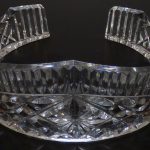
Rose crystal
A working example {i.e., a work in progress with the above in mind}: From the Lunar sphere the disembodied spirit flies upwards to the realm of 'Mercury', from there to 'Venus' and then on to the 'Sun'. Then the spirit {'fire'} experiences, as the Greek orator Aristides put it, 'a lightness which nobody who has not been initiated could either describe or understand'....''
And/or: ''The reader should be aware of taking the same step. It is important you be on your guard against impressions.....{as an example} about some versions of history {that} 'hang' together in some way {'web'/'net'?} - or that it feels true in some unspecific poetic or, worse, spiritual way. Important because a momentary lapse of concentration in this regard and you might - without at first noticing it and with a light heart and spring in your step - begin to walk down the road that leads....'' [ Pages 190/212 'The Secret History of the World' / J. Black].
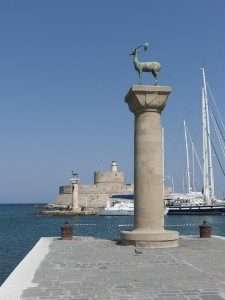
'Cattle' of the fairies - in relation to ''lightness''. In order to understand anything one has to 'strike a balance'. Link to ''hammer'' / ''neutral''? Question. What is ''bread'' associated with? Try Alfred.
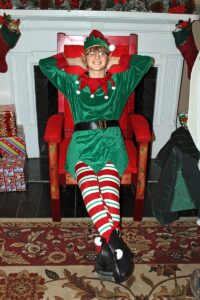 Side note: ''Their first attribute is lightness. They are small in stature, with bodies 'somewhat of the Nature of a condensed Cloud' or 'of congealled Air', in short, of matter so thin {'narrow' link?} and slender that for nourishment all they need is any liquid that can penetrate their pores as it would into a sponge, or bits of grain that they fight over with crows and mice. They live beneath the earth in little mounds....but sometimes they are borne aloft, flying in mid air {'wet/dry'?}...they are heard sometimes to bake bread and strike hammers....presence discontinuous....only seen with those that have second sight...around Aberfoyle by Robert Kirk - the entrance {Gateway?} to the Highlands {therefore some aspect of the 'boundary' between higher/lower?}.'' [From the chapter entitled 'Fairy Geography' from the book 'Collection of Sand' / Italo Calvino].
Side note: ''Their first attribute is lightness. They are small in stature, with bodies 'somewhat of the Nature of a condensed Cloud' or 'of congealled Air', in short, of matter so thin {'narrow' link?} and slender that for nourishment all they need is any liquid that can penetrate their pores as it would into a sponge, or bits of grain that they fight over with crows and mice. They live beneath the earth in little mounds....but sometimes they are borne aloft, flying in mid air {'wet/dry'?}...they are heard sometimes to bake bread and strike hammers....presence discontinuous....only seen with those that have second sight...around Aberfoyle by Robert Kirk - the entrance {Gateway?} to the Highlands {therefore some aspect of the 'boundary' between higher/lower?}.'' [From the chapter entitled 'Fairy Geography' from the book 'Collection of Sand' / Italo Calvino].
''Aberfoyle is a charming village on the banks of the River Forth in the magnificent Queen Elizabeth Forest Park. The village, once important for its slate quarries, quickly developed into the southern gateway of The Trossachs following the publication of Walter Scott's 'The Lady of the Lake'.....'' [Wiki].
Roof tops?
B. Cox to enlarge.
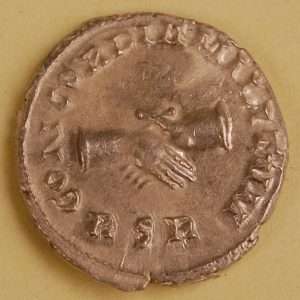
Reverse of a Carausius silver denarius from the Hoard, showing two clasped hands (symbolising the unity of the ruler and the army), alongside the abbreviation 'RSR'. This alludes to a line from Virgil's Eclogues - Redeunt Saturnia Regna or "The Golden Ages have returned".
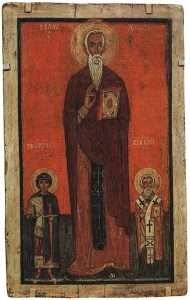
From 1329, Moscow's first stone bell tower stood on this site, affiliated with the Church of St. Ivan of the Ladder-under-the Bell, hence the name "Ivan" in the title. This church was erected by Grand Duke Ivan Kalita, and was one of the first to be built in Moscow out of stone, rather than wood.
SIDE NOTE: "In the 5th century AD, Saint Augustine wrote that: the New Testament is hidden in the Old. And the Old is made clear by the New. THIS idea that the Hebrew bible is a prediction of the New Testament became known as Typology. Old Testament figures like Moses, Jonah and king David were regarded by Christians as being 'types' or symbols of Jesus. They provided literature and art with a rich tradition of PAIRINGS and parallels that influenced attitudes towards reality, time and history. So what is typology, and how did the term emerge?
"Typology, comes from the word 'type', which is a Greek word that arises from the verb - to strike - like striking a coin or marking the shape of a cookie. That is to say, producing a whole lot from ONE original; a type that is endlessly repeatable {and/or recurrent} and in some sense an IDEAL - because the cookie cutter is the ideal from which others will follow." {'In Our Time: Typology' / Radio 4 / 17.4.2025}.
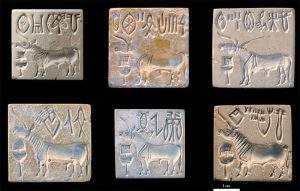
Stamp = imprint?
The term is derived from the Greek noun τύπος (typos), 'a blow, hitting, stamp', and thus the figure or impression made on a coin by such action; that is, an image, figure, or statue of a man; also an original pattern, model, or mould. To this is prefixed the Greek preposition ἀντί anti, meaning 'opposite, corresponding'.[3][4]
Origin of the theory:

The left-hand path is the path of progress for substance or matter, reads Alice Bailey’s Treatise on White Magic. If our
path does not lead us to an evolution of consciousness, to a kindling of spirit within matter, then we are indeed walking the left-hand path which diverges from the Western Way in its intent....You should understand that alchemy is nothing but the art which makes the impure into the pure through fire.....Alchemy has ever treated matter as its prima materia , from which the divine spark can be kindled into awareness of its potential. The alchemical process concentrates upon isolating the prima materia of creation in order that the evolution of matter might ensue. And, as with matter, so with humanity the whole chain of creation releasing its divine sparks, nsing through the planes of existence in a )oyful return to the pnmal unity — such is the vision of alchemy. If the search of the philosophers is for Wisdom, then the quest of the alchemists is for the philosopher’s stone — the keystone of the earth's structure ltself — the lapsit exillas which fell from heaven and from which all matter is formed....AND/OR: I behold how all things in the aether are mixed with pneuma. I see in spirit how all things
are sustained by pneuma. Flesh hangs itself upon soul. Soul is upborne by air.
Air hangs itself upon aether. Fruits rise up from the depth. A child is lifted from the womb.....The spirit is the inner corollative of the flesh, and no life can be
reproduced upon earth without a corresponding ensoulment upon the Inner. {Pages 387/8 'The Western Way'}.

Red thread?
Christian typology begins in the New Testament itself. For example, Paul in Romans 5:14 calls Adam "a type [τύπος] of the one who was to come" — i.e., a type of Christ. He contrasts Adam and Christ both in Romans 5 and in 1 Corinthians 15. The author of the First Epistle of Peter uses the term ἀντίτυπον (antitypon) to refer to baptism.[5] There are also typological concepts in pre-Pauline strata of the New Testament.[6]
The early Christians, in considering the Old Testament, needed to decide what its role and purpose was for them, given that Christian revelation and the New Covenant might be considered to have superseded it, and many specific Old Testament rules and requirements were no longer being followed from books such as Leviticus dealing with Expounding of the Law.[7] One purpose of the Old Testament for Christians was to demonstrate that the Ministry of Jesus and Christ's first coming had been prophesied and foreseen, and the Gospels indeed contain many Old Testament prophecies fulfilled by Christ and quotations from the Old Testament which explicitly and implicitly link Jesus to Old Testament prophecies. Typology greatly extended the number of these links by adding others based on the similarity of Old Testament actions or situations to an aspect of Christ.
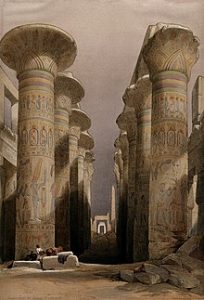
Karnac: The middle ground. The "overoming" of two opposing forces?
Typology is also a theory of history, seeing the whole story of the Jewish and Christian peoples as shaped by God, with events within the story acting as symbols for later events. In this role, God is often compared to a writer, using actual events instead of fiction to shape his narrative.[8] The most famous form of this is the three-fold Hegelian dialectic pattern, although it is also used in other applications besides history.
THEME to enlarge.
Continued: Other keys mentioned: innocence/childlike/purity/'a poor people'/neutral/unjudgemental {'Righteous' link} / melancholy {i.e., slightly negative - if only as a 'beginning' of a learning curve} hence to such statements as ''More seriously they kidnap babies or wet nurses - as they are greedy for milk - who stay a certain time with them underground while above the person has been replaced by a double or a ghostly presence.'' And/or novel by Jules Verne set in Aberfoyle: 'Black Diamonds' and 'Child of the Cavern'.
'H'elen of Troy? Enlarged elsewhere.
And/or: ''A younger contemporary of Shakespeare's, Robert Burton, wrote in The Anatomy of Melancholy: 'that omniscient, only wise fraternity of Rose Cross names their head Elias Artifax, their theophrastian master'....'' [Page 403 'The Secret History of the World' ' J. Black].
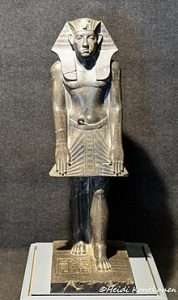
Fire or water? Happy or sad?
Side note: : ''Ambrose looked sharply at the monk, who raised his eyes. They were unusually luminous and, inspite of their obvious humour, they carried an indelible impression of melancholy. It would have been difficult to guess his age: his features and movements were youthful, and yet there was a quality in his face or bearing that made him seem older than the Abbot's fifty odd years.'' [Page 9 'The Serpents Circle' / P. Harpur].
And/or: ''In Daughters of Saturn, Patricia Reis explores various aspects of the father-daughter relationship with a particular focus on the father's effect on the woman's creative life. Beginning with Saturn - the archetypal devouring and melancholic father....''[Back cover to same book ].
Heliopolis?
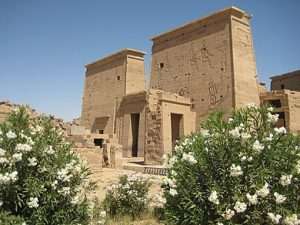
Pal{l}ace or 'H' facade? FACE to Face? {''Walking with god''?} - If so, what does that say for ''in profile''?
Continued: "concerned with the superlative feminine beauty." Recall only Aphrodite associated with the story {principles?} of Troy. The other two {Hera/Athene} = Greek related. Transcendent third link? {i.e.,but from the 'feminine' principle viewpoint,i.e., 'anima' aspect in mind}. Top/down or bottom/up?
Question {right question?}: What position would ''anima'' {in the physical / positive,i.e.,''white shadow'' - sense of the word} be represented in {within?} landscape symbolism? Clue. What position is Copan within 'its' overall landscape?

Emarald Buddha: ''The Sacred Palladium of Thailand.''
And/or: ''Athene had a half-sister, a dark skinned girl called Pallas - accidently speared Pallas to death. From then on called herself Pallas Athene, to acknowledge the dark side of herself. Carved a statue of her out of black wood....known as the Palladium, carved by her hand and washed by her tears {'valley of tears'?}...Placed under a porphyry pillar....When the people of Anatolia kept it in their capitol {'city' link} Troy was the greatest city in the world....'' [Page 136 'The Secret History of the World'].
Palladium is a chemical element with the symbol Pd and atomic number 'fortysix'. It is a rare and lustrous silvery-white metal discovered in 1803 by the English chemist William Hyde Wollaston. He named it after the asteroid Pallas, which was itself named after the epithet of the Greek goddess Athena, acquired by her when she slew Pallas. Palladium, platinum, rhodium, ruthenium, iridium and osmium form a group of elements referred to as the platinum group metals (PGMs). They have similar chemical properties, but palladium has the lowest melting point and is the least dense of them.''
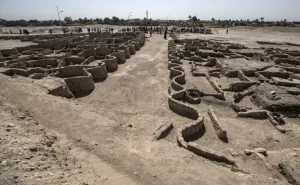
Refresher: ''The word ''firewater'' refers to a type of alcohol.'' {meat/beer/feasting link}.
''The London Palladium (/pəˈleɪdiˌʊm/) is a Grade II* West End theatre located on Argyll Street, London, in the famous area of Soho.....The theatre started out as The Palladium, a premier venue for variety performances. Pantomimes were also featured there. In 1926, the pantomime starred Lennie Dean as Cinderella, footage of which remains to this day. The theatre is especially linked to the Royal Variety Performances,''
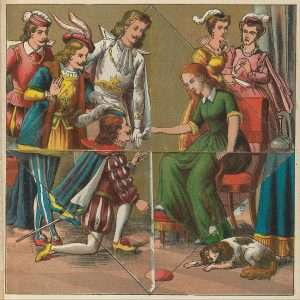
'''Where no foot may tread.'' {if only in the physical SENSE of the word}. ''Middle ground''? Lozenge'?
The oldest known oral version of the Cinderella story is the ancient Greek story of Rhodopis,[4][6] a Greek courtesan living in the colony of Naucratis in Egypt, whose name means "Rosy-Cheeks". The story is first recorded by the Greek geographer Strabo in his Geographica (book 17, 33): "They [the Egyptians] tell the fabulous story that, when she was bathing, an eagle snatched one of her sandals from her maid and carried it to Memphis; and while the king was administering justice in the open air, the eagle, when it arrived above his head, flung the sandal into his lap; and the king, stirred both by the beautiful shape of the sandal and by the strangeness of the occurrence, sent men in all directions into the country in quest of the woman who wore the sandal; and when she was found in the city of Naucratis, she was brought up to Memphis, and became the wife of the king."[7]
''The same story is also later reported by the Roman orator Aelian (c. 175–c. 235) in his Miscellaneous History, which was written entirely in Greek. Aelian's story closely resembles the story told by Strabo, but adds that the name of the pharaoh in question was Psammetichus.''
'Dazzling Aten'' to enlarge.

'Does' / 'Hares' and Glass?
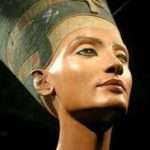
Epithet: 'The beautiful lady has come''. Left eye purposely opaque {'glassy eyed'?].
EXERCISE: Put all the above together {'a gathering'} to get a grip {'hook'?} into the following: '' In order to understand the esoteric overtones of 'Sleeping Beauty' , it is necessary to think in an upside down sort of way {u-turn?}. The story relates that, at the party to celebrate her 'birth', six fairies gave the Princess gifts to help her have a happy and fulfilled life. The seventh fairy, who represents Saturn, or Satan, the spirit of materialism, curses the 'child' with death, which is commuted to a long period of sleep. These seven 'fairies' are of course the seven planetary spheres. What is upside down and the other way round about this story is.....'' [Page 192 ;'The Secret History of the World' / J. Black].
Pleiades?
And/or: ''In an episode known as the temptation of Saint Antony....he was granted a vision of the 'devil' - a tall black man with his head in the clouds. He also 'saw' angels who were able to guide some human spirits up, beyond the devils reach.'' [Page 329 'The Secret History of the World' / J. Black].
Another perspective: ''The devil, an image of material coarseness as opposed to spirituality, is the hieroglyph for the first mineral substance such as it is found in metal bearing deposits where miners go in order to tear it therefrom. It was formerly represented as the figure Saturn, in Notra Dame de Paris, and the faithful, as a token of their scorn and aversion, came to put out their candles by plunging them in its mouth, that it held open. It was for the people, Master Pierre of Coignet, our corner stone and the original block on which the entire Work is built....
The 7 Dwarfs?
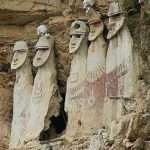
The Cloud People. Enlarged elsewhere.
Continued: ''.....It must be agreed that to be symbolised under such a deformed and monstrous appearance - dragon, serpent, vampire, devil, Tarasque, etc. - this unfortunate subject must have fallen into disgrace with Nature....''Yet it is this primitive subject of the sages....despised by the ignorant ones, which is the only one, the sole dispenser of the celestial water, our first mercury, and the great Alkahest {i.e., vigor/strength from the hearth of energy}. It is the loyal servant and the salt of the earth, what Madame Hillel-Erlanger calls Gilly and which causes his master to triumph over the influence of Vera. Thus it has been called the universal solvent....because it can do everything in the small universe that the Great Work constitutes ....The alkahest is the purest mercurial principle which can be removed either from mercury or from sea salt....'' [ Pages 363/4 'The Dwellings of the Philosophers' / Fulcanelli].
''Gilly'' = lily link. Belonging to the Tracheophytes group of plants ''that have lignified tissues for conducting water and minerals throughout the plant.'' [Wiki].
'Snow White' who looked after the place like a Greek Hestia.
Mineral/Vegetable/Animal as a means....?
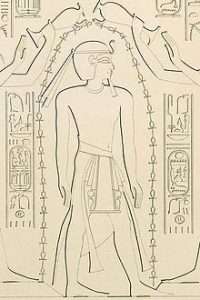
An ''opening''?
Something extra: ''Feeling tone and rough edge must be regained - indicating depth and range of feeling. Classical Greek Olympian outlook achieved this with the 'arrival' from the north of more barbarous tribes whose cults were devoted to Dionysos - to a horned god {anima/animus?} - although the first move of Dionysos, in myth, is to oust a woman from Olympus, she is the most conservative member, the hearth goddess Hestia. Dionysos is the womanly god, given to the opening of a range of feelings....'' [Page 157/8 + index 'Fruits of the Moon Tree' / A. Bleakley].
Working example: ''It is at just this period that the grammatically male term ''great house'' {which has come to us in the term ''pharaoh''}, is first attested as a periphrastic way to refer to the king. Oddly, the use of a feminine royal titulary seems to have become so standard that even Hatshepsut's father, husband, and stepson were sometimes associated with feminine epithets and feminine pronouns. These might be explained as accidental results of confusion with Hatshepsut's own inscriptions, but their frequency suggests that they were intentional.'' [Page 10 'Hatshepsut: From Queen to Pharaoh' / The Metropolitan Museum of Art].

As one example: Newgrange in Ireland. That 'triple' aspect again. Coincidence?
''This is the aim of initiation to make more and more experience conscious, to roll back the boundaries of consciousness. In our individual lives - and collectively - we go round and round in the circles traced out for us by the planets and stars. But if we can become conscious of these circles....in our lives in a most intimate way, then we are in a sense, no longer trapped by them. We may rise above them {''clouds''?}, we are now moving not in a circle but in an upward spiral.'' [Page 193/4 same book].
 Refresher: "What is a symbol anyway? In effect, it is the good old ''outward sign of an inward grace,'' or a practical link between objective and subjective existence. It is a body containing a soul, matter holding a meaning, a focus of force, a condenser of consciousness, or a ''thought tank." Anything and everything can be a symbol. Whatsoever connects consciousness, and life together from one level to another, or even to different points on the same level is a symbol. Figures, letters, words and ideographs are very good examples of symbols, since these join thinking with living."
Refresher: "What is a symbol anyway? In effect, it is the good old ''outward sign of an inward grace,'' or a practical link between objective and subjective existence. It is a body containing a soul, matter holding a meaning, a focus of force, a condenser of consciousness, or a ''thought tank." Anything and everything can be a symbol. Whatsoever connects consciousness, and life together from one level to another, or even to different points on the same level is a symbol. Figures, letters, words and ideographs are very good examples of symbols, since these join thinking with living."
Fishers of Men?
As one example: "This means, if anything, that there had been a recent revival of letters in Wales. 'Beech' is a common synonym for 'literature'. The English word 'book', for example, comes from the Gothic word meaning letters and, like the German 'buchstabe' is etymologically connected with the word 'beech'- the reason being that writing tablets were made of beech." [ Page 38 'The White Goddess' / R. Graves' - in relation to the Welsh Myth - 'The Battle of the Trees'].
Forests ? As a means....?
'The Place Beyond the Pine' / 2012.
 And/or: "Edward Davies was justified in regarding those British priests as a sort of Orphics: dress, dogma, ritual and diet correspond closely. And since the Battle of the Trees proves to have been a battle of 'letters' rather than trees, his suggestion that the fabulous dance of trees to Orpheus's lyre was, rather, a dance of letters, makes good historical and poetic sense." [Page 141 same book].
And/or: "Edward Davies was justified in regarding those British priests as a sort of Orphics: dress, dogma, ritual and diet correspond closely. And since the Battle of the Trees proves to have been a battle of 'letters' rather than trees, his suggestion that the fabulous dance of trees to Orpheus's lyre was, rather, a dance of letters, makes good historical and poetic sense." [Page 141 same book].
Try 2:8 for a further connection.
Side note: The curved sides of the lyre made from ''the ferocious Libyan white antelope-ox, with which they celebrated Hercules Melkarth.'' [Page 138].
''Hercules'' more spirit than soul therefore 'fire' link. Question. What represents the 'female' aspect that represents a balance {'Orpheus' link}.
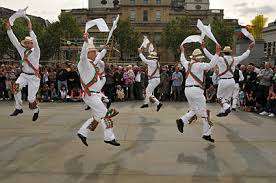
Stotting?
Hence the link to such quotes as: ''The reference to Hercules as Chief of Baptism identifies him with John the Baptist, in whose honour Hercules midsummer fires were lighted in Gwion's day''' And/or: ''Gwion knew Hercules to be another name for Ogham Sun -face {''face on''?}, the inventor of the Ogham alphabet....where the alphabet figures as the four pillars of five letters each, that support the edifice of literature {'nine' link?}…..But though we have learned the secret story of the 'Spirit of the Year', the name of the transcendent god still remains hidden. The obvious place to look is among the vowels, which are separated from the Hercules story told by the consonants; but Dog, Lapwing, and Roebuck {enlarged elsewhere} must have learned wisdom after the 'Battle of the Trees' and hid their secret more deeply than before." [Pages 133-139. Same book].
'Female' aspect?

Swift or sharp?
Side note: ''Gazelle is derived from Arabic: غزال ġazāl, Maghrebi pronunciation ġazēl. To Europe it first came to Old Spanish and Old French, and then around 1600 the word entered the English language. The Arab people traditionally hunted the gazelle. Appreciated for its grace, it is a symbol most commonly associated in Arabic literature with female beauty. In many countries in Northwestern Sub-Saharan Africa, the gazelle is commonly referred to as "dangelo", meaning "swift deer". [Wiki].
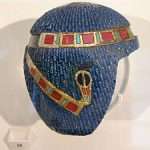
Where have you seen it before?
Continued: '''Hercules' is a name of many meanings....His name in Greek, means Glory of Hera, and Hera was an early Greek name for the 'Death-goddess' who had the charge of the souls of sacred kings and made oracular heroes of them....Midsummer day was always a water as well as a fire festival." [Page 135].
Question. ''curved sides'' = female aspect? As a means....?
A MINDSET?
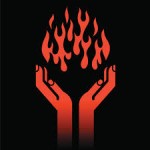 And/or: '' To return to the Battle of the Trees....the privet figures unimportantly in Irish poetic tree lore, it is never regarded as 'blessed'. Probably its second occurrence in line 100 is a disguise of the wild apple {as is the number 100?}, which is the tree most likely to 'smile' from beside the rock; emblem of security: for Olwen, the laughing Aphrodite of Welsh legend, is always connected with the wild apple {not yet ''domesticated''?}. Page 42. Same book.
And/or: '' To return to the Battle of the Trees....the privet figures unimportantly in Irish poetic tree lore, it is never regarded as 'blessed'. Probably its second occurrence in line 100 is a disguise of the wild apple {as is the number 100?}, which is the tree most likely to 'smile' from beside the rock; emblem of security: for Olwen, the laughing Aphrodite of Welsh legend, is always connected with the wild apple {not yet ''domesticated''?}. Page 42. Same book.
'Apple Island' and 'Frog Island' in connection with the 'legend' of Oak Island.
Question. Any apples or frogs on those islands?
Symbolic intent only?
Symbolic? in what sense of the word?

Question. Plenty of what? ''The fruit of ones labours''? In what SENSE of the word? Recall the ''help'' section.
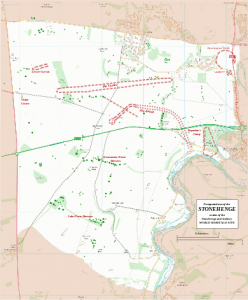
Cursus = ''circuitous'' ? Antlers placed purposely within. Question. Male or female antlers? Any coming together of planets where Mercury is in the ascendant? Get it?
REFRESHER: "The deer's graceful caution, elegant leaps, sudden appearances and swift disappearances link the animal to the alchemical Mercurius, the transformative intermediary soul substance, as well as to pilgrimage or initiation paths that are circuitous, indirect, constantly shifting direction,{gates, boundaries, transitions?} or, like the deer, disappearing altogether. The occasional, mysterious hoof-sounds we hear in the brush along the meandering way, belong to a hidden creature that teaches us to tread our path with calm reverence for the unseen and unknown...The Celtic lord of forest beasts {i.e.,with 'human head'} - Cernunnos, adorned with leafy antlers, collects the souls of the dying and escorts them to the underworld, accompanied by the hunting goddess Flidass who, like her Greek counterpart Artemis, rides in a deer driven chariot.'' ['The Book of Symbols' / Taschen. Emphasis, this readers]. Try ''hoof''. Together with...
''The word 'venison' derives from the Latin venari, meaning "to hunt or pursue".[2] This term entered the English language through Norman French venaison in the 11th century, following the Norman conquest of England and the establishment of Royal Forests.''
Side note: ''Santa Maria sopra Minerva in Rome: memories of the floods of the Tiber over the centuries. Flood of 30 November 1422: "In the year of the Lord 1422, on the day of St. Andrew the water of the Tiber grew to the top of this tombstone, at the time of Lord Martin V Pontiff year VI"; Flood of 9 December 1495: "In the year of the Lord 1495, on 9 December, while the immeasurably inflated Tiber came out of its bed, the murky current lifted its swollen waters to this sign"; Flood of October 8, 1530: "So far the Tiber grew and Rome would have already been completely submerged if the Virgin had not established her swift work here"; Flood of September 15, 1557: "On September 15, 1557 the Tiber arrived here while Paul IV was the supreme rector of the city in the third year of his pontificate"; Flood of December 24, 1598: "The pontiff on his return to Rome after the recovery of Ferrara, curses the vortices of the Tiber, never before so superb, gone crazy to this sign, in the year of the Lord 1598, on the ninth day of the calends of January"; Flood of December 28, 1870: "December Flood of 1870...."

'Male' or 'female' cone? Or does it matter? Triangular in shape? 'pyr' to enlarge.
Continued: "The tree of Osiris was a conifer, a pine cone often appears on the monuments......as an offering to the awakening spring. Fir cones have been assumed to possess a merely phallic significance, but the real reason for the sanctity of the conifers was probably preserved by the Gnostics. According to King, the fir - tree was "admitted into this system because its spiry form imitates a flame, for which same reason its cone was taken for the symbol of the element fire." The name 'fir' may evidently be equated with fire, an idea which is corroborated by the fact that the Welsh for fir - tree is 'pyr', i.e.,the Greek for fire. The Greek for 'fir' is peuke, i.e.,the Great Father or pere". [Same chapter, same book].
''The Pineapple was called King-Pine by Charles the 2nd.'' ['The Chase'].
And/or: ''The pineapple came to Charleston from South America by way of the Caribbean because of Charleston's prominence as a port city. Fruits + other sweets weren't very common in the colonial days, so the pineapple was a hit. It was an exotic, never-before-seen fruit and quickly became a symbol of hospitality.''
''The top of the silver gilt trophy that is awarded to the winner of the gentlemans singles tennis tournament at Wimbledon is adorned with a pineapple.'' ['The Weakest Link' / BBC2].
N.B. ''Automaton in the shape of a pineapple with a red eyed monkey within it - seen to pop its head in and out. {'Antiques Road Show' / BBC / 2023}.
'Trickster' to enlarge.
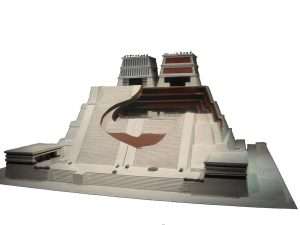
'Duality'?
Side step: ''Hundreds of wooden artifacts unearthed at the foot of Templo Mayor in Tenochtitian, the capital city of the Aztecs, or Mexica....Associated with the god of war {Huitzilopochtli} and the rain god Tlaloc....Most of the items carved from pine harvested in the forests of CENTRAL Mexico, while others were fashioned from mesquite, fir, alder, or butterfly bush: 'Although sculptors choice of specific wood types may have depended in part on availability, their selections seem to have a religious symbolic significance as well. Huitzilopochtli was associated with mesquite, and Tlaloc with pine.'....'' [Page 26 'Archaeology' Jan-Feb 2023].
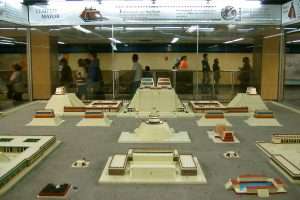
Pinecone shape?
''Mesquite is a common name for several plants in the genus Prosopis, which contains over 40 species of small leguminous trees. They are native to dry areas in the Americas. They have extremely long roots to seek water from very far under ground. As a legume, mesquites are one of the few sources of fixed nitrogen in the desert habitat. The trees bloom from spring to summer. They often produce fruits known as "pods"....Once the pod is dry, the whole pod is edible and can be ground into flour and made into bread.....Mesquite is native to the US and can be used as a type of lumber. It was a popular type of wood used by early Spaniards to build ships, but is now used most commonly for high-end rustic furniture and cabinets. Scraps and small pieces are used commonly as wood for cooking with smoke in Southern states.
'Roast{ed}' to enlarge.
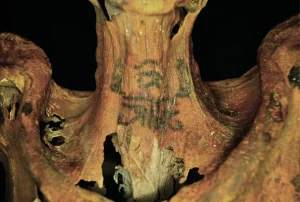
A heavily tattooed woman from Deir el-Medina. The Eyes of Horus and nfr tattoos on her neck mean ‘to work well’.
Red-orange sap can be found on the branches of mesquite trees during the summer. This sap was used by those who lived in the desert for several medicinal treatments. The sap was used as a salve and spread on burns and cuts to speed up the healing process. Gargling a mixture of water and sap was used to soothe sore throats, and the same mixture was said to be able to cure upset stomachs.''
'Taurus'?
And/or: ''And based on the fragments he was allowed to examine by microscope, de Fleury concluded the true cross was made of pine wood. Later, four cross particles were also microscopically examined – part of ten pieces of the true cross, accompanied by documentary proofs from Byzantine emperors.''
''The origins of those terms stem from the early 1600, when the European explorers of the Americas brought the fruit to Europe, using the word pineapple due to its resemblance to a pine cone from conifer trees..... The vitamins and minerals in pineapple could help shorten viral and bacterial infections and strengthen your bones. There's also a little evidence that pineapple may help prevent cancer and even help fertility by improving the quality of sperm.''

Eye of the imagination by way of the pineal gland?
Side note: ''The Dagda and Elatos {i.e., ''a science of knowledge'' related to the Irish/Greek word Elate i.e., fir tree and/or fir man} - may thus both be equated with Osiris, or Adonis, or Dionysus, who was born from a fir and mothered by the horned Moon-goddess Isis, or Lo, or Hathor. New Grange is a flat topped round barrow....built of heaped stones...not of earth, and was originally covered with white quartz pebbles.....'' [Page 97/8 'White Goddess' / R. Graves].
Recall the Greek {myth?} of Dionysus sewn into the 'thigh of Zeus' which had caused him to limp.
Bull foot? [Page 317 same book].

''Opening''? Best foot forward?
''Opening'' from a different perspective - a different 'angle': ''Psychologically, the seven dwarves represent the instinctual animus of the woman, of Snow White - her animal strength.....Dwarf forms found mainly in women {Jung}....The dwarves are also her 'laming' nature....wise little people working from within - is her ''opening'', her opportunity. Hephaistos 'back to front feet' are disabling, but also a gift - they are an inturning, and introversion, a looks within to the inner alchemy....an eye to the inner children of the imagination.''
A working example: ''North West coast of Peru. Thirtysix self made mounds {2 x 'eighteen'?} belonging to the Sican culture. 'Five' bodies found - two women and two 'young'{sters}. In the MIDDLE an upside down male figure. The head decapitated and then reversed 180 degrees. A golden red mask found where the face should have been {i.e., now representing the BACK OF THE HEAD}, a thousand years old. Very 'thin' layer of gold, made from a single sheet: ''but strong enough to retain its features.'' Eyes created from amber and emerald beads. The most distinctive feature = the red paint from cinnabar {red, mercurial salt/quartz compound with sulphur}. Also found within the red paint DUCK egg protein and human 'blood' . Sixteen pointed 'star' can be seen as ear pendants and metal {'petals' ?} to highlight the nose.'' ['Strange Things' / S2 EP4].
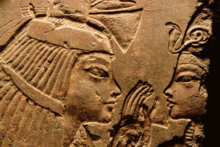
Tut's nurse. Any duck 'food' found within? And/or: How would that 'mercurial' element be REPRESENTED?
Archeologists first discovered the mask, which was colored using a red pigment, in the 1990s during the excavation of the tomb of what appears to be an elite leader, Yasemin Saplakoglu reports for Live Science.
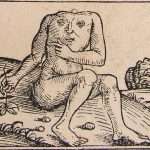
Heart on the sleave? Blemmyes to enlarge.
The mask was placed on a detached skull of a 40- to 50-year-old man, with the rest of the skeleton found nearby, upside-down and also painted red. The grave also contained four other skeletons, including two positioned in a tableau apparently representing a midwife and a woman giving birth, as well as more than a ton of grave goods including many gold alloy objects.''
''Fiery'' to enlarge.
And/or: ''Terracotta, terra cotta, or terra-cotta[2] (Italian: [ˌtɛrraˈkɔtta]; lit. 'baked earth';[3] from Latin terra cocta 'cooked earth'),[4] in its material sense as an earthenware substrate, is a clay-based unglazed or glazed ceramic[5] where the fired body is porous.''

Flowering = ''opening''? Where no foot may tread? Sandals?
And/or: ''In the intense heat of the raw, bleeding crucible of the alchemical womb, a volcanic ENERGY is available for direct perception, for 'seeing' through nature, to her archetypal matrix...The conservative Mothers {one of which} is Hestia - of the OUTER fire - the hearth.....are shaken up by the arrival of Dionysos, the thirteenth Olympian, whose first act is to oust the Old Mother Hestia - the most unchanging element....Dionysos is born from 'a man' - the thigh of Zeus - his ANIMA ''opening''....'' [Pages 210/211 'Fruits of the Moon Tree' / A. Bleakley].
'Toehold' ?
Working example: Abdera / Teos.
Side note: ''''Bushy Oak, leafy Oak. You TOWER above all trees....O Hazel, little branching one. Coffer for sweet nuts...O apple tree, true to your kind. You are much SHAKEN by men...'' [Page 444 'The White Goddess' / R. Graves].
'Lightening'?
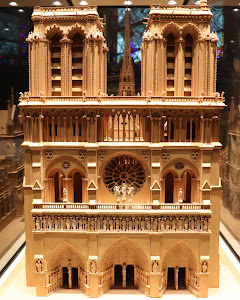
Notra Dame. A forest of oaks below a lead roof. The base of the wooden spire on 4, six sided stone platforms, covered by a piece of lead. Notre-Dame’s relics include the Crown of Thorns, some wood from the cross Jesus died on, as well as a nail used in the crucifixion. King Louis IX, later known as Saint Louis, brought these objects to Paris in the 13th century. Additionally, a tunic worn by Saint Louis also became an important part of the relic collection....And/or: Others, like the elegant stork you can look for, are there simply to look amazing. And they just might ward off evil spirits, according to French legend. The collection of grotesques you’ll see if you climb the tower is called the “Gallery of Gargoyles.” 'Nest' to enlarge. The current organ has 115 stops (156 ranks) on five manuals and pedal, and more than 8,000 pipes. Amazingly, the SIXTEEN copper statues of the four Gospel writers and the 12 apostles that surrounded the spire survived!

Dresden {Saxony} Germany. Rooster on top. Rooster also on top of Notra Dame roof. 'Forest of oaks'.
Side note: "Meanwhile the Celts return triumphant. At their head was the same woman whose inspired voice had prepared their triumph. In passing through the forest she is obliged by fatigue to rest at the foot of an oak. After a few moments the tree appears in the midst of a great calm to agitate its mysterious foliage {'grove'?}. Voluspa herself seized with an inexpressible excitement stands up crying that she feels the spirit of Herman. They assemble about her, they listen. She speaks with a force that impresses even the most savage men. In spite of themselves they feel their knees give way; they bow down with respect. A holy terror penetrates them. ‘They are religious for the first time. The prophetess continues. The future unrolls itself before her eyes. She sees the Celts, vanquishers of their enemies, usurping all the kingdoms of the earth, dividing the riches, and trampling under foot these Black People of whom they had long been the slaves. ‘Go,’ she said at last, ‘‘valiant heroes, march to your glorious destinies, but forget not Herman, chief of men, and above all respect Teut-tad, the Sublime Father!’’ Such was the first oracle pronounced among the Boreans and such was the first religious impression which they received. This oracle was pronounced by a woman beneath an oak in a forest and this tree became sacred to them and the forest served as their temple. From this moment women took a divine character in their eyes. This woman was the model of all the pythonesses and all the prophetesses which became known in the course of time in Europe as well as in Asia. At first they prophesied beneath the oaks, and it was this which rendered so famous the oaks of the forest of Dodona {N/W Greece} .
When the Celts had become masters of the world, and had acquired from the conquered nations the taste for arts and for magnificence, they raised for their pythonesses superb temples, where the symbolic tripod placed over an aperture, real or artificial, was substituted for the oak and caused it to be forgotten." {'Hermeneutic Interpretation of the Origins of the Social State of Man'}.

'Silk' ?
And/or: "Mystic revelation is not a forbidden, exotic thing it is merely the skilful understanding and use of spiritual symbolism. In volume one we spoke about the ways in which we can read the landscape, the ancestral stones of our Native Tradition, the same holds true for the Hermetic Tradition. The Gothic cathedrals were known as ‘the Bible of the people,’ whose architectural mysteries embodied the esoteric story of Christ. To visit one of these today is to step within a forest of stone pillars in whose nemeton are the depictions of saints, angels, and prophets, the yearly round of the seasons, the secret tokens of Christ and Lady Mary.

Stag and deer.
Here, too, at Chartres, one can enter the maze which symbolically represents not only the pilgrimage to Jerusalem, but a return to the heart’s home, the Inner Kingdom which is reached by means of life itself. The maze is also our reminder of the interconnecting spirals of the Western Way which is the subject of our present pilgrimage. Within the towering pillars of this Cathedral-forest might we not glimpse the White Hart who has ever been the emblem of spiritual search, in whom the Grail-quest has its quarry’. It is as though Pwyll from the Mabmogion (204) had strayed into the Middle Ages in pursuit of the Otherworldly White Hart, where Arawn’s wild hunt rides in a new guise.

Headband_with_Heads_of_Gazelles_and_a_Stag_Between_Stars_or_Flowers
Side note: A bachelor party (in the United States), also known as a stag weekend, stag do or stag party (in the United Kingdom, Commonwealth countries, and Ireland), or a buck's night (in Australia and Canada),[1][2] is a party held for or arranged by a man who is shortly to enter marriage.
The party is usually planned by the groom's friends or family.
 The first references to Western stag nights in the Oxford English Dictionary date to the 19th century.[3] Traditionally, stag nights involved a black tie banquet hosted by the father of the groom that included a toast in honour of the groom and bride.[4] Since the 1980s, some bachelor parties in the United States have involved vacationing to a foreign destination,[4] or have featured female company such as strippers or topless waitresses.
The first references to Western stag nights in the Oxford English Dictionary date to the 19th century.[3] Traditionally, stag nights involved a black tie banquet hosted by the father of the groom that included a toast in honour of the groom and bride.[4] Since the 1980s, some bachelor parties in the United States have involved vacationing to a foreign destination,[4] or have featured female company such as strippers or topless waitresses.

Lozenge floor?
Continued: The quest begun under the aegis of the Native Tradition continues without break into the Hermetic Tradition. From the Gundestrup Cauldron with its depiction of Cernunnos as Guardian of the Sacrificial Hunt to St John of the Cross’s ‘for the wounded hart appears on the hill’ (155) seems a long step, but we should not find any difficulty in reconciling these interrelated images.  From within the temenos of a medieval cathedral it is easier to make this important connection. These stones were hewn and erected when spiritual chivalry was abroad — the quest which did not exclude the laity, neither lady nor knight, lord nor peasant. The virile epics of spiritual chivalry, embodied in the Grail legends, combined the Christian mythos with the vigour of native storytelling. Love, both earthly and spiritual, was present in all its complexity from the urge to protect pilgrims by those monks on horseback, the templars, to the Otherworldly Courts of Love where Celtic paradise and medieval simplicity combined, everyone wanted to be part of the story." [Pages 275/6 'The Western Way'].
From within the temenos of a medieval cathedral it is easier to make this important connection. These stones were hewn and erected when spiritual chivalry was abroad — the quest which did not exclude the laity, neither lady nor knight, lord nor peasant. The virile epics of spiritual chivalry, embodied in the Grail legends, combined the Christian mythos with the vigour of native storytelling. Love, both earthly and spiritual, was present in all its complexity from the urge to protect pilgrims by those monks on horseback, the templars, to the Otherworldly Courts of Love where Celtic paradise and medieval simplicity combined, everyone wanted to be part of the story." [Pages 275/6 'The Western Way'].
Canopy to enlarge.

Amenhotep III and Queen Tiye Enthroned Beneath a Kiosk, Tomb of Anen. 'Canopy'?
Continued: ''The Catkins on the hazel tree are known as Lamb's Tails.'' ['The Chase'].
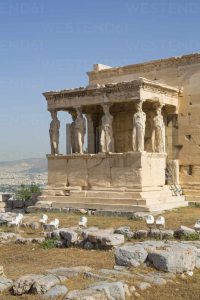
Temple of Athena Nike, Greece. "The earliest IONIC temple {i.e., 'scroll' feature} - on the Acropolis."
''Catkins play an essential role in tree reproduction and can be found on hazel, silver birch and white willow trees among other species. For a few weeks each year, catkins release pollen into blustery March breezes, then the leaf canopy unfolds.....Catkins or lambs' tails, the male flowers of the common hedgerow tree Hazel (Corylus avellana), show that spring is not far away. ...''
And/or: ''The sistrum also indicates that the things which exist should be shaken and should never stop moving....For they say that with the sistrum they repel and ward off Typhon, meaning that when decay confines and restricts nature, the power of creation sets her free, and restores her by means of movement.''[Page 57 'Hathor Rising'].
Static/Dynamic?

'Silk' or ivory?
The Acropolis of Athens (Ancient Greek: ἡ Ἀκρόπολις τῶν Ἀθηνῶν, romanized: hē Akropolis tōn Athēnōn; Modern Greek: Ακρόπολη Αθηνών, romanized: Akrópoli Athinón) is an ancient citadel located on a rocky outcrop above the city of Athens, Greece, and contains the remains of several ancient buildings of great architectural and historical significance, the most famous being the Parthenon.
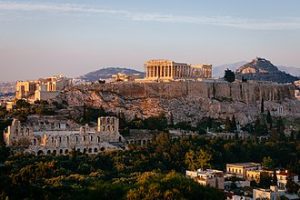
"The city on TOP of the rock." A new one? 'Qena' to enlarge.
The word Acropolis is from Greek ἄκρον (akron) 'highest point, extremity' and πόλις (polis) 'city'.[1] The term acropolis is generic and there are many other acropoleis in Greece. During ancient times the Acropolis of Athens was also more properly known as Cecropia, after the legendary serpent-man Cecrops, the supposed first Athenian king.
While there is evidence that the hill was inhabited as early as the 4th millennium BC, it was Pericles (c. 495–429 BC) in the fifth century BC who coordinated the construction of the buildings whose present remains are the site's most important ones, including the Parthenon, the Propylaea, the Erechtheion and the Temple of Athena Nike.[2][3] The Parthenon and the other buildings were seriously damaged during the 1687 siege by the Venetians during the Morean War when gunpowder being stored by the then Turkish rulers in the Parthenon was hit by a Venetian bombardment and exploded.[4]
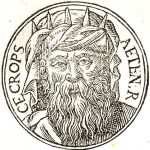
Serpent teeth for a crown? Merman?

Stag party?
Cecrops (/ˈsiːkrɒps/; Ancient Greek: Κέκροψ, romanized: Kekrops; gen Κέκροπος, Kékropos) was a legendary king of Attica which derived from him its name Cecropia, according to the Parian Chronicle having previously borne the name of Acte or Actice (from Actaeus). He was the founder and the first king of Athens itself though preceded in the region by the earth-born king Actaeus of Attica.[1] Cecrops was a culture hero, teaching the Athenians marriage, reading and writing, and ceremonial burial.[2][3]
According to Strabo, the name of Cecrops is not of Greek origin.[4] It was said that he was born from the earth itself (an autochthon) and was accordingly called a γηγενής (gēgenḗs "native"), and described as having his top half shaped like a man and the bottom half in serpent or fish-tail form. Hence he was called διφυής (diphuḗs, "of two natures").[5][AI-generated source?] Diodorus rationalized that his double form was because of his double citizenship, Greek and barbarian.[6] Some ancients referred the epithet διφυής to marriage, of which tradition made him the founder...
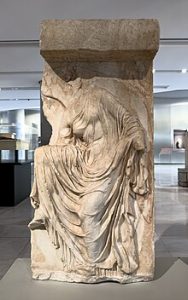
Nike Adjusting / fixing her sandal. 'Wingless' = ON? 'Winged' = OFF?
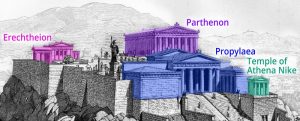
S/W corner. "Visitors to the Acropolis entered through the Propylaia, the main gate, which was flanked by a monumental pedestal to one’s left and the Temple of Athena Nike to one’s right. Athena was patron deity of Athens and Nike was the goddess of victory often associated so closely with her that the two became synchronized as Athena Nike ("Athena of Victory"). The small Ionic temple honored Athena in her role as protector and defender of Athens and provided 5th-century BCE visitors with a kind of preview of the other temples dedicated to the goddess they would see after passing through the gate."
The Temple of Athena Nike (Greek: Ναός Αθηνάς Νίκης, Naós Athinás Níkis) is a temple on the Acropolis of Athens, dedicated to the goddesses Athena and Nike. Built around 420 BC, the temple is the earliest fully Ionic temple on the Acropolis. It has a prominent position on a steep bastion at the south west corner of the Acropolis to the right of the entrance, the Propylaea. In contrast to the Acropolis proper, a walled sanctuary entered through the Propylaea, the Victory Sanctuary was open, entered from the Propylaea's southwest wing and from a narrow stair on the north. The sheer walls of its bastion were protected on the north, west, and south by the Nike Parapet, named for its frieze of Nikai celebrating victory and sacrificing to their patroness, Athena and Nike.
Side note: "One archaeologist interprets these paintings as a representation of "the life of Greek women in its mysterious tenderness"; and another, of "the life of women in the upper-class society of Magna Graecia." It would be more correct to speak of a feminine society molded by the mysteries of Dionysos, a society whose ideal is represented by the divine pair in the center, dominating the room [hoc]. They too are in a state of preparation. The truly central figure (though the painting here is badly preserved) is the enthroned woman and not the ivy-wreathed boy reclining, rather than sitting, on a narrow chair placed beside the throne. He is her Dionysos, characterized as the heros. He is wearing only one sandal. Thus, he is a monosandalos in the manner of daring heroes and warriors, who established communication with the underworld by going into battle with one bare foot. The right sandal of the long-haired young Dionysos lies below the step of his mistress' throne. It is not entirely certain what mythological name she should be given. Ariadne would require a different arrangement, for in relation to Ariadne, Dionysos should occupy the higher level, to which she would first be raised by her divine husband." {'Dionysos: Archetypal Image of Indestructible Life' / C. Kerenyi}.
First step = 'best foot forward'?
Continued: Nike was the goddess of victory in Greek mythology, and Athena was worshipped in this form, representative of being victorious in war. The citizens worshipped the goddesses in hopes of a successful outcome in the long Peloponnesian War fought against the Spartans and allies.[1]
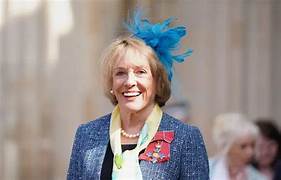
Victorious: Silent hero's.

At heart: A Busby babe.
The cult of Athena Nike was operable in the early sixth century BC. On the remains of a Mycenaean bastion, a cult image of Athena seated holding a pomegranate in her right hand and holding a helmet in her left was placed on top of a square limestone base.
And/or: On the parapet, there would have stood a famous marble statue of a wingless Nike. The positioning of this statue has Nike leaning towards her right foot with her right arm stretching towards her sandal and her clothes slipping off her shoulder. For a while, there has been much debate over what the imagery of this statue is supposed to represent. There are many other uses of Greek sandal-related art found on cups, vases, and even on the friezes of the Parthenon.....

Handle on the moment.
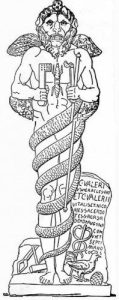 However, these versions all depict the subjects bending down with both arms stretched out to adjust or tie their sandals. The difference in imagery between one hand and two is what has caused discrepancy behind the meaning of the statue of a wingless Nike. It is most likely that Nike is instead removing or loosening her sandal as opposed to adjusting or putting it on. This use of imagery is thought to be used to demonstrate the action of removing footwear to those entering the temple to pay tribute to Athena, as this was a traditional action of worshiping in this space.[9] The statue was discovered in 1835 near the temple. It is thought to have stood on the south side of the temple. It is currently held by the Acropolis Museum (inventory number Ακρ. 973).[10]
However, these versions all depict the subjects bending down with both arms stretched out to adjust or tie their sandals. The difference in imagery between one hand and two is what has caused discrepancy behind the meaning of the statue of a wingless Nike. It is most likely that Nike is instead removing or loosening her sandal as opposed to adjusting or putting it on. This use of imagery is thought to be used to demonstrate the action of removing footwear to those entering the temple to pay tribute to Athena, as this was a traditional action of worshiping in this space.[9] The statue was discovered in 1835 near the temple. It is thought to have stood on the south side of the temple. It is currently held by the Acropolis Museum (inventory number Ακρ. 973).[10]
The famous parapet of Nike removing her sandal is an example of wet drapery.[11] Wet drapery involves showing the form of the body but also concealing the body with the drapery of the clothing. Some friezes are from the Persian and Peloponnesian wars. The friezes contained a cavalry scene from the battle of Marathon and a Greek victory over the Persians at the battle of Plataea. The battles represent Greek and Athenian dominance through military power and historical events.[12] A statue of Nike stood in the cella, or otherwise referred to as a naos. Nike was originally the "winged victory" goddess (see the winged Nike of Samothrace). The Athena Nike statue's absence of wings led Athenians in later centuries to call it Apteros Nike or wingless victory, and the story arose that the statue was deprived of wings so that it could never leave the city.
An ancient statue depicting the Roman goddess of victory has been unearthed at Hadrian’s Wall by amateur archaeologists.
The symbolic find of the winged goddess was discovered in a reused pile of rubble above infantry barracks at Vindolanda, a fort just south of the Sycamore Gap.
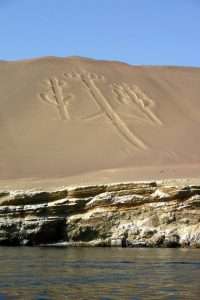 Refresher: ''The Scots Pine is the native pine of Britain....because of its many seeds - is a masculine fertility cone. It is carried by Dionysos and Bacchus, whose wand is 'tipped' with a fir cone and wound with ivy.
Refresher: ''The Scots Pine is the native pine of Britain....because of its many seeds - is a masculine fertility cone. It is carried by Dionysos and Bacchus, whose wand is 'tipped' with a fir cone and wound with ivy.
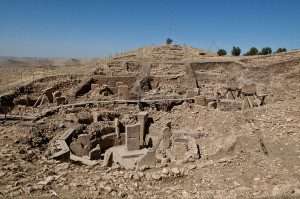
Sycamore or Pine?
We regard ivy as an animus representation, so this is Dionysos responding to the animus energy of women with whom he is seen to associate and from whom he learns - IN MYTH....It is a birth tree and sacred to Artemis and Druantia, the Gallic fir goddess - Mother of the tree calander, and keeper of the Sacred Grove and Fountain of Renewal...The Pine is the traditional Xmas tree- the tree of the first day of the waxing half of the year, after midwinter. On the tree should hang seven candles like the Jewish Menorah. The tree is then the illuminated {''manifested''?} Tree of Life, the seven 'lights' being the seven stars in Ursa Major, near the North Pole - the TIP of the tree that is the world axis {'nail'?}. This tree is also the alchemists tree of the seven metals - that make the 'perfected' human when correctly balanced and fused {'crystallised'?}'' [ Page 109/110/131/135 'Fruits of the Moon Tree' / A. Bleakley].
''Lead'' to enlarge.
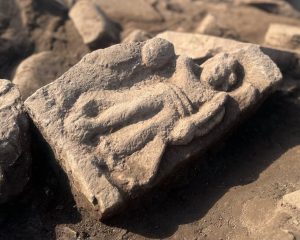
Girdle to enlarge. 'belt'?
Side note: 'Three' very large PINE wooden upright 'poles' - placed on Salibury Plain 5000 years prior the construction of Stonehenge. ['Mystic Britain: Secrets of Stonehenge'].
''Gallic moons of Saturn: The Gallic group are four prograde outer moons that are similar enough in their distance from the planet (207–302 radii of Saturn), their orbital inclination (35–40°) and their color that they can be considered a group. They are Albiorix, Bebhionn, Erriapus, and Tarvos.....''
''The modern names for Saturnian moons were suggested by John Herschel in 1847.[14] He proposed to name them after mythological figures associated with the Roman titan of time, Saturn (equated to the Greek Cronus).[14] In particular, the then known seven satellites were named after Titans, Titanesses and Giants—brothers and sisters of Cronus.''
And/or: ''The adjective Gallic refers to the European country of France.'' ['The Chase'].
''Gallic is an adjective that means relating to the French. Gallic is derived from the word Gauls, who were a Celtic tribe that inhabited France, Belgium, Switzerland, Germany, and Italy. Today, Gallic almost exclusive refers to something connected with France.''
''Aside from "Scottish Gaelic", the language may also be referred to simply as "Gaelic", pronounced /ˈɡælɪk/ in English. However, "Gaelic" /ˈɡeɪlɪk/ also refers to the Irish language (Gaeilge) and the Manx language (Gaelg).''

Ecliptic or Precession?
Continued: ''As a heavenly body takes a path that sees it curling {'hair?} back on itself like a shoelace, so that same shape is traced in the curling {'spiral'?} motion of a leaf as it grows, or a flower. For example they saw Saturn, which traces a sharp pattern in the sky, forming the pine needles of conifers. Is it a coincidence that modern science shows that pine trees contain unusually large traces of lead, the metal believed by the ancients to be 'inwardly animated' by the planet Saturn. In the ancient view the shape of the human body was similarly affected by the pattern made in the sky by the stars and planets....." [Page 55 'The Secret History of the World' / J. Black].
2:9 / 2:2 to enlarge.
REFRESHER: "A seed sized portion of the inner stone of spiritual effort will transform enormous amounts of the leaden inertia we all encounter in our own souls." ['The Zelator'].
''it a coincidence that modern science shows that pine trees contain unusually large traces of lead.''
Side note: An equilateral 'triangle' spoken of within 'Smiths Cove' /[wet/dry?}. In relation to the drain system being searched for. Measurements recorded = ''Sixty feet {meters?} on all three sides.'' [Curse of Oak Island'. Series 6. Episode 10].
And/or: Close by, Islands that go under the name 'Frog' and 'Apple' Islands. Coincidence?
AS IS: ''There was a fort on Hadrian's wall at Burgh by Sands {marsh-land}, known to Romans as Aballava {''APPLE ORCHARD''}. In the 3rd century AD it was home to a contingent of troops from North Africa called ‘the Aurelian Moors', named after the Emperor Marcus Aurelius. These soldiers are likely to have settled in the area and had families there.
 How do we know? Well, in 1934 a Roman altar was found reused as a building stone in a cottage in nearly Beaumont, recording a dedication to Jupiter by Caelius Vibianus, commander of the Numerus Maurorum Aurelianorum (The Unit of Aurelian Moors), who would have been recruited from the Berber people of Mauretania, now present day Morocco and West Algeria. The altar is dated to about AD 253-8. (R G Collingwood & R P Wright, The Roman Inscriptions of Britain, Vol 1, (Oxford University Press, 1965) RIB 2042, p626).
How do we know? Well, in 1934 a Roman altar was found reused as a building stone in a cottage in nearly Beaumont, recording a dedication to Jupiter by Caelius Vibianus, commander of the Numerus Maurorum Aurelianorum (The Unit of Aurelian Moors), who would have been recruited from the Berber people of Mauretania, now present day Morocco and West Algeria. The altar is dated to about AD 253-8. (R G Collingwood & R P Wright, The Roman Inscriptions of Britain, Vol 1, (Oxford University Press, 1965) RIB 2042, p626).
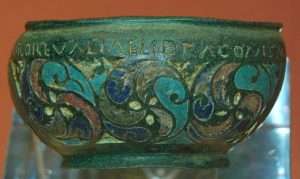
Found on wet lands just as the Rudge Cup was found down a well. Both 'south' of the 'Wall'.
Some time later, maybe as much as a hundred years later, the Notitia Dignitatum, a list of all the commanding officers and regiments of the Roman Army, lists per Lineam Valli (along the line of the Wall) Praefectus Numeri Maurorum Aurelianorum, Aballava (the Prefect of the Unit of Aurelian Moors, at Aballava. (A L F Rivet & Colin Smith, The Place-Names of Roman Britain, (Cambridge University Press, 1979), p.220). By this date, the regiment would have been recruiting locally, particularly from the sons of serving soldiers married to local women.''

''The signs Gemini and Virgo are alloted to Mercury. This association accounts for Virgo sometimes represented with the caduceus.''
And/or: ''Curiously enough, one of the few, if not the only, archaeological evidences of a cult of Virgo is to be found in Roman Britain. The prefect of a cohort stationed at the eleventh fort on Hadrian's Wall in Northumberland in the time of Severus emperors {third century}, raised an inscription to Virgo, in which the familiar figure, bearing her usual attribute, the ear of corn {specifera}, is the object of a syncretist worship which combines the Carthaginian Queen of Heaven, Virgo Caelestis, with the mother of the gods, with Ceres, with Atargatis, the Syrian goddess, yet she is still the JUST virgin goddess of the golden age: 'inventress of justice, foundress of the city'....'' ['Astraea: The Imperial Theme in the Sixteenth Century' / F. A. Yates].
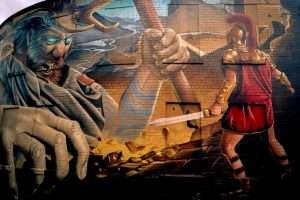
Altar stone to the above found within the same church: ''In a walled up doorway. THREE others found locally.'' N.B. Burgh - on - Sands = Second/Third fort along - from the WEST. The 'horned giant' mentioned 'twentythree' times along the wall.
Side note: St. Michaels Church near by {as there are all along the wall}.
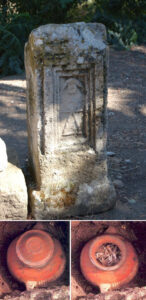
Carthage - tophet.
Found within the fort complex {others outside of it}: ''St. Michael being the warrior archangel. The church {unlike others} had two towers E/W. No window in the East one {for defensive purpose - from the borders of Scotland}. In the undercroft {cellar} of the west tower Anglo Saxon 'beast' carvings left behind. And in the passage way leading to the undercroft of the west tower are ''diamond shape'' scratchings {broaching} that {according to narrator} is a precursor to plaster work.'' [Anna Gray: 'Revealing Hadrians Wall: Part 1' / Mirthy].
Lozenge?
''The giant deity is known as Belatucadros and was worshipped in Celtic northern Britain from around 750 BC to 12 BC, particularly in Cumberland and Westmorland. In the Roman period between 388 AD – 400 AD he was identified with Mars and appears to have been worshipped by lower-ranked Roman soldiers as well as by Britons.'' ['Lancs Live' / internet].
Side note: ''All Soul's Day comes within the star sign for Scorpio.''
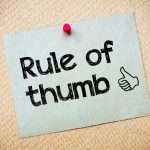
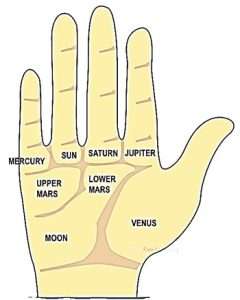
''The little finger is sometimes referred to as a pinky.''
And/or: ''Tom Thumb attempts to escape on a passing butterfly, but is caught and imprisoned in a mousetrap. He is freed by a curious cat and once more wins back the favor of King Thunston. Sadly, he does not live to enjoy it as he is killed by a spider's bite.''
Continued: ''The four forts listed do not match the first four forts listed on the Rudge Cup and Amiens Skillet. The second fort on the Staffordshire Bowl is Coggabata (Drumburgh), whereas the other two bowls have Aballava (Burgh-by-Sands) as the second fort. The reason for this discrepancy is unclear, but the small size of Coggabata may explain its omission from the Rudge Cup and Amiens Skillet. It is thought that Rigorevali Aeli means On the line of Hadrian's Wall, as Aelius is the family name of Hadrian. Draconis probably refers to either the manufacturer or the person for whom the bowl was made, Draco.''
''Line of sight'' as a means....?
''GAP'' to enlarge.
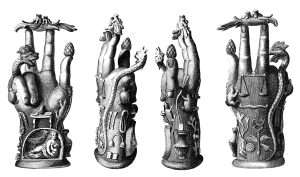
The hand of Sabazios. Thumb = pinecone?
''Draco is a constellation in the far northern sky. Its name is Latin for dragon. It was one of the 48 constellations listed by the 2nd century astronomer Ptolemy, and remains one of the 88 modern constellations today. The north pole of the ecliptic is in Draco.[1] Draco is circumpolar from northern latitudes. There it is never setting and therefore can be seen all year....Thuban (α Draconis) was the northern pole star from 3942 BC, when it moved farther north than Theta Boötis, until 1793 BC....The traditional name of Alpha Draconis, Thuban, means "head of the serpent".
A horned one?
''The ram-horned serpent is a well-attested cult image of north-west Europe before and during the Roman period. It appears three times on the Gundestrup cauldron, and in Romano-Celtic Gaul was closely associated with the horned or antlered god Cernunnos, in whose company it is regularly depicted....Other deities occasionally accompanied by ram-horned serpents include "Celtic Mars" and "Celtic Mercury". The horned snake, and also conventional snakes, appear together with the solar wheel, apparently as attributes of the sun or sky god.[9]
Triceratops (/traɪˈsɛrətɒps/ try-SERR-ə-tops;[1] lit. 'three-horned face') is a genus of chasmosaurine ceratopsian dinosaur that lived during the late Maastrichtian age of the Late Cretaceous period, about 68 to 66 million years ago in what is now western North America. It was one of the last-known non-avian dinosaurs and lived until the Cretaceous–Paleogene extinction event 66 million years ago. The name Triceratops, which means 'three-horned face', is derived from the Greek words trí- (τρί-) meaning 'three', kéras (κέρας) meaning 'horn', and ṓps (ὤψ) meaning 'face'.
Bearing a large bony frill, three horns on the skull, and a large, four-legged body, exhibiting convergent evolution with bovines and rhinoceroses, Triceratops is one of the most recognizable of all dinosaurs and the best-known ceratopsian.
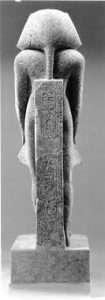
long or short?
And/or: ''In February 1307, Bruce resumed his efforts and started gathering men, and in May he defeated Valence at the Battle of Loudoun Hill.[286] Edward, who had rallied somewhat, now moved north himself. On the way, however, he developed dysentery, and his condition deteriorated. On 6 July he encamped at Burgh by Sands, just south of the Scottish border. When his servants came the next morning to lift him up so that he could eat, the King died in their arms.....Various stories emerged about Edward's deathbed wishes; according to one tradition, he requested that his heart be carried to the Holy Land, along with an army to fight the infidels.''

Brachiosaurus (/ˌbrækiəˈsɔːrəs/) is a genus of sauropod dinosaur that lived in North America during the Late Jurassic, about 154 to 150 million years ago.[1] It was first described by American paleontologist Elmer S. Riggs in 1903 from fossils found in the Colorado River valley in western Colorado, United States. Riggs named the dinosaur Brachiosaurus altithorax; the generic name is Greek for "arm lizard", in reference to its proportionately long arms, and the specific name means "deep chest"..... Brachiosaurus had longer forelimbs than hindlimbs, which resulted in a steeply inclined trunk, and a proportionally shorter tail.
CONTINUED: "Mixcoatl, the Aztec god of hunting, has as his companion a two headed deer {Janus link? i.e.,''God of beginnings, gates, transitions, time, doorways, passageways and endings. Janus presided over the beginning and ending of conflict {'struggle' ? and/or now from the ''feminine perspective? i.e.,anima?}.'' - while in Mayan tradition the double headed Dragon {double 'cube' link? and/or 'shadow' aspect} - sometimes appears with deer hooves. In the symbolic art of the Mayans, the deer appears at the base of supporting pillars {recall the 'human headed' ones as in say; the Egyptian/{Roman?} culture}} - suggesting that the animal was a foundation upon which both society and religion were founded. Human forms with deer heads are also a common feature of Mayan art. " ['The Element Encyclopedia of Magical Creatures' / J. and C. Matthews].
One could also say then ...'Upon that which the animal represents - in the internal sense of the 'word' ?
Question. Conspiracy theory? A universal one?
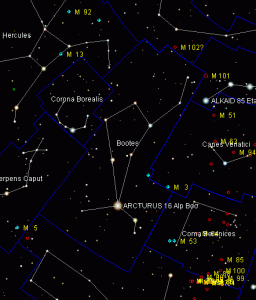
The Northern Crown with companions.
Analogy {in a different sense of the word,i.e.,S/W?}: "The old town lies at the end of a quiet country road that leads up from the station. At its center is the church of Notre Dame, on the north side of which is a breathtaking view of the valley of the Vonne and the woods that once formed part of the ancient forest of Coulombiers. The church itself is dominated by a two storey bell tower...Who knows how much of the atmosphere is due to the influence of Melusine {who is discreetly represented with bat wings and a serpent tail at the top of one of the columns} and how much to more orthodox {exoteric?} associations...The north door, that once joined the church to the priory, has an evocative semicircular arch. Its keystone shows a human head with a long beard and the pointed ears of a faun - whilst twentytwo other stones of the arch show figures of animals and men..." ['Melusine of Lusignan' / G. Knight]. Besides the obvious try ''23''.
Recall the semicircle of the philosophers. Enlarged elsewhere. Higher/lower?
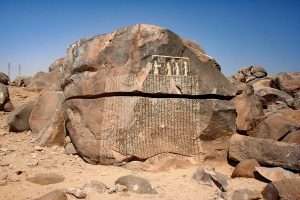
''Crack between the worlds''? Aberfoyle to enlarge.
AND/OR: ''Ring the BELLS that still can ring. Forget your perfect offering. There is a crack in everything. That's how the light gets in.'' {Prologue: 'Dreams of Isis' / N. Ellis].
"All planetary glyphs are composed of a few primary symbols: the circle, which is said to represent the wholeness of Spirit, the half circle which is the receptivity of the Soul, and the cross which represents Matter..." ['Saturn, Chiron and the Centaurs'].
And/or: "An astronomical house is a 30-degree section of space numbered from the horizon as a starting point. Thus there are six Houses below the horizon {totalling 180 degrees} and six Houses above the horizon."
IN/OF THE HORIZON?
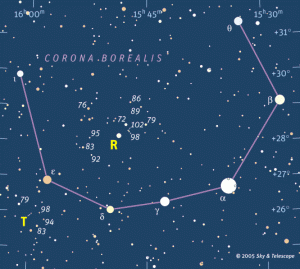
'The Northern Crown'. Question. How would the southern one be represented
"The 12th House should be understood, above all, as the end-phase of the semi-cycle which began in the 7th. In it, the realm of the 'sky' ends. This above the horizon realm is the realm in which our experiences find themselves centered around the feeling of participation in society, or in a universe of all-encompassing Spirit." [Page 8, 130 'The 12 Astrological Houses: The Way of Creative Accomplishment' / Dane Rudhyar].
Question. Does understanding the above help in defining the following?
"More than once Paris of Troy fires his arrows across the heavens , either to establish a 180 degree { u-turn?} panorama of the skies or to mark a straight 'line of sight' between stars in two constellations ....

Flat top?
A line drawn from Paris {Orion} extends to Persei, the flat foot of Perseus i.e.,'Paris drew his bow and let fly an arrow that sped not from his hand in vain, but pierced the flat right foot of Diomedes {Perseus}, going right through it and fixing itself in the ground...In the Iliad more Trojan warriors are killed than Greeks, and this means that fewer stars in 'Greek' constellations are identified during the fighting. To overcome this problem, Homer used the funeral games in Book 23 {'twentythree'} to describe in more detail the principle Greek constellations. In some cases contestants win 'prizes' - or stars - they already own. Meriones, for instance, is awarded two talents of gold, which represent his personal double star in Taurus. Diomedes is another contestant who also wins a prize he already owns - the large silver sword and scabbard he is awarded are already part of his constellation." ['Homer's Secret Iliad'].
Question. Any information on the 'left' foot?
N.B. Cusp in relation to 'spear {arrow?} point' ? Try ''wounded'' to begin with.
Side note: Marden Henge {near Stonehenge} - recently discovered. Many times larger than Stonehenge. A definite link between 'it' and the river Avon: "The monument itself is only 'D' shaped {semicircle} - Its not a complete enclosure {northern perspective?}, in fact the whole of the southern side is formed by the river Avon. A great big meander in the river... And a number of springs within the henge as well." ['The Flying Archaeologist'. Enlarged elsewhere].
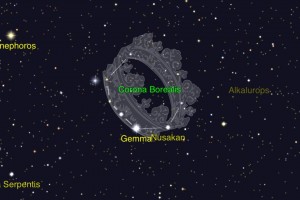
''Avon in Welsh means ''river''....''
Question. Chosen name for the river that those ''blue stones'' were taken to?
Try ''fir'' to enlarge.
SIDE NOTE: "Ares plays a prominent role in Book 5 of the Iliad, and when the narrative is examined for astronomical content it draws a remarkable picture of the motion of the red planet. A view reflected in several passages in the Iliad is that Ares is not to be trusted, and Butler's translation says, that he is 'a villian incarnate, first on one side and then another', before describing him as 'Sir Facing Bothways' {Janus?}. A. T. Murray uses the word 'renegade', while 'turncoat' is favoured by E. V. Rieu. Alexander Pope's translation sees Ares as defying the natural order, and declaims: 'Of lawless force shall lawless Mars complain? Of all the gods who tread the spangled skies - thou art most unjust, most odious in our eyes!' A literal translation which is at the heart of these variants, is 'changing from one side to another' - a truly Homeric and accurate description of retrograde motion. A second observation of the apparent orbit of Mars around the earth, Homer says that Ares is 'first in front and then behind Hector'. This relatively common event takes place over a period of a few weeks, and at the beginning of the sequence Mars rises before Orion and precedes the constellation across the sky - Ares is 'first in front'. But, as the days and weeks pass, Mars rises progressively later until it rises after Orion and follows the constellation across the sky - Ares is 'then behind Hector'..."
Something to ponder on: "I have another poem I would like to read. This one is by Rabindranath Tagore, from the Flight of Swans: The wind, you have made free therefore it lightly obeys your command; but me, you have loaded with burdens, with them I toil on. Passing from 'death' to death. Slowly I free myself from them, till empty handed I come ready to serve you''

karnac.

'Bird in the hand is worth....?
'Till empty handed I come, ready to serve you' to talk about the cycle of Saturn and its meaning. Because Saturn's orbit is roughly 28-30 years in length, and every seven to eight years there is a very strong Saturnian energy present, when in order to go forwards, we may need to look back {hindsight?}, like Janus, whom we mentioned." ['Saturn, Chiron and the Centaurs'].
'Raised hands'?
''Sometimes Saturn is known as the 'Guardian of the Threshold'..." Same book.
Great turning at hand? Enlarged elsewhere.
And/or: ''Life can only be understood backwards, must always be lived forwards." [From the book by Douglas Monroe].

Retrograde

Straight lines and curves. 90/180?
Continued: According to B. Cox {'Wonders of the Solar System: Order out of Chaos' / Yesterday / Satelite TV} - ''Understanding the retrograde motion of Mars didn't come easy. That's why it took over 2000 years to work out." Question. Do those 2000 years include Homers description of same? Question 2. Where did Homer get his information from?
'Retrograde Planets' / E. Sullivan.
N.B. Hector, who according to Homer was known as the ''Tamer of Horses''.
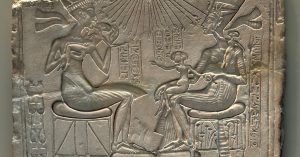
House Altar depicting Akhenaten, Nefertiti and Three of their Daughters, c. 1350 B.C.E. On limestone. Question. What are EACH sat on?
Something extra: Hippodameia {the bride at a 'marriage'} was also known as a 'Horse Tamer'. While recalling that Greek for Hippo = Horse. {Page 64 'Mabon and the Mysteries of Britain'}.
All in relation to the Chair of Lethe {of forgetfulness}, : ''that welds itself to the flesh, from which one cannot rise." Same page/book.
Recall the figures in the night sky. Sat on 'chairs'. Welded?

'light oxen': "I bring up an individual type as a point of departure to talk about. The one {'emotion'?} that is strongest will pull you first." [Page 4 'Stopping and Seeing' / Translated by T. Cleary].
Try ''hoof'' to enlarge - to get into a mind set - beyond ''galloping''.
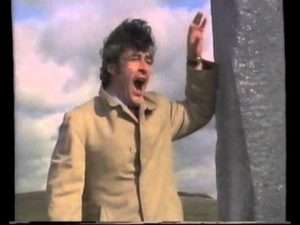 In the program 'Lost Cities With Albert Lin: Stonehenge' - Albert goes to Norway hoping for insight into Stonehenge. Plenty of animal figures sketched onto the 'face' of rocks - including animal foot prints. The ''expert'' concludes that whoever these individuals were they could not distinguish between reality and fantasy. ''It was all one and the same thing for them.'' For this reader ''walking between worlds'' would be more apt {i.e., relative to an understanding} - Of which the OBJECTIVE process is paramount. And if a true assessment then being grounded is the result. Which is not a fantasy aspect but a remedy for it.
In the program 'Lost Cities With Albert Lin: Stonehenge' - Albert goes to Norway hoping for insight into Stonehenge. Plenty of animal figures sketched onto the 'face' of rocks - including animal foot prints. The ''expert'' concludes that whoever these individuals were they could not distinguish between reality and fantasy. ''It was all one and the same thing for them.'' For this reader ''walking between worlds'' would be more apt {i.e., relative to an understanding} - Of which the OBJECTIVE process is paramount. And if a true assessment then being grounded is the result. Which is not a fantasy aspect but a remedy for it.
'On Having No Head: Zen and the Rediscovery of the Obvious' / D. E. Harding.

Two swimming reindeers on the tip of a mammoth tusk.
Side note: Also in same program Albert discovers Auroch hoof marks PURPOSELY preserved {Blick Mead - one mile away}. Antlers of same either side of the southern entrance to Stonehenge. The Orkneys {N. Oliver} recently discovering Cattle {cow?} bones North of this island. North {'female'?}. South {'male'?} OR vice versa? as a means....? Question. Where would the midpoint be between those two poles? {'Pillars'? - in the figurative SENSE of the word}.
He asks himself if reindeer were important to Stonehenge considering those seen in Norway. The reindeer - the female of which is the ONLY deer to bear antlers. All enlarged throughout.
Side note: ''The death of the seven year old Maid of Norway in 1290 led to thirteen claimants coming forward for the throne of Scotland - which led to the wars between Scotland and England by Edward the first.'' ['The Chase' / S15 EP19].
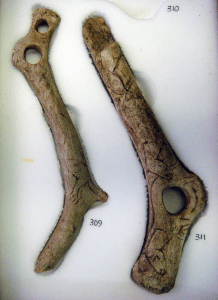
Upper paleolithic reindeer antler tools with figurative art. Horse sculptured not carved.
Question. What do 'horns' REPRESENT?
The Horn of Africa? {as a start point in the Macro sense of the word}.
Clue. What was the ''peak'' of non other than the Valley of the Kings known as? WHY ?
{i.e., in the Micro sense of the word}.
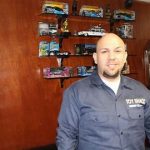
REFRESHER: ''The cheerful brilliance of the morning lent youth to Earth's old bones, touched the peak with gold, gleamed along the river and put the gardens en fete..." ['Her-Bak'].
'See' any {'keys'}?
''I will open my mouth in parables; i will utter things which have been kept secret from the foundation of the world.'' [Mathew 13:35].
Sermon on the Mount? {i.e., covered in 'vegetation' i.e., 'flowers'}.
''Poor in spirit''? BUT with a heart of 'gold'?
Question. What are the common factors between ''flowers'' and ''silence'' and the ''sea'' of Galilee and the Nile?
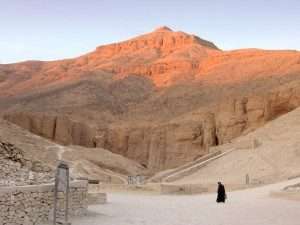
''She who loves silence''. Soul in relation to 'spirit'....as a means....?
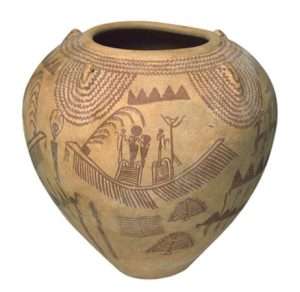
'Five' to enlarge. And/or: ''On the flat landscape of Cambridgeshire, the Gog Magog Hills appear as mountains. Magog Down is part of this gentle undulating chalk ridge, with vast open meadows. From Little Trees Hill, its highest point, tremendous views open up to the north and the City of Cambridge.''
From a different perspective; a different culture: "The 'spirit of Minoan art' is not something abstract.....''Spirit'' is openness and expansion of vision {'horizon'?}....In the passage cited above, Platon connected the very marked spirit of Minoan art with a particular deity, the only deity who, it was safe to assume, was a very special object of worship to the Minoans: the Great Goddess {snake goddess}. A reliable portrait of her on the peak of a mountain appears on a seal from Knossos. In the background we discern a mountain sanctuary, and facing the goddess is a male figure looking up at her and greeting her. The mountain is flanked by two lions {Aker lions?}...." [Page 7 'Dionysos: Archetypal Image of Indestructible Life' / C. Kerenyi].
Question. Athene who was born from the head of Zeus ''fully armed''. Were they ''facing'' each other?
From a different angle {45 / 90 or 180?}: ''In the Fenian legend of the ancient 'Dripping Hazel', the hazel appears as a tree of wisdom that can be put to destructive uses. It dripped a poisonous 'milk', had no leaves and was the abode of vultures and ravens, birds of divination. It SPLIT IN TWO when the head of the god Balor was placed in its fork after his death...'' [Page 177 'The White Goddess' / R. Graves].
Analogy: {and/or: something hinted at}: "To get a clear view will require a lot of hard work, for in one sense you will be embarking {'harbour'?} on a voyage of discovery, climbing a new peak of personal experience {El Qurn?}, and that is no easy task." [Page 12 from the book by Marian Green].
''Error runs down a plane - while truth has to laboriously climb its way uphill."
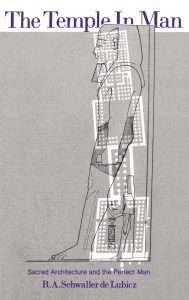
Whose leaning on who?
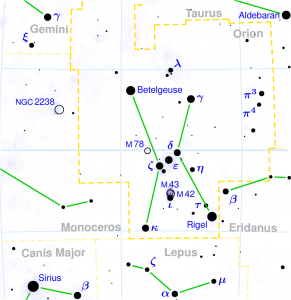
Fire AND water. What about the navel?
''In Greek myth, Orion had his vision restored by the rays of the rising sun.''
And/or: ''Toward the end of our trek, I felt we personified the last part of the Song of Songs:
Who is this coming up from the desert
Leaning on her Beloved? (Song of Songs, 8:5).''
'Buttress'?
A {practical} example: ''The road ahead will be long - the climb steep.'' [Election victory speech/ Barack Obama].
A working example {continued}: " It cannot be established with certainty what those who visited Eileithyia in her cave near Amnistos {dedicated to the 'origin of life'}, the harbour of Knossos, thought they saw there; but what ever they saw {epiphany?} they repeated the 'vision' that had made the stalagmites {shaped like a navel} into objects of the goddess cult.'' [Page 18 of the book by C. Kerenyi].
Question. What are stalagmites made of. What are they 'created' from? What do 'caves' and 'navels' represent?
Question 2. A mind set?

Queen of the Land of Punt. Facing each other? A distance to be travelled? 'Old crone'?

''The beautiful lady has come''. Younger/Elder?
Put all the above together to get a grip {'gathering/grasp' links} to the following: ''Gilgamesh ended up at the tavern at the end of the world. He wanted to get out of his head {Athene therefore 'female' link?}. He asked the beautiful barmaid the way to Ziusudra, whom, we have seen, is another name for Noah or Dionysus. He was a 'demi-god' who had never really died. Gilgamesh made a boat with punting poles topped with bitumen, such as those used by the marsh Arabs to this day, and went to meet him. Ziusudra said, 'I will reveal to you a secret thing....There is at the bottom of the sea a plant that pricks like a rose. If you bring it up to the surface {wet/dry link} you can become 'young' again. It is the plant of eternal youth.'' [Page 214 'The Secret History of the World' / J. Black].
All at sea.
To prick ones conscience.
And/or: "Many years ago the English psychologist, F. W. H. Meyes, suggested that - ''hidden in the depth of our being is a rubbish heap as well as a treasure house''.
Hatshepsut link?
 Something extra: ''Like her companion, the sun god Re, Hathor is a fiery solar deity. As goddess of many colours {'137'?} she constantly shifts her shape, becoming now 'Female Hawk', now, 'Cow of Gold', now, 'Lady of the Sycamore Tree', again, as 'Great Lady of Punt', she is the patroness of the fabulous land where the Egyptians went in quest of sweet smelling incense, myrrh, gold, spices and exotic animals.'' [Page 8 'Hathor Rising' / A. Roberts].
Something extra: ''Like her companion, the sun god Re, Hathor is a fiery solar deity. As goddess of many colours {'137'?} she constantly shifts her shape, becoming now 'Female Hawk', now, 'Cow of Gold', now, 'Lady of the Sycamore Tree', again, as 'Great Lady of Punt', she is the patroness of the fabulous land where the Egyptians went in quest of sweet smelling incense, myrrh, gold, spices and exotic animals.'' [Page 8 'Hathor Rising' / A. Roberts].
Bitter/Sweet. Sad/Joy to enlarge {to 'name' but two ''duality'' signatures/symbols/correspondances etc,].
 A working example: ''She waved it under my nose, images of tigers and elephants, crowded OPEN AIR market places, and billowing curtains of pink and saffron silk blew past my minds eye. I smelled the spices coriander and cardamom, then ginger, cinnamon, and flowers i did not know.'' [Page 15 'Book of Shadows' / P. Curott].
A working example: ''She waved it under my nose, images of tigers and elephants, crowded OPEN AIR market places, and billowing curtains of pink and saffron silk blew past my minds eye. I smelled the spices coriander and cardamom, then ginger, cinnamon, and flowers i did not know.'' [Page 15 'Book of Shadows' / P. Curott].
'Crossroads'.
And/or: "How did you know where to find me? Lubrin asked. 'It's not so long since the Boys House.' But his tree was the one thing he had never shared even with Dara. Dara saw the look on his face, and answered it as though the words had been spoken. 'There was the time when you tore your saffron kilt and left shreds of it hanging among the lower branches.'' [Page 50 'Sun Horse, Moon Horse' / R. Sutcliff].
And/or: "The horse had been one of Tigernann's, and was as sure footed as a goat on the plunging slope, Cradoc reined him in, and sat looking down at Lubrin, and from him to the birch saplings, the wind plucking at his saffron cloak." [Page 105].

light oxen. Best foot forward?

Qubbet el-Hawa or "Dome of the Wind" is a site on the western bank of the Nile, opposite Aswan, that serves as the resting place of ancient nobles and priests from the Old and Middle Kingdoms of ancient Egypt.
"I bring up an individual type as a point of departure to talk about. The one that is strongest will pull you first. As a treatise says: 'The immoral mind falls into hell, the covetous mind degenerates into a hungry ghost, the shameless mind degenerates into an animal.' This is what this means. Sometimes one first produces a wrong mind, or one may first produce a right mind; sometimes right and wrong arise simultaneously. This is likened to elephants, fish, and wind all making the the water of the lake turbulent. Elephants symbolise the external, fish symbolise the internal, and wind symbolises the simultaneous occurrence of both. Elephants also symbolise errors occurring externally, fish symbolise weakness of inner contemplation, being stirred by two extremes, and wind symbolises inside and outside mixed together, polluted, turbulent and confused." [Page 4 'Stopping and Seeing' / Translated by T. Cleary].
Side note: ''Cinnabar comes from Ancient Greek: κιννάβαρι[7] (kinnabari),[8] a Greek word most likely applied by Theophrastus to several distinct substances.[7] In Latin, it was sometimes known as minium, meaning also "red cinnamon", though both of these terms now refer specifically to lead tetroxide.'' [Wiki].
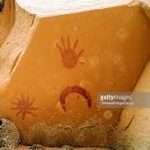 Continued: ''A floodgate of emotion suddenly opened....feelings locked behind a dam of mistaken purpose built by schooling and social upbringing and eons of history....a river of longing, like the Nile when Sirius rises, about to flood the desert of my life.....I sensed how fertile the soil, how fragrant the trees of myrrh, and how delicious the fig trees growing within that sacred delta would become as that ancient star rose on my horizon.'' [Page 44, same book].
Continued: ''A floodgate of emotion suddenly opened....feelings locked behind a dam of mistaken purpose built by schooling and social upbringing and eons of history....a river of longing, like the Nile when Sirius rises, about to flood the desert of my life.....I sensed how fertile the soil, how fragrant the trees of myrrh, and how delicious the fig trees growing within that sacred delta would become as that ancient star rose on my horizon.'' [Page 44, same book].
 Analogy: ''The 3rd Week of Advent is known as the Sunday of Joy. Joy must be allowed to gestate. Everyone should open his heart...should welcome it to allow it to be buried deep within him. And he should wait the flowering of it with patience....Because 'Christ' grows in us in real joy...the time will come when joy shall put forth roots and that richness shall be christs flower. We must never forget that it is this 'holy spirit' that sows this seed in us - and the spirit of wisdom, light and truth is given to us is countless ways - through books, through the spoken word, art, music and pictures.'' [From the 'Seat of Mary' {Kathisma Church} at the 'border' between Jerusalem and Bethlehem an octagonal church the 1st dedicated to same. / K. Nichols].
Analogy: ''The 3rd Week of Advent is known as the Sunday of Joy. Joy must be allowed to gestate. Everyone should open his heart...should welcome it to allow it to be buried deep within him. And he should wait the flowering of it with patience....Because 'Christ' grows in us in real joy...the time will come when joy shall put forth roots and that richness shall be christs flower. We must never forget that it is this 'holy spirit' that sows this seed in us - and the spirit of wisdom, light and truth is given to us is countless ways - through books, through the spoken word, art, music and pictures.'' [From the 'Seat of Mary' {Kathisma Church} at the 'border' between Jerusalem and Bethlehem an octagonal church the 1st dedicated to same. / K. Nichols].
Pine Martins?
And/or: ''According to ancient practice, monastics recite all 150 psalms on a regular basis. Originally, the hermits in the desert would recite the entire Psalter every day. With the spread of cenobitic monasticism, the practice began of chanting the Canonical Hours in common, and the Psalter thus became the foundation of the Daily Office, augmented by numerous hymns, prayers and scriptural readings. The custom grew of reciting all 150 psalms each week during the course of the services.
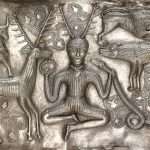
Seated?
To facilitate this, the 150 psalms were divided into 20 sections, called kathismata (Greek: καθίσματα; Church Slavonic: каѳисмы, kai-ismy. Meaning literally, "sittings". The name is derived from the fact that, in the Office as it developed in Jerusalem and Constantinople, the psalms would be read by one of the brethren while the others sat and listened attentively.
Each kathisma is further subdivided into three staseis (Greek: στάσεις), literally, "standings", because at the end of each stasis (Greek: στασις) the reader says: "Glory to the Father, and to the Son, and to the Holy Spirit..." at which all stand in honor of the Holy Trinity.'' [Wiki].
5x3 ?
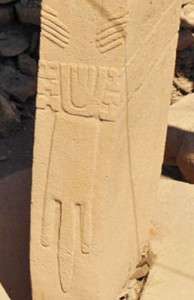
Bird print for a 'navel'? The 'center' of something? Swan {Cygnus} or goose?
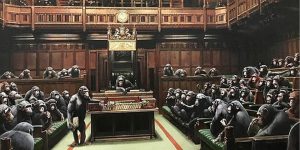
Could someone point out please - my right honourable Blobby friend!
A side step: "Some of the most interesting work upon Palaeolithic art has been that of Steven Mithen, who has regarded it as a store of information about animals that were difficult to find or to stalk. Thus, reindeer and most birds were portrayed relatively seldom because they were abundant and easy to kill. Some of the abstract designs, he suggests, are actually hoofprints, sometimes drawn in association with a picture of the animal to which they would belong. Twenty examples, all from the Pyrenees, are known as spear throwers carved with an ibex excreting an oversized turd {upon which 'birds' are sitting}. This, according to Dr Mithen, would be a way of teaching young hunters to recognize ibex spoor. He points out that carnivores are often drawn in association with the herds upon which they preyed, indicating that they could be both a danger to human competitors and, by leading them to game, a help. Likewise, the reason why animals are only partially portrayed {i.e.,in profile; therefore an aspect of something - i.e.,of the lower half?} - could be because a stalker would only partially see them: this would explain why horns and antlers in particular are often shown by themselves or oversized. Now, much of this argument is splendidly perceptive. But it does not explain why most of it has to be shown hidden deep in caves, nor why so much is geometric, nor why particular animals should be paired or superimposed." ['The Pagan Religions of the Ancient British Isles'. Emphasis, this readers]. Besides those highlighted try ''spear'' and ''oxen'' and/or ''deer''.
Ibex in relation to "sure footedness." ['Expedition with Steve Backshall' / S1 EP5].
And/or: ''turd'' in relation to something of the 'lower'. Bird 'higher' ?
Try ''cake'' i.e., in relation to ''food of the gods''. {3:10}.

Fake news: Pinky or Perky? Do they speak for Mother Russia or just Poo-tin? Which would Mother Russia choose as Groom of the Stool? STILL in that K.G.B mindset? i.e., practicing it on their own people BEFORE taking it ABROAD.
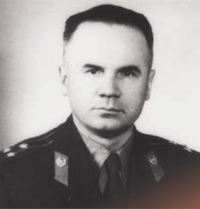
Oleg Penkovsky. A real Russian. A true Cossack. A true man. A team player on the world stage. R.I.P.
A working/practical example: ''Some of the 108 dream symbols found in Kenhirkhopeshef's book are images {recall Part 1} - that may appear in an individuals dream life. Certainly they also appear in the various chapters of the Book of the Dead, which were carved upon the tomb walls in the Valley of the Kings and Queens. The dream book for example, mentions a man eating his own excrement , while in the Book of the Dead there appears an underworld guardian of the gate whose name is Eater of His Own Excrement.'' [Page 108 'Imagining the World Into Existence: An Ancient Egyptian Manual of Consciousness' / N. Ellis].
'108'?
Analogy: The Dung Gate in the Valley of Hinnom - S/W Jerusalem {Kathleen Nichols/Magdala}.
Coincidence or a mind set?

90 V 180? {18x6}.
''One hundred and eight, the product of 12x9, appears often in Hindu and Buddhist traditions. It may be derived from the frequenly used 18 {'eighteen'}. The Gopis or cowgirls with whom the god Krishna dances and plays, number 108, and, in enlarged form, one speaks of 108,000 degress of reincarnation. For the Buddhists, 108 is the number of the arhat, the perfected saints, and prayer beads are also arranged in groups of 108. Likewise the Tibetan sacred scriptures, the Tanjur and the Kanjur, contain 108 parts. When a Tibetan prince or princess died, no fewer than 108 lamas were supposed to be present at the funeral.'' ['Mystery of Numbers' / A. Schimmel].
'Smith and Jones' to enlarge.
'Princes Daughter'?
'Twentyseven' X 4?

Lozenge mouth?
 And/or: "Ren means "the name" and represents the power of speech. One of the most powerful spiritual bodies on the mental plane, It uses the creative force of voice vibration. The hieroglyphic image of a mouth above ripling water says it all. Religious philosophy tells us that the genesis of the world began with the voice of god moving across the abyss. In the daily human realm as well, we have discovered that the words we speak create powerful vibrations and have an impact upon our environment. In his book The Hidden Messages in Water the renowned Dr. Masaru Emoto demonstrated this transformation....Perhaps a connection exists between the Egyptian hieroglyph ren and the oracular rune stones of the Vikings. The rune was a sacred image, like the hieroglyph, which telegraphed a whole constellation of meanings.
And/or: "Ren means "the name" and represents the power of speech. One of the most powerful spiritual bodies on the mental plane, It uses the creative force of voice vibration. The hieroglyphic image of a mouth above ripling water says it all. Religious philosophy tells us that the genesis of the world began with the voice of god moving across the abyss. In the daily human realm as well, we have discovered that the words we speak create powerful vibrations and have an impact upon our environment. In his book The Hidden Messages in Water the renowned Dr. Masaru Emoto demonstrated this transformation....Perhaps a connection exists between the Egyptian hieroglyph ren and the oracular rune stones of the Vikings. The rune was a sacred image, like the hieroglyph, which telegraphed a whole constellation of meanings. 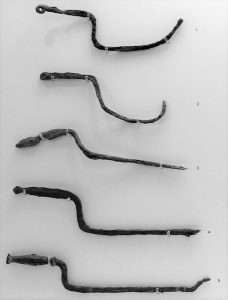 There may indeed be something to the 12th century legend that an Egyptian princess named Scota was sent into hiding, thus becoming the namesake of her adoptive country {'foster?'}....
There may indeed be something to the 12th century legend that an Egyptian princess named Scota was sent into hiding, thus becoming the namesake of her adoptive country {'foster?'}....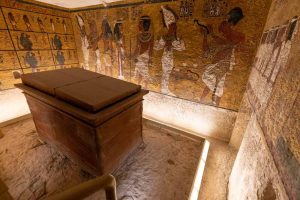 Ren reminds us to find our resonance, to speak our truth. The "Opening the Mouth" ceremony was an important rite of transformation that allowed the soul to affirm, pray, invoke, and thank, especially thank. In the Sanskrit, chanted mantras meant breathing with the om sacred vowels. In the Hebrew alphabet, those unwritten vowels became flames of light illuminating each word.....Say my name that i might live says the Coffin Texts." [Page 188-93 'Hieroglyphic Words of Power' / N. Ellis].
Ren reminds us to find our resonance, to speak our truth. The "Opening the Mouth" ceremony was an important rite of transformation that allowed the soul to affirm, pray, invoke, and thank, especially thank. In the Sanskrit, chanted mantras meant breathing with the om sacred vowels. In the Hebrew alphabet, those unwritten vowels became flames of light illuminating each word.....Say my name that i might live says the Coffin Texts." [Page 188-93 'Hieroglyphic Words of Power' / N. Ellis].
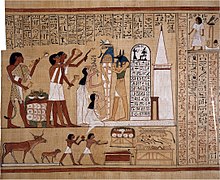
'Stool'?
And/or: I support my thesis by the existence, until a few years ago, of another sacred shoulder-blade of Pelops in the precinct which his great-grandson Hercules built in his honour at Olympia. Now, according to the myth, Pelops had only one sacred shoulder-blade, the right one; yet nobody has ever questioned the genuineness either of the relic at Olympia or of the Palladium. The history of the Olympian blade is this. During the siege of Troy the Greeks were told by an oracle that the only offensive counter-magic to the defensive magic of the Palladium preserved in the Citadel of Troy was the shoulderblade of Pelops which a tribe of Pelopians had taken to Pisa in Italy. So Agamemnon sent for the thing, but the ship that was bringing it to him went down off the coast of Euboea. Generations later, a Euboean fisherman dragged it up in his net and recognized it for what it was—probably by some design carved on it. He brought it to Delphi and the Delphic Oracle awarded it to the people of Olympia, who made the fisherman its pensioned guardian. If the bone was the shoulder-blade of a sacred porpoise, not of a man, the difficulty of Pelops's having had more than one right shoulder-blade disappears. So does the difficulty of believing that when boiled and eaten by the gods he came alive again—if the fact was that a new sacred porpoise was caught and eaten every year at Lusi by the devotees of Deo. Does all this sound reasonable? ['The White Goddess' / R. Graves].
Boiled/roasted.
Refresher: "The longer in hot water the stronger one gets."
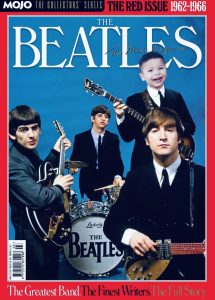
Community work? Do they talk about anything else? Teamplayers?
108 bell strikes in Tokyo to bring in the the New Year of 2024.
"Yuri Gagarin, a Soviet pilot and cosmonaut, became the first human to journey into outer space on April 12, 1961. He travelled on Vostok 1 and completed one orbit of Earth in 108 minutes."
 And/or: Among other things found in Xanadu was a tomb capstone found with Arabic script, indicating a melting pot {'furnace'} of all cultures. All faiths are free to worship, and earns Xanadu the nickname: 'The Place of 108 Temples'. An important city along the Silk Road.'' ['Blowing Up History' / S9 EP11].
And/or: Among other things found in Xanadu was a tomb capstone found with Arabic script, indicating a melting pot {'furnace'} of all cultures. All faiths are free to worship, and earns Xanadu the nickname: 'The Place of 108 Temples'. An important city along the Silk Road.'' ['Blowing Up History' / S9 EP11].
N.B. 'Pavilion' mentioned.
''The Silk Road (Chinese: 絲綢之路)[1] was a network of Eurasian trade routes active from the second century BCE until the mid-15th century.[2] Spanning over 6,400 kilometers (4,000 miles), it played a central role in facilitating economic, cultural, political, and religious interactions between the East and West.''
What about N/S?
''The Xanadu in the poem was inspired by Shang-tu, the summer residence of Mongolian general and statesman Kublai Khan (grandson of Genghis Khan). You might also recognize "Xanadu" as the name of the fantastic estate in Orson Welles's 1941 film Citizen Kane.''
''Xanadu is an imaginary city in Samuel Taylor Coleridge's mysterious poetic fragment “Kubla Khan: Or, A Vision in a Dream.” It is named for a city mentioned in a book by Samuel Purchas, which had been read by Coleridge shortly before the fevered composition of his poem.''
''Glass'' to enlarge.
Side note: The Wandlebury Horse measures 108 feet from nose to tail.
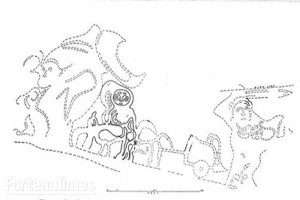
What does 'Limestone' represent?
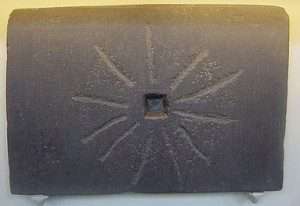
At the outset, the 'twentyfive' Dynasty ruler Shabaka - proclaims himself the agent of renewal at Memphis, because he has ordered that this damaged text: 'a work of the ancestors' which he has found in a 'WORM eaten condition', should be recopied....Shabaka becomes the son of his father, the Memphite Ptah-South-of-his-Wall, as well as the renewer of royal tradition.'' [Page 39 'My Heart My Mother: Death and Rebirth in Ancient Egypt' / A. Roberts]. 'Wolf' to enlarge.
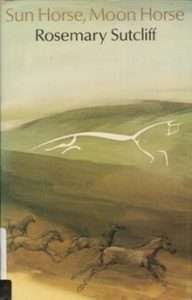
 ''Although only a modest 71 metres above sea level, the Gog Magog Hills {'ancestor' Hills?} have attracted myth and legend since the middle-ages. Writers, poets, newspapers and now the internet all tell stories about giants, knights, pagans, gods, chalk patterns on the hillside and ley lines. Gog and Magog are Greek gods.
''Although only a modest 71 metres above sea level, the Gog Magog Hills {'ancestor' Hills?} have attracted myth and legend since the middle-ages. Writers, poets, newspapers and now the internet all tell stories about giants, knights, pagans, gods, chalk patterns on the hillside and ley lines. Gog and Magog are Greek gods.
One ghostly tale comes from Gervase of Tilbury who, in 1219, told that Wandlebury was once ruled by a dark night-rider who seemingly no mortal could defeat. Anyone brave enough to test their prowess had to ride up into Wandlebury on a moonlit night and cry "knight to knight, come forth!". The warrior would appear on horseback, ready to fight until he or his opponent was dismounted."
Heliopolis to enlarge.
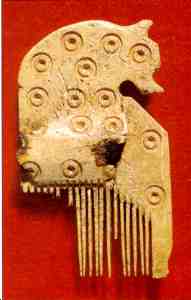
Comb.

Bridge over troubled waters?
SIDE NOTE: The common beliefs about the end of the world at the time Jesus began his teachings included several key components. The first sign of the end would be the rebellion of Israel, God’s people, against the evil forces of Gog, the evil king of Darkness. Gog was identified by all as the Roman Empire. In the one hundred years or so prior to Jesus’ birth, several such rebellions had taken place. One, led by Judah Maccabee, had almost succeeded. Every attempt at a revolt, however, only served to tighten Rome’s grip.
AND/OR: Under this new standard, Constantine’s army drove Maxentius’s legions into the Tiber, where most of them died. Constantine entered Rome and was proclaimed emperor of the West. Gog, of Gog and Magog, the evil rulers of the world according to Hebrew eschatology, was now at least nominally a Christian. ['The Mysteries of the Great Cross at Hendaye'].
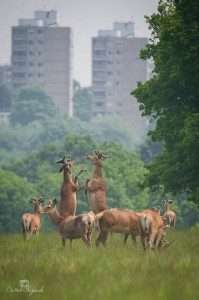

A leap across a gap?
Continued: "In the woman's meditation the Self appeared as a deer, which said to the ego: ''I am your child and your mother. They call me the 'connecting animal' because i connect people, animals, and even stones with one another if i enter them. I am your fate or the 'objective I.' When i appear, I redeem you from the meaningless hazards of life. The 'fire' burning inside me burns in the whole of nature. If a man loses it, he becomes egocentric, lonely, disorientated and weak." ['Man and his Symbols'. Mentioned elsewhere].
REFRESHER: {exercise?}: "Built into the plaza floor was a cylindrical cist lined with stones that held the remains of a women buried in a cross legged position. The tomb was subsequently re-entered in a burning ritual that blackened the upper part of the skeleton. The lower legs were left in place, and a deer skull and a decapitated human skull were placed on the floor..." [Enlarged elsewhere].

Austral Island paddles to enlarge.
And/or: Ancient Aliens program attempting to define the meaning of reptilians throughout all cultures. {'Ancient Aliens' / Reptilians. Episode 12}. To understand their true meaning - define this subject. AS is the case with...
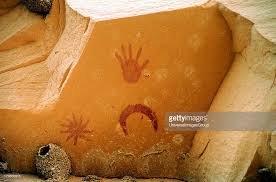
Any mazes found? Enlarged elsewhere. Try B. Cox. Left or right hand? Waxing or Waning? Lunar nodes?
"It is still quite common to come across curiously striated hills, roughly conical in shape but with flattened tops, and to find in connection with them an accompanying folk tale of the Great Worm which, meeting its fate at the hands of the local Hero or Saint, squeezed the hill in its coils, imprinting the land with the shape of its dying form. Here is embodied the great change which over took the Dragon Power {J. Woodroffe?} and its relationship with mankind....{FROM spirit INTO soul?}. The serpent is a symbol of the 'magic' power of the earth {i.e., they live in holes/caves and come out during the day to bath in the sunlight + shed their skin = death/rebirth etc.} - its sinuous form is a subtly changing living maze, closely associated with initiatory experience...For the Hopi Indians of Arizona the symbol of the maze is that of the Mother, and represents a passage through different levels of understanding....  It points the way through symbolic truth to actual experience - the 'way of the serpent' being synonymous with the way of the earth, and both represented by the initiation of the maze. Hills associated with same = Glastonbury and the mound of Silbury Hill...And one of the most important = Avebury, all associated with earth mysteries." [Page 58/9 'The Western Way' C+J Matthews].
It points the way through symbolic truth to actual experience - the 'way of the serpent' being synonymous with the way of the earth, and both represented by the initiation of the maze. Hills associated with same = Glastonbury and the mound of Silbury Hill...And one of the most important = Avebury, all associated with earth mysteries." [Page 58/9 'The Western Way' C+J Matthews].
Try ''flat tops''.
N.B. The common factor - regardless of whether one agrees with the above opinion = ALL of a southern position. Coincidence or a meaningful one?
Question. S.W OR S.E or both?
Grey Worm? {Game of Thrones}.

Broad or narrow shoulders? 'Flat' top? Male/female. Shadow {ego?} / anima. All as a means....?

Snake forms?
Recall St. Patrick and his association with NO snakes. Or places like Rhodes Island where ''deer'' have rid the area of them.
'Snakes' / 'grace'. {lower/higher?}. As a means...?
Refresher: {and/or clue?}: "Gudea made offerings of honey and butter when the foundations were laid; when the building was finished an auspicious day was waited for, and when it came the image of the god was removed to the new temple, and Gudea sprinkled the ground with oil and set out offerings of honey, butter, wine, dates, grain mixed with milk, foods untouched by 'fire', for the gods."
"The burial chamber of the tomb of Ramses VI {Thebes} - is situated at the Western end of galleries hollowed several hundred yards into the rock. On the North wall the mysteries Book of Aker, the entity of terrestrial powers, is represented. According to the myth, Nut, the Sky, swallows the sun each evening and gives birth every morning, 'younger' than it was the evening before. It is the mystery of this regeneration that is the subject of the Book of Aker. The two middle registers, astral in character, expresses the different aspects of the sun's regeneration. One of these shows the coagulation of cosmic substance taking place within a funnel outlined by the coiled serpent Mehen. The arms 'lifting up' from all sides expresses better than the words this glorious renaissance. [Extract from the book 'Egyptian Mysteries'].
'Double seven'?
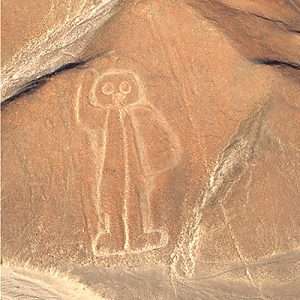
What's in the bag?
'Younger' in relation to ''raised arms'' to define something - OTHER - than the obvious, i.e., something more than just the daily rebirth of the sun. Question. Pagan obsessives?
'Mans Search for Meaning' / Viktor Frankl.

Eternal young guy?
"Then in Gemini, the youthful upstart feels its way out into the world - senses, touches, smells, inquires into, pieces together, classifies and gives a name to everything." [Page 168, 'The Zodiac as the Universal Matrix'].
Try ''twin'' / ''young'' / ''child'' / to put a name {clothed?} to those {as yet} bare bones {keys}.
A working example: "The story of Arthur was a tragedy ending in failure. The individuals who created it in the Middle Ages, using Bardic material and giving a Christian dress to pagan Mysteries - had to follow the lines laid down for them {'line of sight'}.
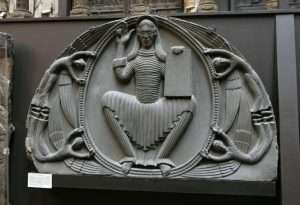
"dress?"
The Mystery story of the Round Table became a mythology in which the two sides of the coin, or double sided shield {'shadow'?}, were an integral part of the Mystery. The neophyte was shown what the hero attempted to do and why he failed. You will understand this better if i compare it with the Qabalistic....
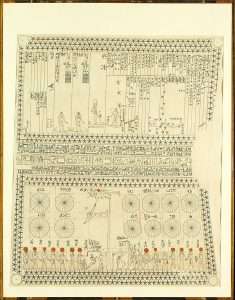
Astro ceiling in Senenmut bare tomb chamber. 'Naked'?
In the Qabalistic glyph the ten Holy Sephiroth are shown as the Tree of Life with the ten averse Sephiroth or Qliphoth, represented as REFLECTED in the waters under the earth beneath them. So you have two separate Trees just as the tree growing by the bank of a river would be seen reflected in the water as a tree with its branches downwards. That is the Rabbinical method, but in the Arthurian method it is as if the two Trees, having been depicted on a single piece of paper, the paper were folded at the point of junction {'90 degrees'?} so that the Holy and averse were brought into juxtaposition." [Page 69 'The Arthurian Formulae' / D. Fortune + M. L. Brown + G. Knight].

Flat top? Question. Who first witnessed the 'resurrection'?
And/or: "You can make a classification of different types of polarity functioning, e.g. Guinevere and Galahad, or Arthur and the Lady of the Lake. The principle running through all is that of magnetic relationship {'gravity'?}.....There are also two types of achievement of the Knights of the Round Table. They are few who achieve the quest of the Grail, and they are virgin and the Grail is in the custody of maidens. But there are also the Knights who become seneschals of castles, who govern districts for the king, and they marry. Knights fall into one or the other type, and some fall between 'two stools'....So you have Grail Knights and Castle Knights: two different formulae." [Page 71/2].
'Evolution'.
The author of 'Galactic Alignment' attempts the same in relation to..."The ancients understood that that our supreme source and center is the Galactic Center, and they orientated there belief systems and cosmologies around it."
ONLY using his knowledge of all the combinations of solstice and equinoxes relative to the zodiac - but without understanding such keys as ''crossroads'' and ''throne'' in their broader {universal} context - all in relation to what Aker represents {i.e., E/W}.
Question. What was found at the next 'stage' on {forward?} at Dendera? {N/S?}.

"We may express this formula by the symbol of the equal-armed cross, in which the vertical line represents the continuity through time of the relationship of generation to generation, and the horizontal line represents functional polarity in the ever passing present. Viewed in this manner, the Christian cross is an unbalanced symbol. The equal-armed cross, which is the cross of Nature or the 'Elements', is a symbol of power in Equilibrium....Thus the stability in continuity of the race is a different factor from the polarisation of individuals. And these two lines intersect at one point only, and their extended length is free in space." 'Ancestors / market place'. [Page 74/5].
Define the parts to understand the whole, i.e., as an example - What does the word ''whole'' relate to - ''inner'' or ''outer''?
And/or: Abydos in relation to say - Thebes.
And/or: {refresher}: "We have come now to our study in Libra, which the sun enters at the fall equinox." Transcendent third link?
Leo/Virgo in relation to Libra. First six signs below the 'horizon'. Later six above it. All as a means...?
"Every part of the human being is linked with some part of the cosmos. We wished we had a mediaeval image of the zodiacal man to show the zodiacal rulerships...The head is ruled by Aries, the throat by Taurus, the feet by Pisces. You see then that the head and feet were linked with the two extremes of the zodiac. In the zodiac circle they touch..." ['The Zelator'].
Question. What was buried at Abydos. What does it imply?
And/or: A working example: "What point would there be in living all of the time in an abstract world', asked Abushed. 'Don't be afraid. Everyone finds himself in the world where he belongs. The essential thing is to have a fixed point from which to check its reality now and then..." ['Her-Bak']. Try ''center'' as a means...?
'Head of the corner' ?

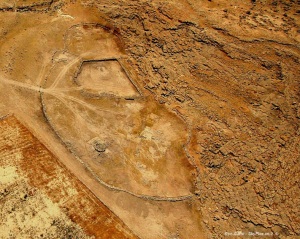
 The process of iridescence involves constructive interference, where light waves combine to reinforce each other, increasing the vibrancy of the reflected color. Destructive interference occurs when the crests and troughs cancel each other out, dimming the color. As the observer's viewing angle shifts, the colors of the iridescent object change depending on the varying degrees of constructive and destructive interference.
The process of iridescence involves constructive interference, where light waves combine to reinforce each other, increasing the vibrancy of the reflected color. Destructive interference occurs when the crests and troughs cancel each other out, dimming the color. As the observer's viewing angle shifts, the colors of the iridescent object change depending on the varying degrees of constructive and destructive interference.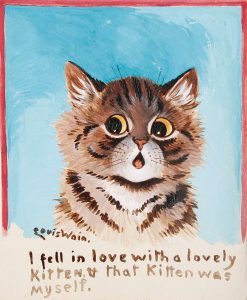 This adaptation is not only visually appealing but also serves important functions in the avian world, such as camouflage, communication, attracting mates, and thermoregulation. The ability to change colors based on light conditions and viewing angles makes iridescent feathers a remarkable and versatile feature of many bird species.
This adaptation is not only visually appealing but also serves important functions in the avian world, such as camouflage, communication, attracting mates, and thermoregulation. The ability to change colors based on light conditions and viewing angles makes iridescent feathers a remarkable and versatile feature of many bird species.